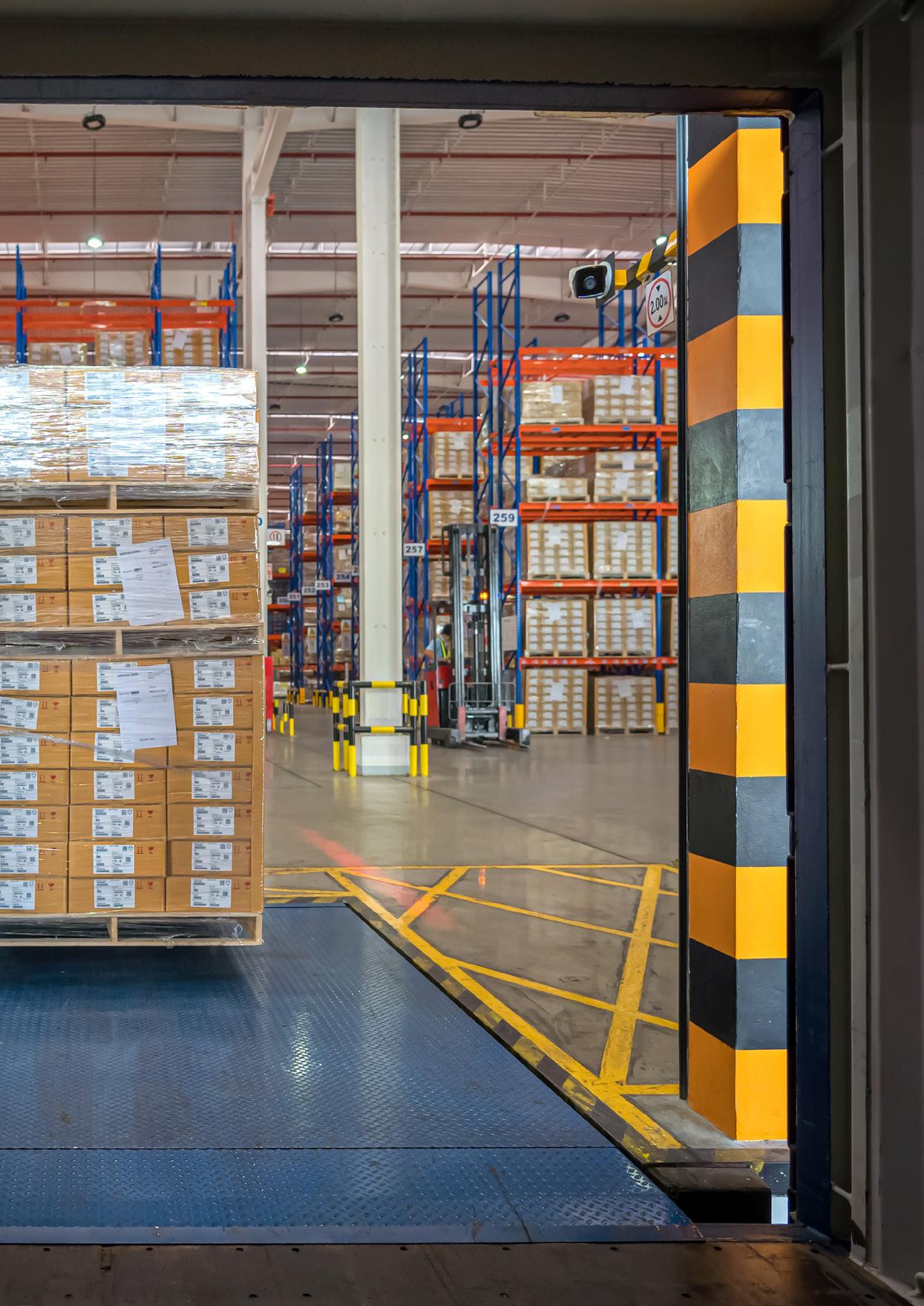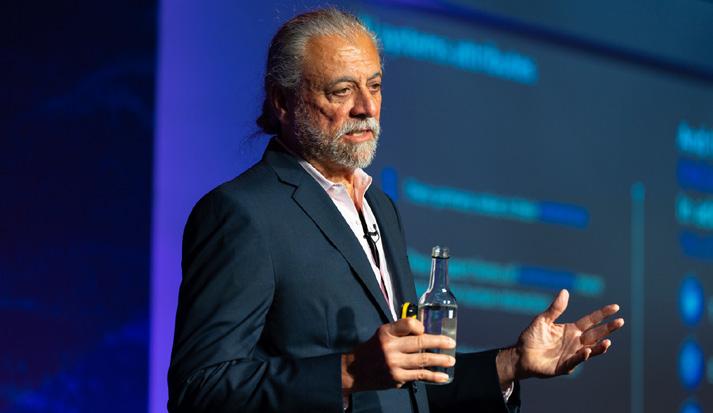REMOTE WORKFORCE SOLUTIONS
OPENAI: JUST HOW HUMAN-LIKE IS CHATGPT?
THE FUTURE OF SUSTAINABLE SMART HOMES THE NEXT PHASE OF FINTECH AND INSURTECH APPS
RAKUTEN SYMPHONY UNVEILS ITS REVOLUTIONARY MOBILE -ASA- SOFTWARE MINDSET
A RADICAL FUTURE THAT’S ‘


REMOTE WORKFORCE SOLUTIONS
OPENAI: JUST HOW HUMAN-LIKE IS CHATGPT?
THE FUTURE OF SUSTAINABLE SMART HOMES THE NEXT PHASE OF FINTECH AND INSURTECH APPS
RAKUTEN SYMPHONY UNVEILS ITS REVOLUTIONARY MOBILE -ASA- SOFTWARE MINDSET
A RADICAL FUTURE THAT’S ‘














Innovators are paving the way for a more resilient, sustainable and efficient future. The rules have changed. It’s time for DISRUPTION.
Tech LIVE Virtual returns to highlight the innovators changing the industry through expert keynote speakers, interactive fireside and panel discussions. This exclusive 1-day virtual event will bring together the greatest voices in the industry for an essential deep dive into the future of Technology, AI and Cyber.
Brought to you by BizClik, Technology, AI and Cyber Magazines, the event will shine a light on essential topics such as the AI revolution, quantum computing, the virtual workplace, technology’s place in sustainability and much more.

Position your business as a pioneer in Technology and showcase your values, products and services at Tech LIVE Virtual.





This is your chance to share your innovations with the technology community by making an impact in front of fellow decision-makers and influencers as well as accessing potential partners via an active and engaged audience.




See you on the 8th June 2023.
It’s time for DISRUPTION.



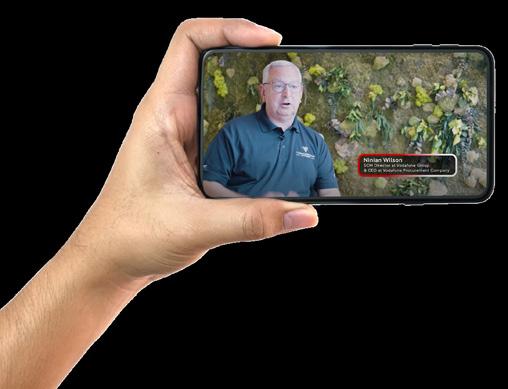
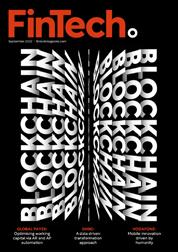
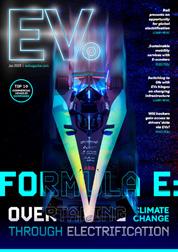


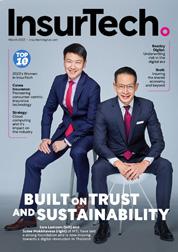


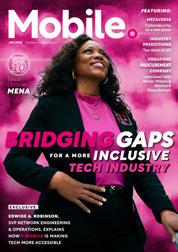
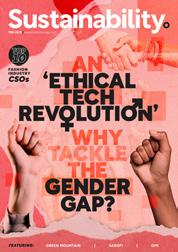



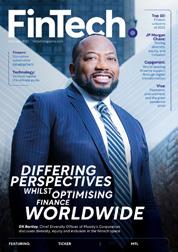





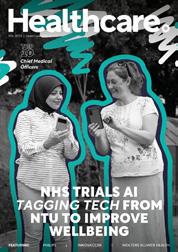






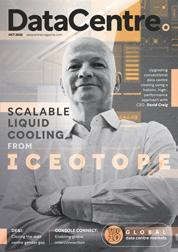
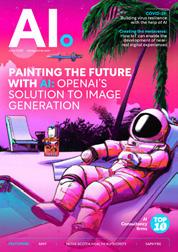
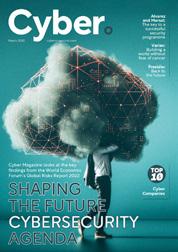
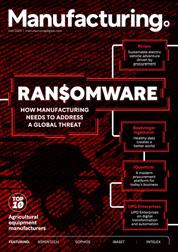

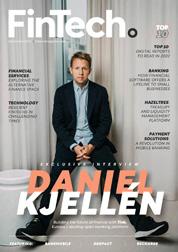

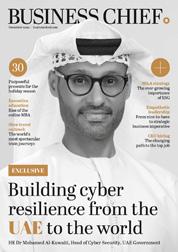
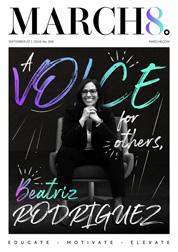
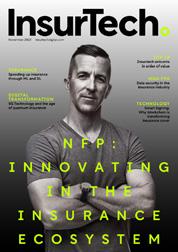
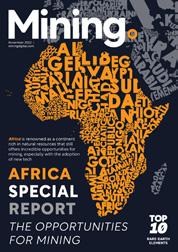

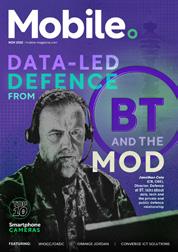
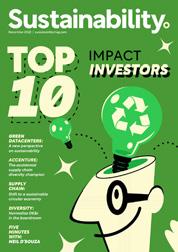

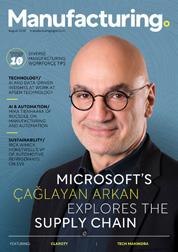
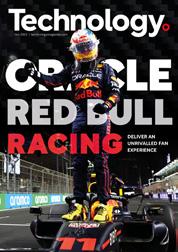
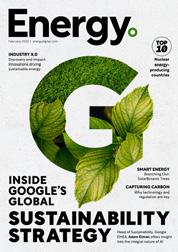

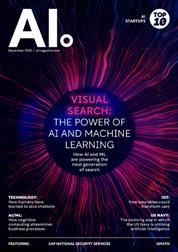

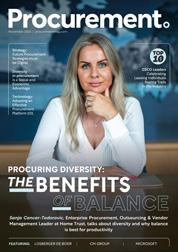

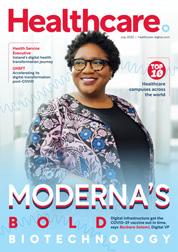



We produce Digital Content for Digital People across 20+ Global Brands, reaching over 15M Executives

Digital Magazines

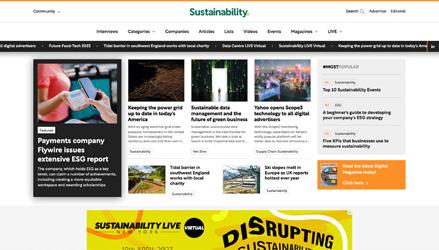





Websites
Newsletters
Industry Data & Demand Generation
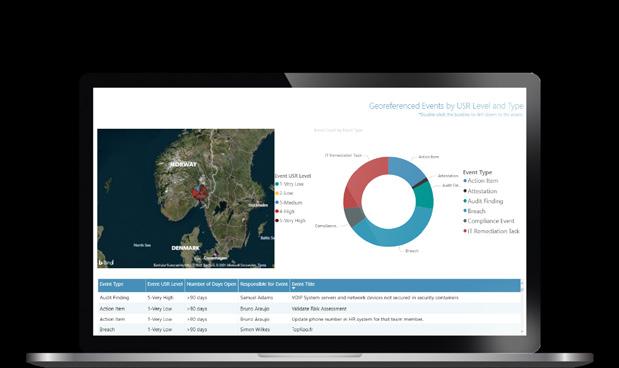

Webinars: Creation & Promotion

White Papers & Research Reports
Lists: Top 10s & Top 100s
Events: Virtual & In-Person

Work with us


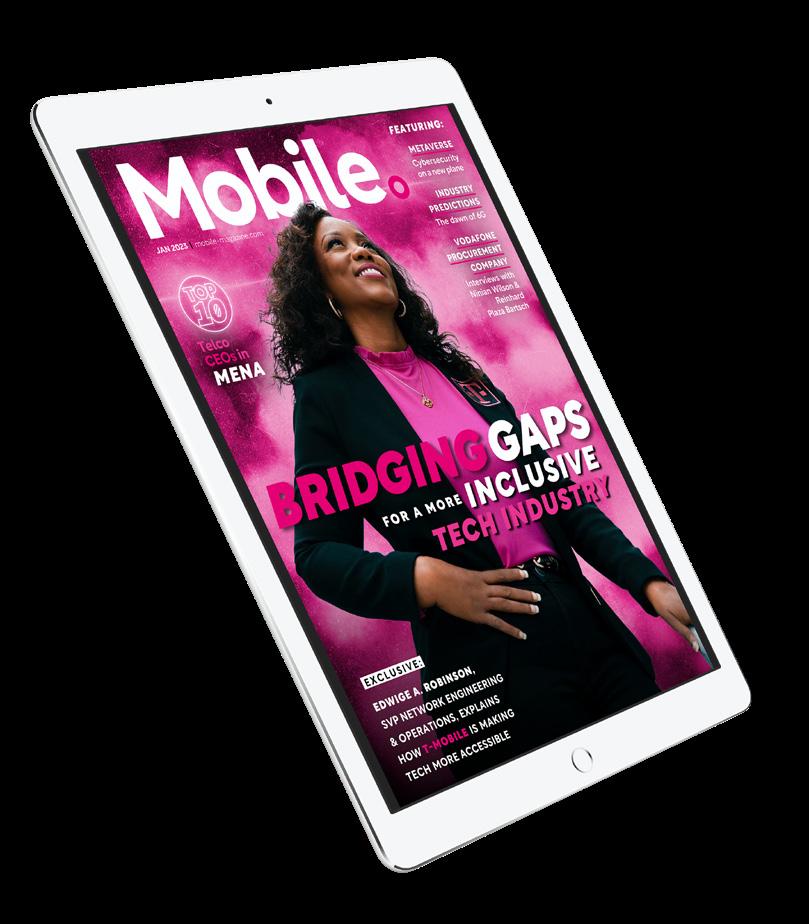
Digital transformation is far from losing its buzzword status. However, an all-too-often neglected element of innovation strategies is garnering the support of employees – the current state of healthcare transformation serves as a clear warning for ‘what not to do’
With the advent of smart cities and their associated interconnected technologies, the stakes for digital transformation have never been higher.
And, when we look at the potential capabilities offered by AI, IoT, ML and so on, it’s hard not to get excited. But, as a tech writer, that’s very easy for me to say. What about those who don’t spend their days writing about pioneering new technologies? If you’re unfamiliar with the tech sphere and its innovations, then these tools could easily seem like efficiency obstacles or unnecessary add-ons.

In a recent report, it was revealed that a staggering 99% of healthcare professionals in the UK’s NHS want the freedom to focus on patient care but feel that the abundance of technology is taking time and energy away from their core tasks.

“IT leaders face a real quandary in trying to capitalise on the opportunities that digital technologies bring, but also in limiting the disruption and stress that accompanies huge changes to how staff work when patient demand and staffing levels are so critical,” says Liam Cahill, an advisor to national bodies and frontline providers in healthcare.
So, in this month’s issue, I first explored the latest developments in healthcare technologies, then, secondly, exactly how the industry is planning to adopt them more seamlessly into the future.
JOSEPHINE WALBANK josephine.walbank@bizclikmedia.com
“A digital transformation isn’t just about getting the best tech in place quickly –it can only be implemented successfully if teams and users are on-board with what you are doing”

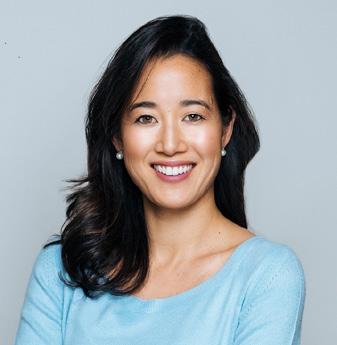











030 RAKUTEN SYMPHONY
Why telecom’s hopes and dreams hinge on software

062 T- MOBILE
Value leadership and T-Mobile’s consumer supply chain

094 SANDVINE
How ‘App QoE’ can increase profitability while improving subscriber satisfaction
120 BELL
Evolving towards the finance of the future through data and analytics

150 TATA CONSULTANCY SERVICES
TCS drives e-mobility through future-ready ecosystems
180 SAP
SAP’s Sam Castro on AI and risk resilience in manufacturing
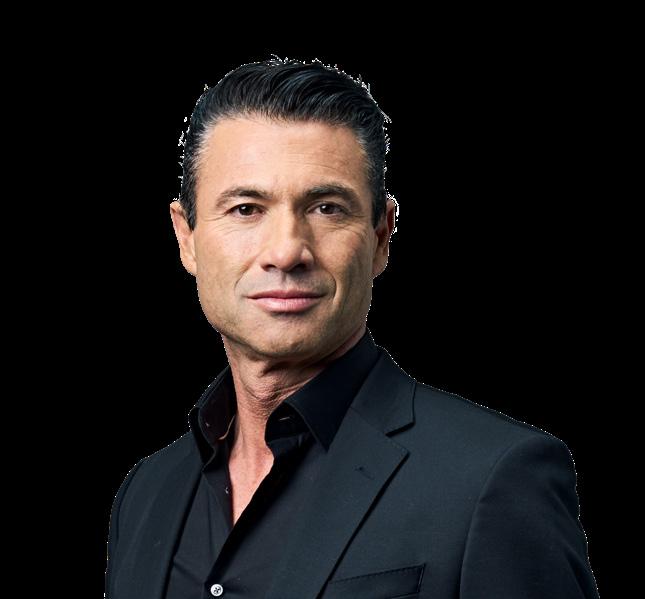
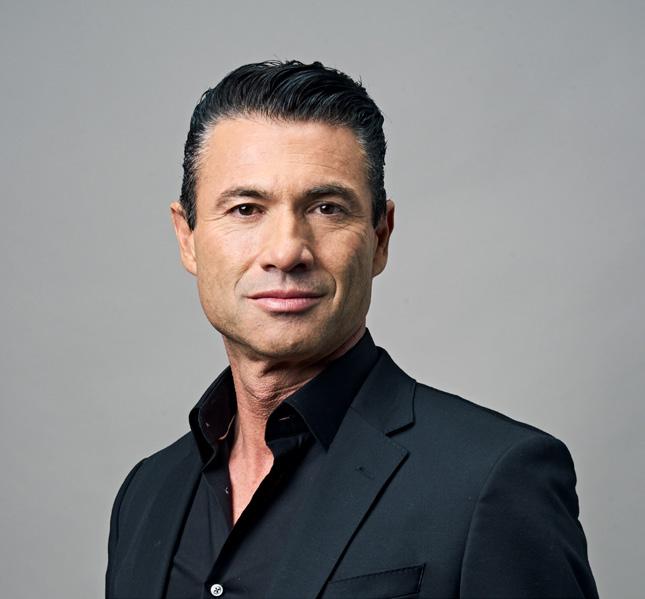


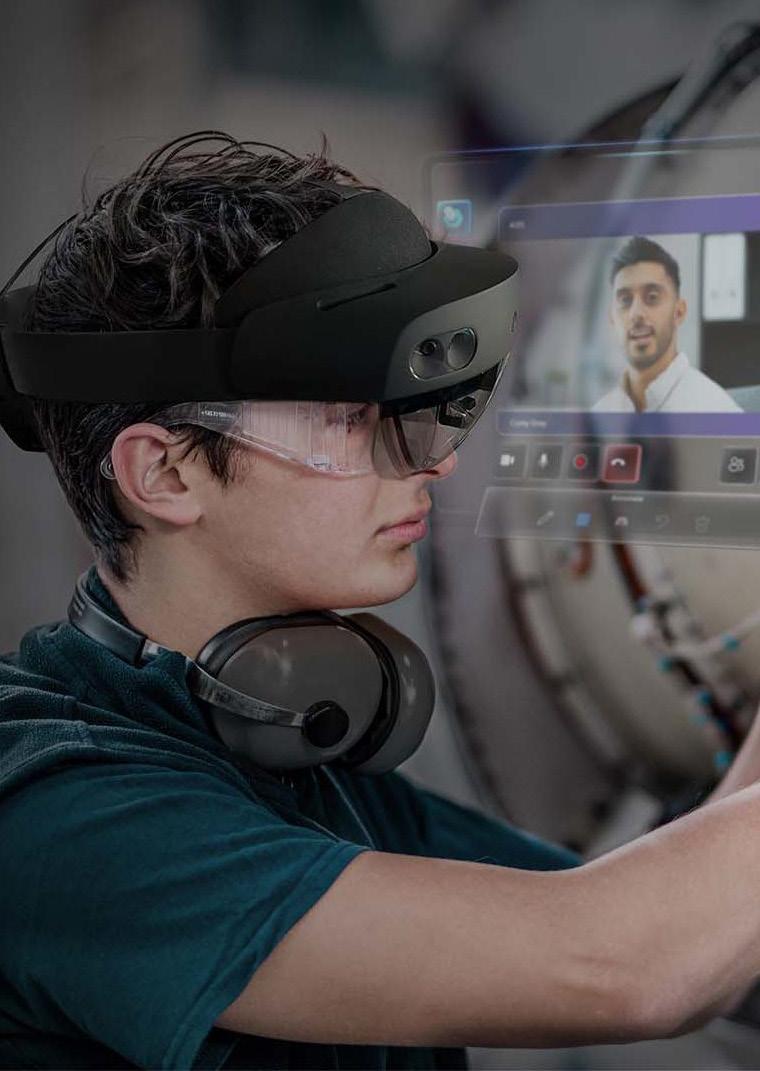
Microsoft’s pioneering VR technologies are being deployed across many of Toyota’s American manufacturing sites to improve the efficiency of their automotive assembly processes.
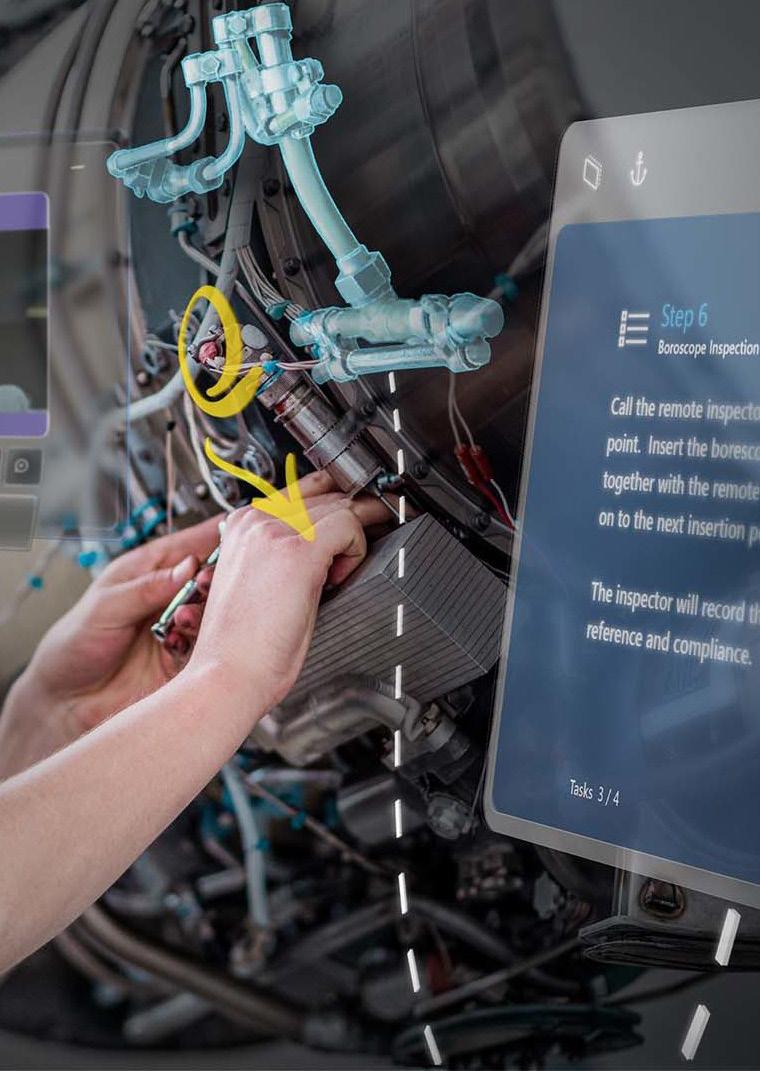
By utilising the HoloLens 2 (Microsoft’s mixed-reality headset), teams across the country have been able to collaborate,
conduct training, and solve critical problems faster.
Currently, teams at six of the US Toyota Logistics Centres are using the HoloLens 2. In the near future, these headsets will be implemented in sites across Canada and Mexico, with further expansion plans already in the works.
It's


time for a change. And we'd like to have our name and our brand stand in that new chapter of telecom history
Rabih Dabboussi Chief Business Officer Rakuten SymphonyBY THE NUMBERS
58%
These figures come from a new survey conducted by Outform, which also revealed that 45% of shoppers purchasing consumer electronics believe that the metaverse represents the future of shopping.
Looking at how gender dynamics are playing out in the early stages of the metaverse, research by McKinsey found an already discernible gender gap. Less than 10% of Fortune 500 CEOs are women, only 17% of venture capital (VC) dollars go to women-led and women co-led companies, while just 15% of VC general partners in the US are women.
In The State of Mobile Internet Connectivity report 2022, GSMS revealed that 95% of the world’s population is now covered by a mobile broadband network. At the end of 2021, the coverage gap represented 5% of the world’s population. Although this was successfully reduced in 2022, it was only at a pace of 1 percentage point (pp) per year between 2018 and 2021.
The Pentagon has announced that it has awarded its cloud computing contract – which could reach a ceiling value of $9bn – to Amazon, Google, Microsoft and Oracle
All of the four successful companies had been sent requests for bids from the US federal agency in 2021.
According to Nokia, nextgen networks are up to 90% more energy efficient than 4G
Vodafone has pledged to use 100% renewable electricity across its operations by 2025
According to the Environmentally Sustainable 5G Deployment report, energy consumption is set to increase by 160% from 2020 to 2030
Telecoms accounts for 3% of total global energy consumption, making it one of the most energy-intensive industries
U P D O W N
MAR 2023
Over the last 10 years, the mobile industry has seen huge developments in the femtech sphere.
These mobile apps are precisely designed to offer a more intuitive, flexible and easily-accessible aid to women’s health.

Through these tools, women across the world are being given actionable, empowering insights into contraception, sexual health, fertility, pregnancy, post-pregnancy health, breastfeeding, menstruation, pelvic health, the menopause, and hormonal disorders, to name just a few.
So, in celebration of International Women’s Day on March 8th, we’ve explored the biggest developments in femtech apps over the last decade.
Breaking new ground in the femtech app field, Clue was Co-Founded by Ida Tin, who still holds the position of CEO at the pioneering mobile company.
The app was founded in 2012 and then launched by BioWink GmbH in 2013.
Upon releasing the app, Tin stated that her goal was to take the topic of reproductive health “out of taboo land” and start “a reproductive health revolution”.
Joining the growing femtech app market, Flo was released a few years later. This health app provides users with menstruation tracking, cycle prediction, and other information regarding topics such as conception, pregnancy and the menopause. Now, Flo is the world’s leading period and ovulation tracker app, being used by over 230 million people across the globe.

The Co-Founder and CEO of Clue, Ida Tin, coined the term femtech. She used it to describe the influx of women’s health technology in the market.
In a 2018 Geekettes panel, she famously explained: “Then, investors can say, ‘I have four FemTech companies in my portfolio’ instead of ‘I have a company for women peeing in their pants’. That’s hard for a male investor to say.”
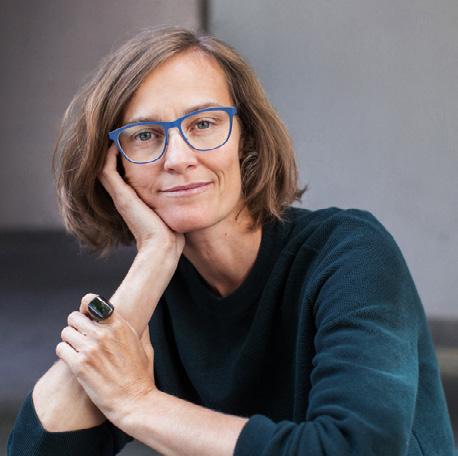
Progyny opens itself up for public investment, clearly indicating the growing value of the femtech app market.
Progyny, an app that allows employers to manage fertility benefits, had a valuation exceeding $1bn at the time and currently has a market capitalisation of around $4bn.


I have four FemTech companies in my portfolio
Towards the end of 2021, funding for femtech apps reached $2.5bn. As it stands, femtech companies currently receive 3% of all digital health funding.

This trend shows no signs of slowing. The femtech app field is set to continue expanding, evolving and growing in popularity. In fact, Frost & Sullivan has awarded the market a market potential $50bn by as soon as 2025.

At the end of 2022, Melanie Nakagawa was appointed as the Chief Sustainability Officer for Microsoft. Despite it being one of the industry’s most influential sustainability roles, for Nakagawa, this simply marks the next step in a career filled with major global positions – including a long span working with the US government.
Nakagawa took up the Chief Sustainability Officer post in January. And, as you can expect from a giant of Microsoft’s scale, taking the sustainability lead at this level means that Nakagawa is now a critical player in the green initiatives of the entire industry.
But few are as well-equipped to take up this mantle as Nakagawa: she boasts over two decades of experience in the environmental
Microsoft is committed to becoming carbon negative, water positive, and zero waste, while also contributing to the planet’s biodiversity by 2023
and sustainability field, most recently working in the role of Special Assistant to the President, and Senior Director for Climate and Energy on the National Security Council at the White House.
In fact, Nakagawa has held a number of key roles in the US government. During her time at the White House, she led numerous international and domestic climate initiatives, while addressing the big energy issues of the time – including the international energy response to the war in Ukraine.
Her previous governmental roles include working at the Department of State as the Deputy Assistant Secretary for Energy Transformation and on the Senate Foreign Relations Committee.
Nakagawa is also a former Director of Climate Strategy at Princeville Capital, a role that she held for almost four years.
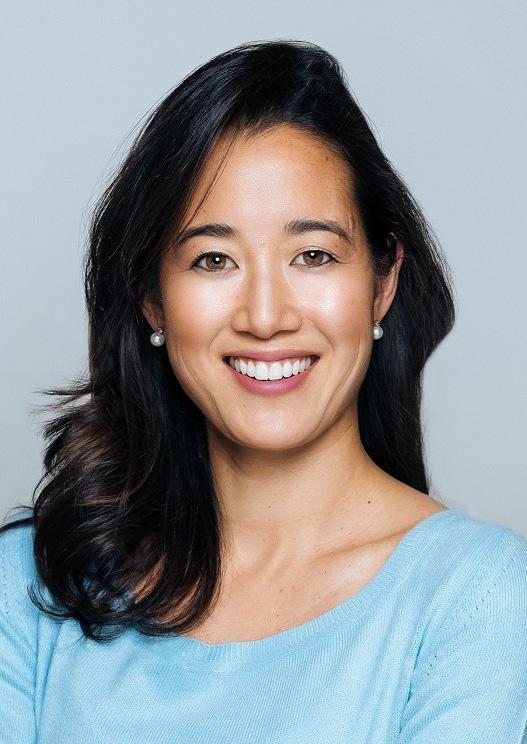

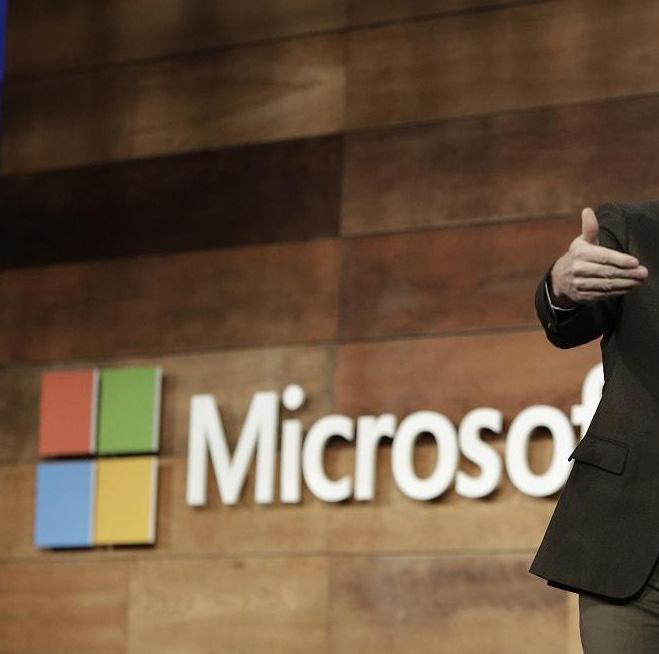
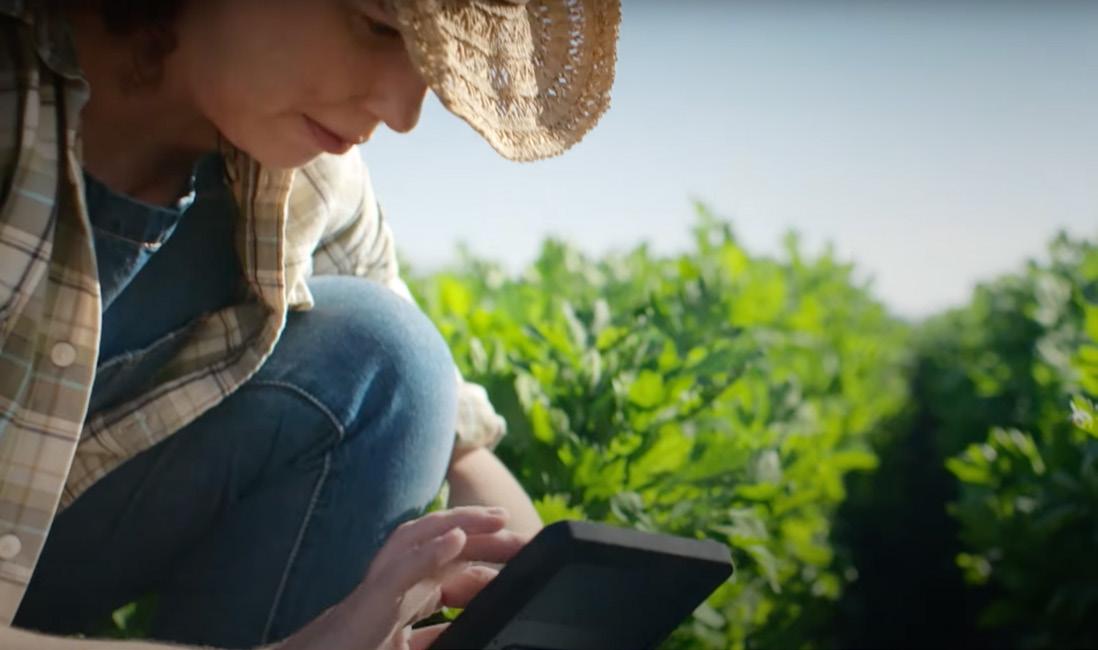
“Especially for a company like Microsoft – with our focus on helping the world’s organisations innovate through technology – our climaterelated role could not be clearer”
BRAD SMITH VICE CHAIR AND PRESIDENT, MICROSOFT
The race to 2030 – helping Microsoft achieve ambitious sustainability targets
Nakagawa is Microsoft’s second ever Chief Environmental Officer (with Lucas Joppa being the first). Within her role, she will unite sustainability efforts across the company, bringing together Microsoft’s vast network of ESG-led teams, while also representing the company on the global stage.
“Melanie joins Microsoft at a critical time. January will mark the third anniversary of our ambitious climate goals: to be carbon negative by 2030 and remove our historical carbon emissions by 2050. While I’m pleased with our progress, we must accelerate our momentum and broaden even further our climate-related work,” said Brad Smith, Vice Chair and President of Microsoft, commenting on Nakagawa’s appointment.
“Especially for a company like Microsoft – with our focus on helping the world’s organisations innovate through technology – our climate-related role could not be clearer. Cloud-based digital services, the better use of data, and rapid advances in AI will create new opportunities for us to help every organisation achieve more progress in addressing the world’s climate and energy needs.”
As Microsoft faces these monumental challenges amid the ever-pressing consumer demand for future-proof sustainability strategies, Nakagawa’s experience and insights could not be more valuable.
By 2030, Microsoft is committed to becoming carbon negative, water positive, and zero waste, while also contributing to the planet’s biodiversity.
In its progress towards these targets, Microsoft has teams – now being led by Nakagawa – comprising global leaders in environmental science. As a result, the company is at the forefront of sustainable technologies.
In fact, already, Microsoft is the largest carbon removal purchaser in the world. So, it will be exciting to see how, under Nakagawa’s leadership, the company continues to advance its ESG initiatives.
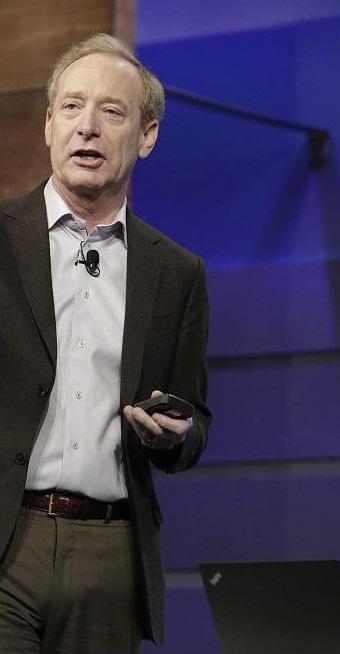
Boingo designs, builds and manages wireless networks to help enterprises streamline operations, improve business outcomes, and bolster the bottom line.

QHI MICHAEL, TELL US ABOUT YOUR PATH TO CCO AT BOINGO
» I joined Boingo Wireless in 2020 as the SVP of Global Strategy, leading our worldwide strategy, business development and new business creations. I was a senior member of the executive team, guiding the company through the pandemic, a private equity transition and the launch of Boingo’s highly anticipated private network offering. In 2021, I stepped into the role of Chief Commercial Officer.
Prior to Boingo, I worked at AT&T, leading the emerging business portion of AT&T IoT. I created the smart city business, public private partnerships, and several other businesses in new categories for the company. I was focused on driving successful utilisation of 5G and IoT applications.
QTELL US ABOUT BOINGO AND THE WORK YOU DO
» Wireless networks have changed from a single source needed by an enterprise to multiple types of connectivity required to run the entire business.
We start by asking, ‘What outcomes do you need to accomplish?’ From there, we develop a network that specifically serves that company’s unique needs and drives business outcomes. In short, we design, build and manage converged networks that can include all technologies or solutions – such as 5G, DAS (distributed antenna systems), Wi-Fi or CBRS to meet growing connectivity needs. It sounds complex because it is.
Enterprises work with Boingo to bring all technologies together – an increasingly challenging goal.
BOINGO WIRELESS CHIEF COMMERCIAL OFFICER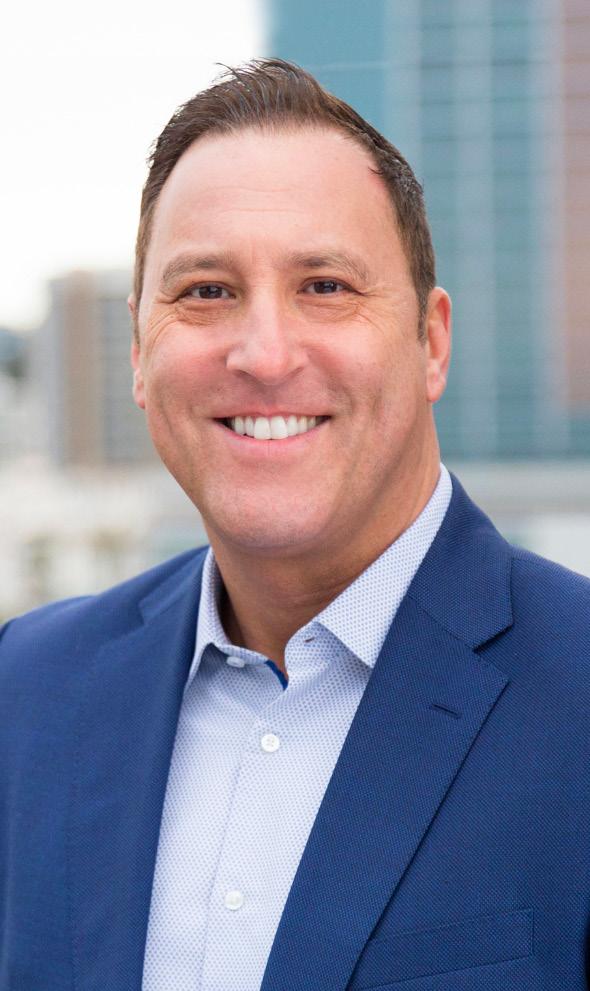
» First and foremost, I believe in listening to those around you –both colleagues and customers. Having empathy for them and what they're going through is essential. This way, you’re able to develop solutions that really meet the outcomes they're trying to drive. I've also learned that whatever your role, you’ve got to be agile. We've seen a heightened need for agility over the past three years, and I don't think it's going to stop. We need to quickly pivot, act with velocity, think creatively and collaborate.

» Over the last eight to ten years, we’ve talked a lot about IoT, Industrial IoT, and how machines are connecting things that weren’t previously connected. Digital transformation can be as basic sounding as moving file-keeping from paper to electronic, or it can be as complex as the use of digital twins for virtual simulations and product testing.
In the last couple of years, the need for digital transformation in every industry has accelerated. Now, connectivity is a key component in providing a stronger bottom line, bigger ROI and more agility.
» As far as challenges go, manufacturers are going to continue to focus on balance. The macro environment is saying that you need to be profitable and deliver for your shareholders, yet all the public markets are facing increases in costs and experiencing issues in the supply chain. Manufacturers need to find other ways to drive profit, because there's only so much elasticity in the market. That's where you're going to see a lot of focus on increasing efficiencies through digital transformation.
“WE HANDLE THE NETWORK SO OUR PARTNERS CAN FOCUS ON THEIR BUSINESS”
» Reliable, fast, secure connectivity is key. It’s the common thread through every solution. Connectivity drives positive productivity gains, efficiency and business innovation. Determine the business outcomes you need and work with a connectivity partner who can execute your strategy.
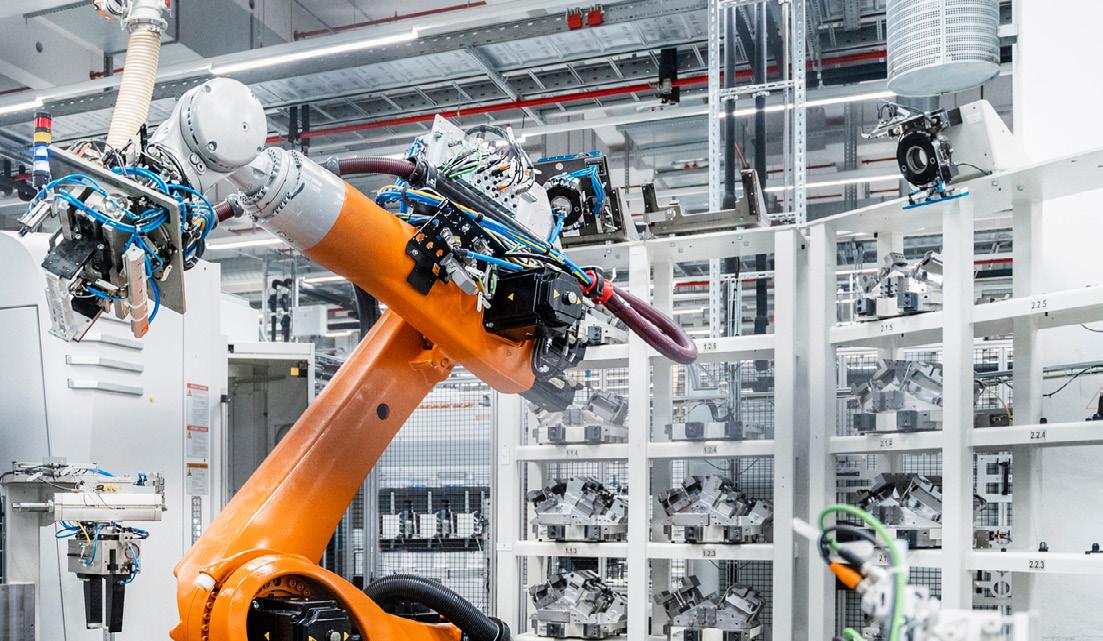
» At Boingo, we serve as trusted advisors and partners. We come in and stand side-by-side with you. We evaluate the outcomes you want to drive and help you develop a strategic roadmap for solutions. We then design, build and manage that for you. We know wireless today is complex. We know it is challenging. We also know you just want it to work, and work well. We handle the network so our partners can focus on their business.
» Outcomes are different for each industry and each business. Take time to know who your customer base is first and build your strategies around their needs.
Learn more at boingo.com
“CONNECTIVITY DRIVES POSITIVE PRODUCTIVITY GAINS, EFFICIENCY AND BUSINESS INNOVATION”







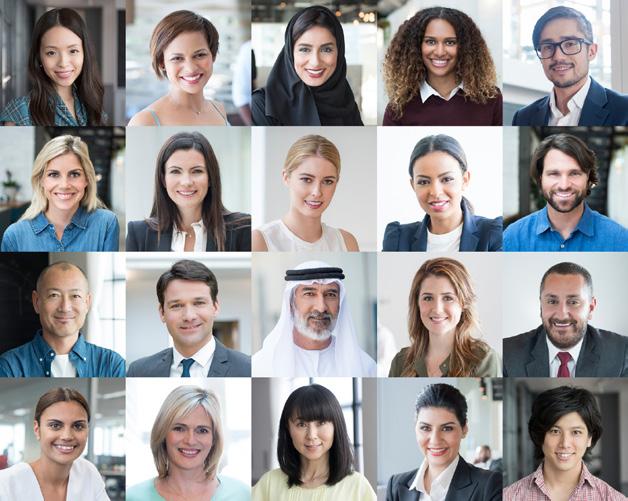


Are you looking to be ahead of the curve on all sustainability topics? To become a part of the conversation, cement existing relationships, and make meaningful new business connections?

On April 19th 2023, Sustainability LIVE New York is bringing together the greatest voices in the industry to further the discussion about what should, can, and must be done for a sustainable future. Brought to you by BizClik, and in association with Sustainability Magazine, this exclusive one-day virtual event, which includes renowned keynote speakers, engaging fireside chats, and panel discussions are a crucial deep dive into challenges facing the future of sustainability, net zero, and ESG.
This is your chance to share your innovations with the Sustainability community by making an impact in front of fellow groundbreakers, decision-makers and influencers at Sustainability LIVE New York 2023.

Position your business as a pioneer in Sustainability, access thousands of potential partners and influence businesses at the highest level.





Both global giants and innovative start-ups alike can discover the ideal platform with easy access to an engaged and active audience.
See you on 19th April 2023
It’s time for DISRUPTION.
Be part of the revolution. One of the innovators changing the industry by doing things differently. It’s time to change the rules of the game.▶ Watch our showreel from Sustainability LIVE London 2022



 WRITTEN BY: JESS GIBSON
PRODUCED BY: JAMES BERRY
WRITTEN BY: JESS GIBSON
PRODUCED BY: JAMES BERRY

Cast your mind back over the last forty years of evolution in telecoms – a considerable amount has changed in this time, right?
Though this may appear to be the case, what with the development of mobile phones themselves, the critical layers upon which such evolution has been predicated have actually remained pretty much, well, the same. After all, if it isn’t broken, why fix it?
But it’s this attitude that has the industry trapped in a vice-like grip, reliant on arduously clunky hardware-based systems that should, by now, have been relegated to the past.
With the very nature of mobile services ripe for a revolutionary reimagination, then, Rakuten Symphony was born. Functioning as the telecoms arm of the Rakuten Group – a strategic B2B, digital bank and ecommerce and digital contents group with more than 1.7 billion members worldwide – its entire premise is based on one radical decision: choosing not to build its mobile network on legacy hardware.
“The idea to move the entire mobile architecture into a software-centric platform isn’t a small evolution. It's a revolution of how networks are engineered, built, and architected based on new, modern cloud architecture, in which Open RAN is just one pillar of the many things that we have done,” says Tareq Amin, CEO of Rakuten Symphony.

More than happy to prove the naysayers wrong and propel Rakuten Symphony into a leading position within telecoms, Amin set
about building a team, an ecosystem and the network he envisioned.
It’s a truth universally acknowledged (in the telco world, at least) that in its current state, “the industry is in decline”.
After failing to evolve alongside the global technological landscape for the past few decades, telecoms has proven slow to change, to drive forward, and to differentiate. This has led to declining revenues and returns amid increasing costs and competition, placing the industry in a precarious position.

“Four and a half years ago, the world thought I was crazy, that this would never happen and never succeed”
TAREQ AMIN CEO, RAKUTEN SYMPHONY
Meanwhile, across this same 40-year period, cellular networks and enterprise IT have undergone multiple stages of evolution to reach where they are today – so why is it that progress for the infrastructure itself has stymied? One suggestion is the sheer amount of capital invested in data centre real-estate; another is a collective lack of understanding regarding the cloud. Amin had his own ideas.
“For me personally, before Rakuten, my own mindset was completely opened and transformed by a visit I had to Facebook before it was called Meta,” he shares. “Seeing how other enterprise IT companies, hyperscalers, and webscalers run their
TITLE: CEO
COMPANY: RAKUTEN SYMPHONY
INDUSTRY: TELECOMMUNICATIONS

LOCATION: CALIFORNIA, US
Tareq Amin is a technologist, business leader and entrepreneur with nearly two decades of experience driving telecom innovation.
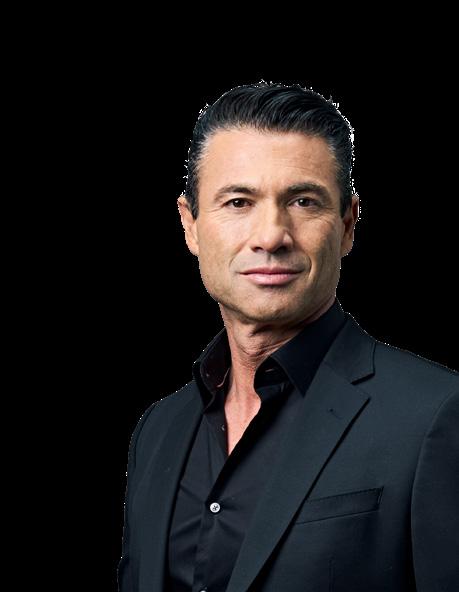
Amin launched Rakuten Symphony, a Rakuten Group company, in August 2021 with a vision to reimagine telecom for a hyperscale era, delivering the convergence of IT and telecom networks. As the CEO of Rakuten Symphony, Amin has taken the company from start-up to industry disruptor, introducing to the market his bold vision of mobile as a software. Believing that traditional tools used by industry incumbents are outdated and do not meet the demands of modern connectivity, and drawing on the proven technologies and operating principles of hyperscale leaders, Amin has overseen the creation of the industry’s first modern, industrial-scale automation platform built specifically for telecom.
A leading voice for the future of telecom and champion for the democratisation of the industry, Amin is dedicated to revolutionising the way we communicate and collaborate in the digital age.

At Bluewaves Mobility Innovation (BMI), we believe in giving customers the freedom to choose how they build their custom networks. That’s why our advanced Open RAN radio solutions are aligned with the latest Open RAN standards, ensuring compatibility with any DU/CU combination in the marketplace

Mobile Network Operators today are looking for flexible and secure solutions that allow them to quickly customize their radio solutions to meet their unique network requirements. Our advanced Open RAN products are designed to meet these needs
BMI solutions provide the flexibility customers need; built to O-RAN Alliance specifications. Our products are interoperable with any DU/CU combination in the marketplace and can easily be integrated into your chosen baseband set up.
This allows network operators to make cost effective purchasing decisions by selecting the best equipment from any supplier, rather than being tied down to a single vendor.
Additionally, BMI’s RF platforms allow customers to add the feature sets that their end consumers are
demanding, while benefiting from the flexibility and supply chain security that Open RAN offers.
With BMI’s base radio platforms in place, custom frequency radios can be designed in a matter of months, not years. Our implementation services can help customers easily integrate new products into their network.

Our lightweight radios have been designed with the latest GaN power amplifier technology ensuring that power consumption is kept to a minimum, helping to reduce the impact on the environment as well as your total cost of operation.
operations was honestly probably the biggest fundamental transformation in my thinking that has happened because, to date, I lived in a telco life where I was told what to do by existing large vendors. My mind wasn’t necessarily open yet to exploring the world outside of telecom, until I went to Facebook.
“And then I started looking at the operations of how they run. I started asking, ‘how do they achieve these efficiencies?’. And those questions led me to understand that this is not a technology problem.”
Recognising that it’s more to do with mindset than technology, a seminal moment in itself, Amin saw a whole new future for the development of telco.

“Look at moments in time that changed the way we consume data on mobile; the moment Steve Jobs talked about the iPhone

“In the truly cloudnative, you take that monolithic system, you break it into modules and pieces, and then you deploy, manage, upgrade, and patch each one separately”
RABIH DABBOUSSI CHIEF BUSINESS OFFICER, RAKUTEN SYMPHONY
– we all know that was a game changer. And we all know the impact that this iPhone had in the creation of the new generation of networks, in terms of driving data consumption and acceleration of a datacentric mobile architecture.
“While consumer devices have evolved substantially since the invention of the 1G mobile network in the 80s, the fundamental foundation of these networks has never changed. They are still run on proprietary hardware, have a strong hardware dependency, require long lead times to build, and bring extremely high operational complexity. And thus, here comes Rakuten.”
Strategy matters: software vs hardware “Mobile networks and telecom networks in general, because of the complexity and
because of the fact that the technology is quite unique, have not gotten to a level of openness as we have in the enterprise world,” explains Rabih Dabboussi, Rakuten Symphony’s Chief Business Officer and a keen technologist with an abundance of experience.
“For example, your email application from Microsoft works with my email application from Apple, a radio site that is offered by vendor X with antenna, a base band unit, and associated ancillaries and components, but that cannot be disaggregated – where you select the antenna from vendor X and the basement unit from vendor Y, and other control planes and user plane functions from vendor Z.
“So the idea behind Mobile-asa-Software is to open up those very interesting and proprietary interfaces that


used to be monolithic, breaking them down and disaggregating them through standard interfaces.
“And that's why Open RAN is not something that Rakuten came up with; it’s something that the industry demanded, it stemmed out of a need. And although
Rakuten advanced it and contributed and participated, this is an industry drive and an industry initiative.”
With this new, disaggregated service platform, software-centricity is built into the framework, meaning a lesser reliance on antiquated hardware that’s expensive to operate and replete with inefficiencies. But what other benefits can a softwarebased operational approach provide over traditional hardware?

Dabboussi says: “It's starting to make it more open so that you fuel and accelerate innovation, bringing in diversity and flexibility to the industry. Eventually, the outcome is also going to be reduced cost, because with openness, you create competition, you create new, better, cheaper ways of doing things, and therefore it will all follow through.
“About 15 years ago, we started talking about using cloud for enterprise workloads,
“The ecosystem and the partnership environment that we have is super important to our success, and very complementary and mutually valuable in our strategies”
RABIH
CHIEF BUSINESS OFFICER, RAKUTEN SYMPHONY
and everybody was resistant initially, but then they realised, ‘Hey, wait a minute, it's secure, it's highly available and it's cheaper'.”
Back in telecom's heyday, every company used to invest in their own traditional data centre with custom-built hardware. Similarly, in the telco world, “the radio network is typically the most expensive asset” because you have to deploy thousands of sites, provide coverage, and place antennas near to customers. Just 20 years ago, the radio access network came from 10-15 vendors; now, only a handful of the original number exists. Thus, as the industry’s radio vendors continue to shrink in number, it is coming to resemble “more of an oligopoly with little transparency”.
By moving to software, Dabboussi states a belief that Rakuten Symphony can “leverage the industry’s innovation in compute and
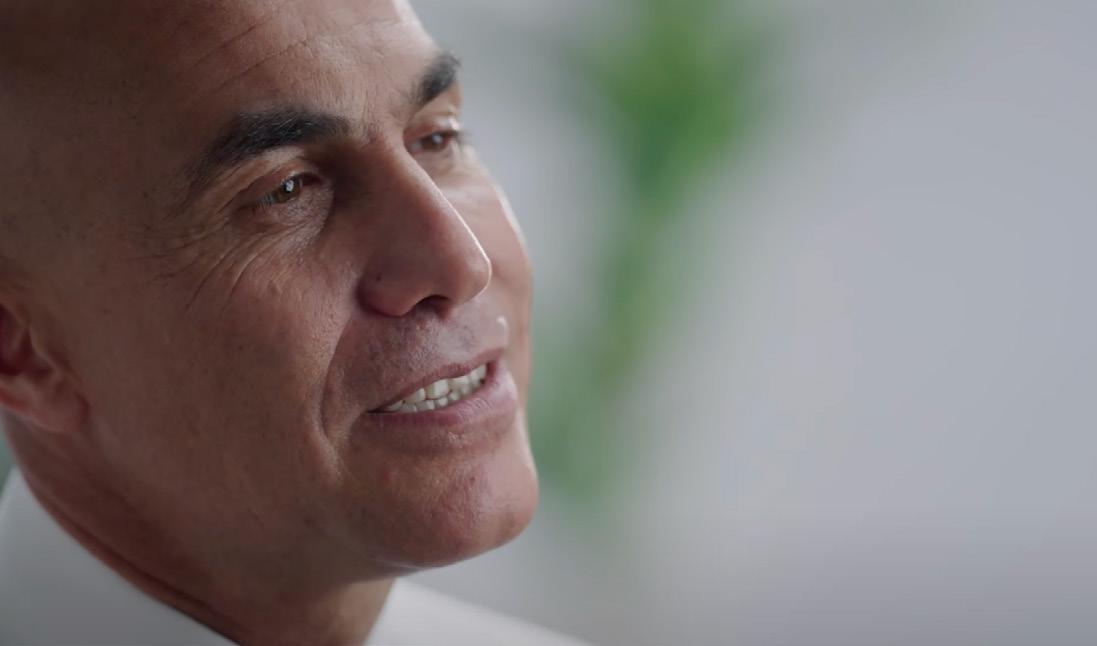

Symworld - The journey through automation to autonomy
general purpose processors”, including silicon chipsets and processors powerful enough for telco workloads.
“Our architectural foundation was around: ‘Let's build the network using the latest in industry innovations, and let's not take steps back because we're new in the industry, we want to build something for the future’.
“The first strategic decision was to use a software-only system for the radio access network. And along that, build a unified cloud layer that supports every function in the network with one operating system, with one virtualisation layer eliminating the complexities, but requiring our suppliers and our partners to convert their systems to software-only in the long-run,” explains Dabboussi.
“Not just a software system that runs in a big, monolithic, virtualised layer, but we want you to follow the mission to convert it to a Kubernetes-based, containerisedbased architecture, because it’s lightweight, efficient, very agile, and modular.”
He continues enthusiastically: “In the truly cloud-native, you take that monolithic

“It's starting to make it more open so that you fuel and accelerate innovation, bringing in diversity and flexibility to the industry”Symphony Employees
Rakuten Symphony entrusted open source Rocky Linux, supported by CIQ, to help spur a new era of telecom innovation.
In deploying Rocky Linux, we are returning to true open source principles.
Learn how Rocky Linux, supported by deep CIQ expertise, has radically reduced cost and delivered on business outcomes.

 Tareq Amin CEO of Rakuten Mobile and Rakuten Symphony
Rakuten Symphony, Rocky Linux, & CIQ
Tareq Amin CEO of Rakuten Mobile and Rakuten Symphony
Rakuten Symphony, Rocky Linux, & CIQ
system, you break it into modules and pieces, and then you deploy, manage, upgrade, and patch each one separately. And the granularity of your infrastructure becomes wider, but also gains the ability to be agile, fast, adjust, interconnect.”
Thus, the concept of Mobile as a Software was born, with Rakuten Symphony planning, designing, and operating “nextgeneration, software-defined networks”. This comes in the form of the Symworld Cloud – the “leading unified telco edge cloud” that links from cell sites to central data centres – and the Symworld Network, with Open RAN 4G, Open RAN 5G, and Symware appliances, leading to the next generation of OSS and BSS.
Dabboussi explains further: “Existing OSS systems are quite complex and quite burdensome, built on element management systems. These are the tools that manage the elements of the network – or the network management system. These are the tools that bring it together at a network level. We eliminated both of these, and we built a complete observability framework that is abstracted from the vendor's specific technologies.

TITLE: CHIEF BUSINESS OFFICER
COMPANY: RAKUTEN SYMPHONY
INDUSTRY: TELECOMMUNICATIONS
LOCATION: UAE
Rabih Dabboussi is Chief Business Officer of Rakuten Symphony, a new business organisation within the Rakuten Group to spearhead the global adoption of cloud-native open RAN infrastructure and services. In this role, Dabboussi is responsible for bringing Rakuten Symphony’s telco solutions, including the Rakuten Communications Platform, to operators, governments and enterprises around the world.
Dabboussi is a seasoned and highly recognised industry expert who brings more than two decades of experience in the mobile industry to Rakuten, including a 20-year progressive career at Cisco Systems in diverse roles of R&D, technology consulting, business development, and sales leadership.
EXECUTIVE BIO
“It's time for a change. And we'd like to have our name and our brand stand in that new chapter of telecom history”
RABIH DABBOUSSI CHIEF BUSINESS OFFICER, RAKUTEN SYMPHONY
With this software-centric approach, Rabih Dabboussi emphasises that though “hardware isn’t eliminated, it is standardised on common commodity hardware”, describing it as functioning in a way similar to Lego, with moveable, interlocking layers being stacked on top of each other.
Platform Infrastructure layer – open commodity compute systems that Rakuten call “the servers” and Open RAN radio units.
“The foundation of your network is this commodity-based hardware, which immediately solves the problem of being locked into monolithic proprietary systems, because now you're using off-the-shelf compute systems that can come from numerous different vendors around the world.”

Cloud layer – “On top of the foundation, you need the layer that aggregates all of this hardware and makes it look as a pool of compute resources, storage resources and networking resources available for you. That layer is called the cloud layer or the virtualisation layer, which is where you start getting into the software.
“We made a conscious decision from the beginning to unify the cloud, and then, on
top of it, unify the operating system. So we use one single operating system, which is a containerised Kubernetes operating system.”
Open RAN and core network functions layer – “On top of that comes your logic, your network functions, which is all cloud-native software, including Open RAN Distributed Unit (DU) and Centralised Unit, and all core network functions.
“Now you need to manage the network. And again, because everything becomes software, it's much easier for us to build in a unified, abstract way in an observability framework to do config management, performance management, fault monitoring –all the dashboarding, the monitoring and the control of your network.”
Operations layer – “Here, adjacent to this, you need to plan, build, and operate the network while managing customers. The cloud-native Symworld Platform streamlines the complex mesh of support systems and custom integrations that all operators have accumulated. This helps telecom operators scale faster as the cloud sets the pace for speed, innovation, and network expectations.”
“That abstraction layer is through open interfaces and APIs, which allows us now to say, ‘whether you bring a technology from this vendor or that vendor, this supplier or that supplier, as long as they're compliant with those standard ways of managing, monitoring, and configuring those pieces of software in the network, then you don't need anything in between to translate’. And that ultimately resulted in significant agility in our network. This way, we can roll out hundreds of sites a day.”
The speed of this solution cannot be overstated: once the cell site has been constructed, it can take just “four minutes to bring a radio site on air” – from the time the labour team installs the radios through to connecting power and networks – because “everything is done automatically”.
“That helped us improve the productivity of our operations engineers, with over 300,000 cells managed by a team of only 250 people who are powered 20 times by the Symworld platform. A network of that size in North America has probably a few thousand engineers managing it.”
Functioning in individual, virtualised layers allows for a standardised foundation that can be built upon with “off-the-shelfsystems” around the world – adhering, to the nth degree, to Rakuten’s guiding principle of openness and Dabboussi’s “the future is nothing but Open RAN” mindset.
“The other benefit of this is the ability to automate and orchestrate, to make things faster and roll things out better; to troubleshoot in much quicker ways, identify the issues and fix them much quicker and so on. So that was really the drive behind building the network based on software.
“The aspiration is to have Rakuten Symphony become the de-facto platform for managing the whole lifecycle of a mobile network, from the idea of building a network all the way to the decommissioning, upgrade and refresh of the network, as well as everything in between that takes place,” explains Dabboussi.
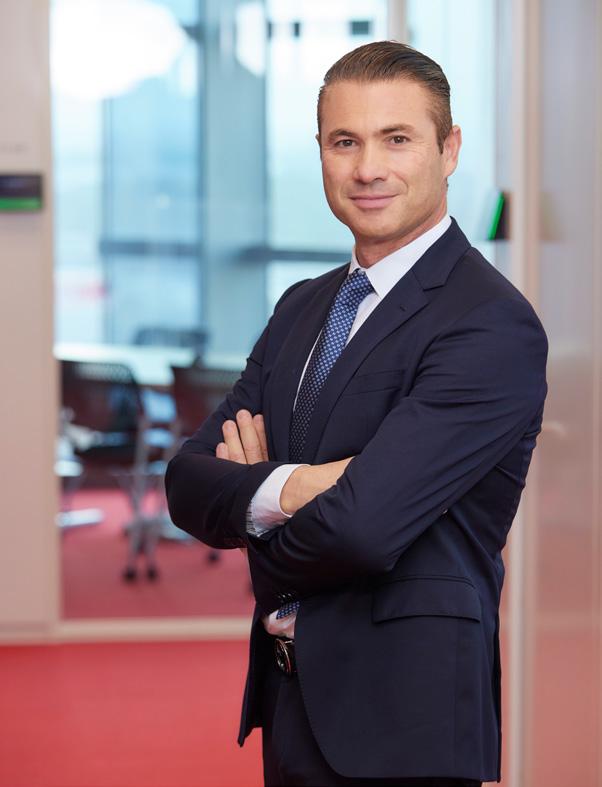
TAREQ AMIN CEO, RAKUTEN SYMPHONY
“The idea to move the entire mobile architecture into a software-centric platform isn’t a small evolution. It's a revolution”
For this to occur, a disruptive ecosystem of partners is needed, all working together to future-proof the industry by driving down operational costs and unlocking static vendor relationships.
“Rakuten couldn't have done this without the ecosystem of partners that participated in our buildout of the network in Japan and that continue to participate with us, globally,” Dabboussi establishes. “These are both big names and small names, and there's many of them; we're very open and our ecosystem is quite large. A few examples of these partners, which are demonstrating with us at Mobile World Congress Barcelona, include BMI, BayTec, and CIQ.
“BMI is a small radio supplier of ours, and they’re only building Open-RAN-compliant radios. I have a lot of aspirations for them. If they continue to execute well, they can bring a real change in the industry.
“BayTec, meanwhile, manufactures and supplies numerous different components for us, from ancillaries and batteries to devices and small radio units.
”Our philosophy about open, software-centric mobile networks is pivotal for a successful transformation of the mobile industry.
“For telecom, Rakuten Mobile and Rakuten Symphony are working closely with CIQ to ensure that Rocky Linux is proven at scale in commercial operations. There is a large and growing proactive community of very large technology companies that are ensuring Rocky Linux is leading, in terms of certified software drivers and capability compatibility for telecom. Rocky Linux and the community are ensuring that it is the best alternative for the highly demanding telecom industry, which is seen as a proxy for all industries that require edge-to-core-tocloud solutions.”
The aim of the game here is disruption, which – in terms of partnerships –potentially means moving away from some of the legacy cloud licensing methods in the telco worlds in favour of smaller, more agile and innovative players that are changing the game.
“We feel that these three partners are foundational to what we do, but our partnerships aren’t exclusive to our existing partners. We’re so open and transparent, always looking for new innovators to come and join us in this mission, because we cannot achieve it alone. And the industry is heading that way – the more players and
“Seeing how other enterprise IT companies, hyperscalers, and webscalers run their operations was honestly probably the biggest fundamental transformation in my thinking that has happened”
TAREQ AMIN CEO, RAKUTEN SYMPHONY
the more innovators, the more value and the more efficient the solution will be,” Dabboussi says.
“The ecosystem and the partnership environment that we have is super important to our success and quite complementary to our strategies.”
With Dabboussi envisioning a future that’s “nothing but Open RAN” and enthusing about the growing number of companies embracing a software-centric approach to mobile networks, he is particularly focused upon the four key ways he can turn that envisioned future into reality.
“It's very important for us to continue to stay the course in our mission, continue to improve and innovate in what we do –

both on the technology pieces as well as the operating and commercial model.”
That means encouraging vendors and customers to sign up on “a complete cost transparency basis”. This isn’t to be limited to the technology pieces, it is to also include “the operating and commercial model, and the engagement and go-to market model” as well, due to the increasing volume of customers seeking out face-to-face interactions and resources located in the same time zone.
“So, ramping up our capabilities globally is super important, and we need to be a little more crisp in describing ourselves to the industry in general, but most importantly, to the stakeholders of our customers and decision-makers – which is exactly what this disruption is about and
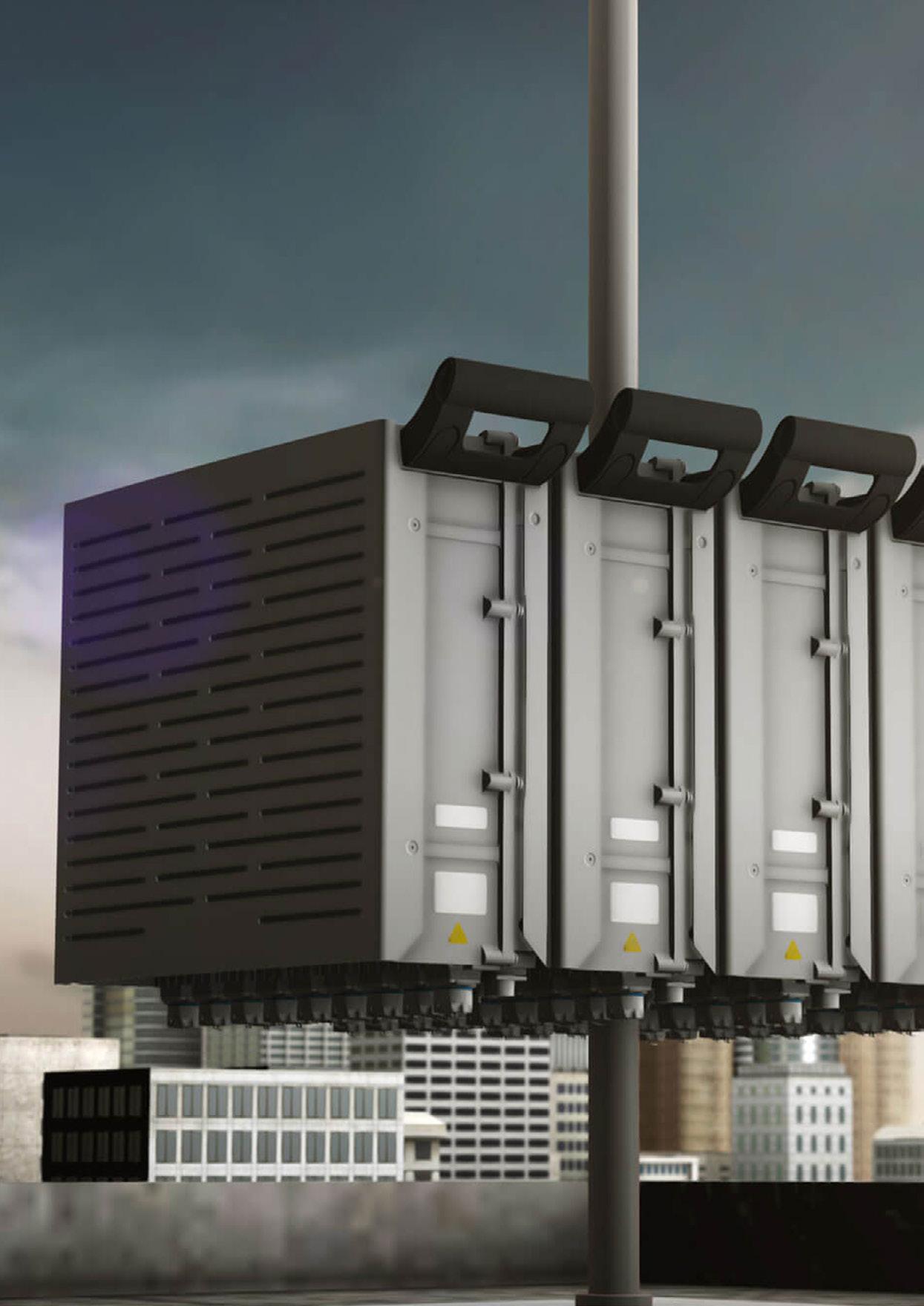
what the value behind that disruption is,” states Dabboussi.
“Last but not least is the call to the industry to come and join us in this journey. The more partnerships we establish and the more adoption of Software as a Service and Mobile as a Software architecture, the stronger this ecosystem becomes and the more value the whole industry will harness from it.
“I'm very bullish, very positive and very hopeful about what the future looks like for us.”
In the more immediate future, Dabboussi notes that there’s a focus on raising awareness and knowledge of Mobile as a Software through widespread education, feeding into this notion of a constantly evolving, disruptive ecosystem that’s synonymous with innovation.
“I'd like to see, hopefully very soon, some announcements around large, tier one national operators adopting our solutions. We're very close to making really good headways with a few of them – they're currently trialling and testing our systems, and we feel very positive about what's coming.

“We will continue to see improvement in the performance of the networks we're building. Rakuten’s network is considered in the top sixth percentile globally on performance and customer experience. On the engineering side, I see us introducing very interesting, innovative products and reference designs.”
Dabboussi concludes: “The next two years are our window of opportunity to lead the disruption in the industry and open a new chapter in the history of the telecom world. It's time for a change. And we'd like to have our name and our brand stand in that new chapter of telecom history.”
In an exclusive interview with Oliver Novakovic , Technical and Innovation Director at Barratt Developments, we explored the future of sustainable smart homes
WRITTEN BY: JOSEPHINE WALBANKBarratt Developments is the largest housebuilder in the UK. Andas is the case for leaders within any industry - they are tasked with the role of pioneering new sustainability standards for house building.
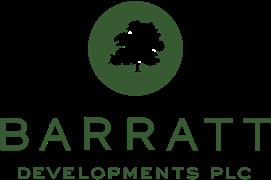
Firmly taking up this mantle, Barratt is leading the future of green building technologies. The company is part of the United Nations’ Race to Zero campaign and has committed to building regulated zero carbon homes from 2030.
Nowhere is this trademark combination of sustainability and smart home technologies better demonstrated than in its two industry-leading build projects - the Zed House and the Energy House “eHome2”.
To find out more about these projects, the smart home tech being utilised, and what they represent for the future of home building, we spoke to Oliver Novakovic, Technical and Innovation Director at Barratt Developments.

TITLE: TECHNICAL & INNOVATION
DIRECTOR
COMPANY: BARRATT DEVELOPMENTS
INDUSTRY: CONSTRUCTION
LOCATION: UNITED KINGDOM
Oliver Novakovic was previously Group Director of Building Futures at the Building Research Establishment (BRE) for 10 years. Whilst there, he was responsible for driving process efficiency and innovation and also acted as a technical advisor on a number of Government programmes, including the AIMC4 Project.

Prior to the BRE, Oliver spent eight years at Westbury Homes, developing new processes for construction efficiency and ensuring designs were fit to meet the ever changing building regulations. At Westbury, he also developed timberframe systems for housing, including offsite manufacture.
In early 2020, Barratt announced the beginnings of its ambitious Zed House project.
When it comes to setting carbon reduction targets, few companies face more challenges than those in the construction sphere. But, through the technologies and initiatives being deployed in this concept home of the future, Barratt was able to devise the first home built by a mainstream housebuilder that goes significantly beyond the government’s Future Homes Standard. In fact, the Zed House has been able to
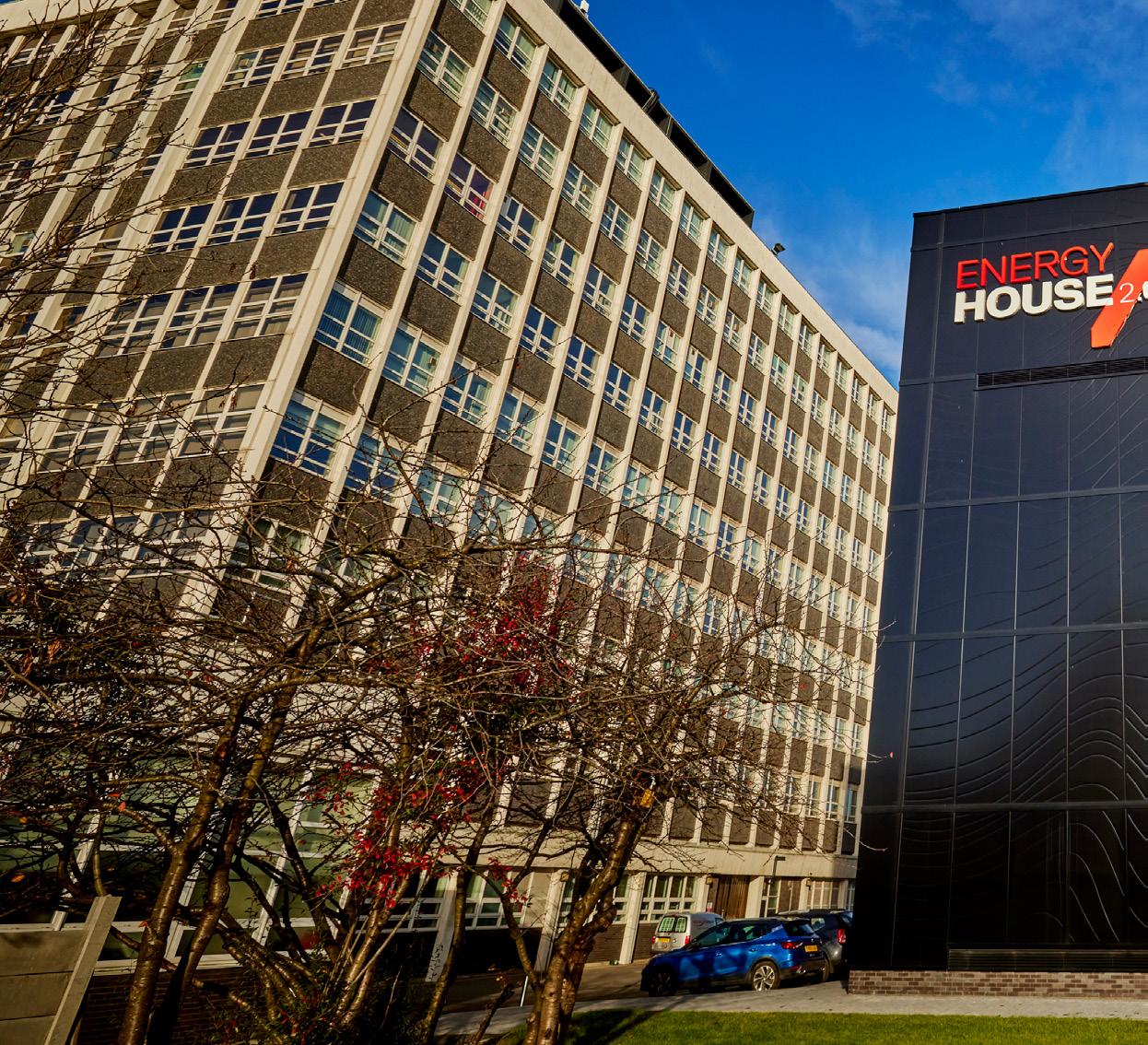
achieve a reduction in carbon emissions that exceeds 125% of regulated energy.
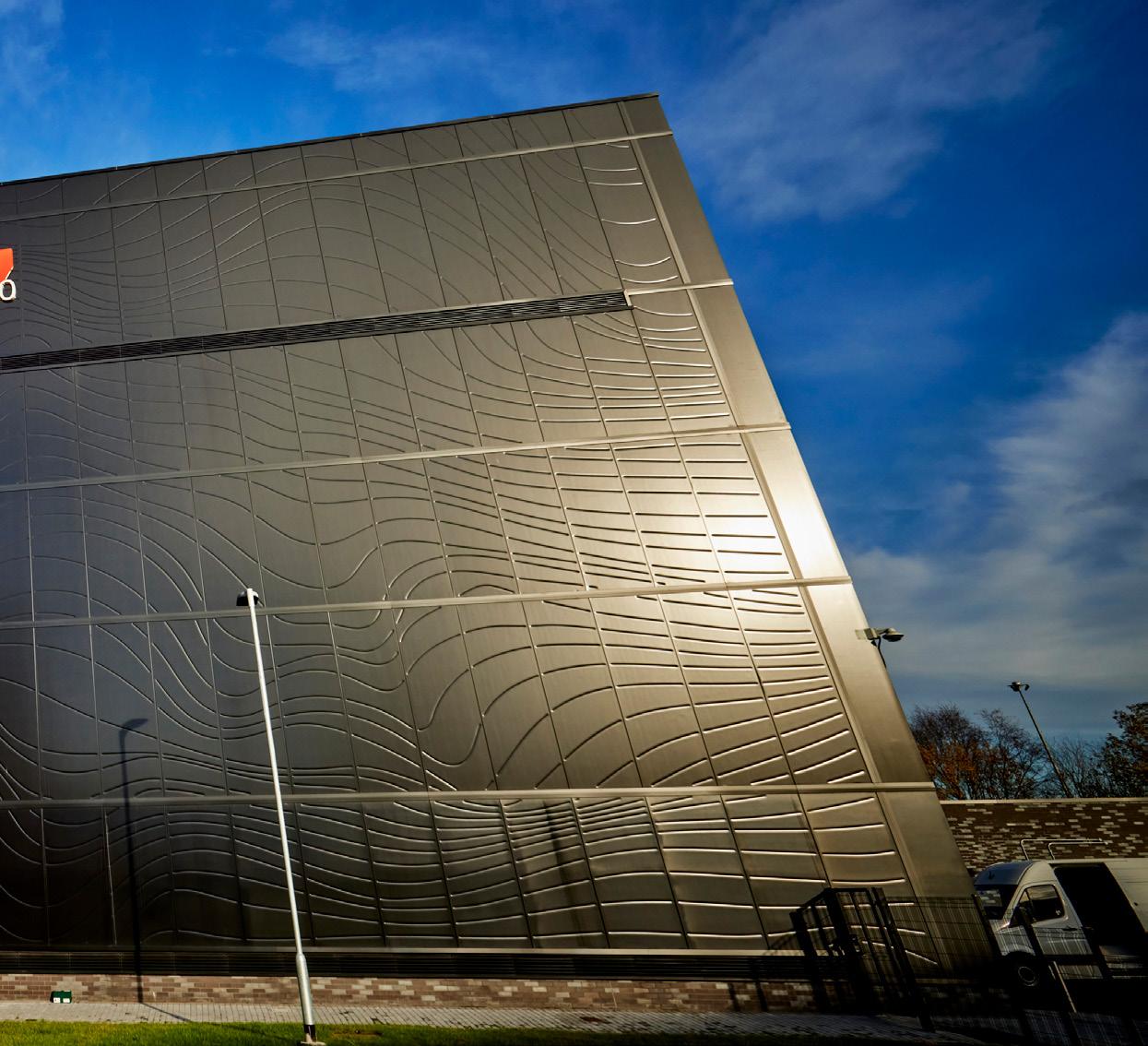
In its Zed House project, Barratt brought together over 40 leading organisations, to create a sustainability-led blueprint for the housebuilding industry. It sought to demonstrate how much is possible, and how successfully new builds can manage the sustainability standards demanded by both governments and residents.
“The Zed House was very much about looking at a number of different areas around sustainability. Obviously, the primary focus was energy, but we
OLIVER NOVAKOVIC TECHNICAL & INNOVATION DIRECTOR, BARRATT DEVELOPMENTS
“The Zed House was very much a concept house. So we put around 50 different ingredients into the home; now, the reality of it is, to make the 2025 zero-carbon cake, we only need 10-15 of those ingredients”Energy House 2.0 located in Salford, Manchester





also looked at things like embodied carbon, biodiversity in nature, different types of innovations around offsite construction, and smart technologies,” Novakovic explains.
The results have proved extraordinary. For example, the house delivers the heating that a homeowner would need for four to five days of the week, without taking anything out of the grid.
Data analytics proved critical in measuring both the success of the Zed House and the areas for improvement within it.
This pioneering project was only possible with the partnership of the University of Salford, one of the leaders in researching zero carbon construction and the impact of climate change.

Through this partnership, and by having academics live in Zed House for short periods of time, the smart technology and the performance of the house could be tested. This helped to inform the project’s next phase.
Through an expansive network of integrated sensors, data was collected regarding indoor air quality, thermal comfort, heating and renewable regeneration, to name a few.
“We had 95 sensors and about one kilometre of wiring all around the home to monitor how that home performed. We were building a home of the future, through new technologies, but we wanted to understand what it would be like to live in,” Novakovic explains.
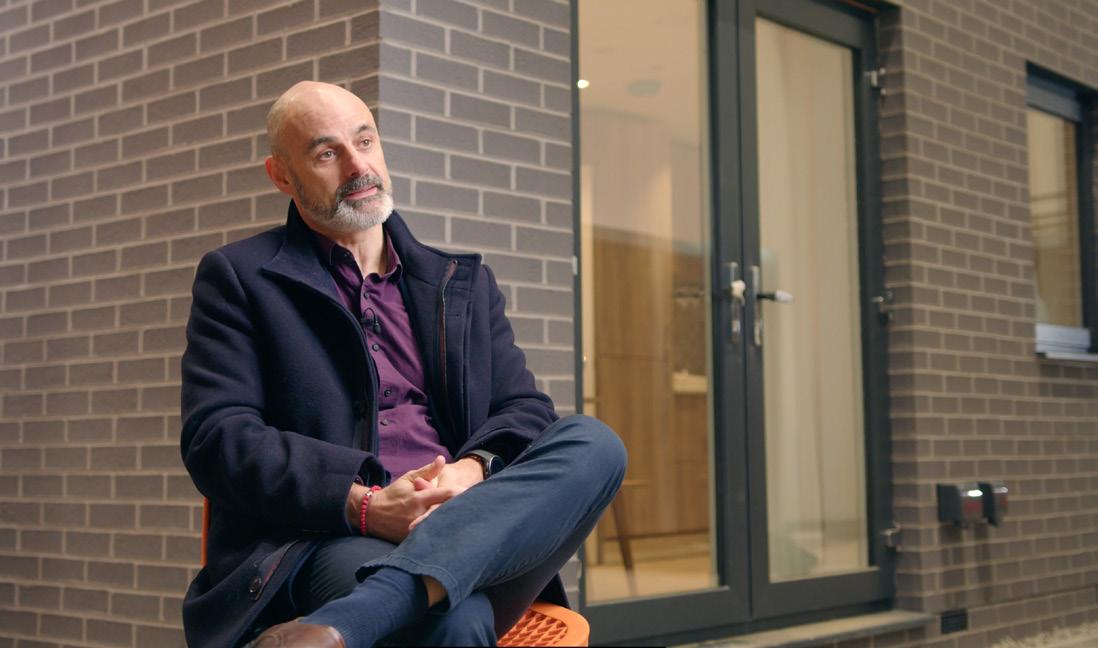
The same approach was then deployed in the eHome2 project which was delivered in partnership with Saint Gobain. But, whereas Zed House was built outside on the grounds of the university, for this next instalment of the project, the house was built in a state of the art, climate-controlled warehouse.
“So we can literally make it snow, rain, generate heavy winds, and go from minus 20 to plus 40°C.”
This means that Barratt can test the home in the kinds of summers and winters that we might see in 2050 or 2100, and implement future-proof solutions, which homeowners can use comfortably.
WATCH NOW eHome2 at the Energy House 2.0OLIVER NOVAKOVIC TECHNICAL & INNOVATION DIRECTOR, BARRATT DEVELOPMENTS
“That was a really big part of the project – firstly, do these technologies work on their own? But then, more importantly, do they work in combination?”
“We can really implement all of the technologies, put people in the homes, and change the weather to see how it all reacts. Most importantly, that will give us data and information that will help inform the designs and technologies we use in the future and, with different customers, understand what they like and don't like.”
Building on these successful foundations, the next step for the company is a nine-month programme of research at the eHome2 chamber.
The Zed House features a wide variety of cutting edge-technology, including overhead infrared panels which provide instant zero carbon heat, air-powered and smart showers, plaster which eliminates air pollutants, appliances which reduce food wastage and water consumption, heated skirting boards, AI solutions to optimise the times at which devices consume electricity (ensuring

customers maximise the use of either free solar energy, or low-cost electricity from the grid), and the first car on the market that features Vehicle to Grid technology.
After the completion of the Zed House, its learnings were taken and utilised to shape the next evolution of the project - eHome2.
“Then with the eHome2, we took the learnings from the Zed House and moved that know-how on into the eHome2,” Novakovic explains.
“The main thing we learned is that some of the smart technology we used at the Zed House didn't quite work.”
“The Zed House was very much a concept house. So we put around 50 different ingredients into the home. Now, the reality of it is, to make the 2025 zero carbon cake, we only need 10-15. There were a lot of challenges and opportunities around how that technology communicated, and its consequential impacts.”
“That was a really big part of the projectfirstly, do these technologies work on their
Snow simulation inside Chamber 1
“What's been great about the Zed House and eHome2 projects is the fact that we've been able to scour across not only the country, but across the world to find new technologies that can be used”
OLIVER NOVAKOVIC TECHNICAL & INNOVATION DIRECTOR, BARRATT DEVELOPMENTS
own? But then, more importantly, do they work in combination?”
As a result, when creating the eHome2, implementing harmonious IoT solutions was set as a top priority.
“So to resolve this, we've formed a unique partnership with a system that becomes the brain of a home. This really helps our customers get the best out of their homes, from energy efficiency, reduction of bills, comfort and all those things, which will become more and more important as you highly insulate buildings and put a lot of technology in.”
Barratt has also partnered with Google Nest, Give Energy, Tribe and a number of other companies, to create a seamless smart home experience. As a result, this approach features some of the most advanced, sophisticated solutions in the world.
“What's been great about the Zed House and eHome2 projects is the fact that we've been able to scour across not only the country, but across the world to find new technologies that can be used.”
Novakovic explains that this remains an ongoing project for Barratt, and that there is a lot more still to come, both in terms of Barratt’s plans for further innovation, as well as the industry’s adoption of smart technologies at large.
“I think house builders will move toward much more technical smart solutions to help deliver some of the zero carbon targets.”

“The opportunity here is that, not only does smart technology help our customers, but the reality of it is that lots of people within house building don't understand smart. So, there's definitely an opportunity to help us as an industry use that technology more effectively and more efficiently.”
“For me, it's quite an exciting time, but it's definitely one that we've got to tackle together.”

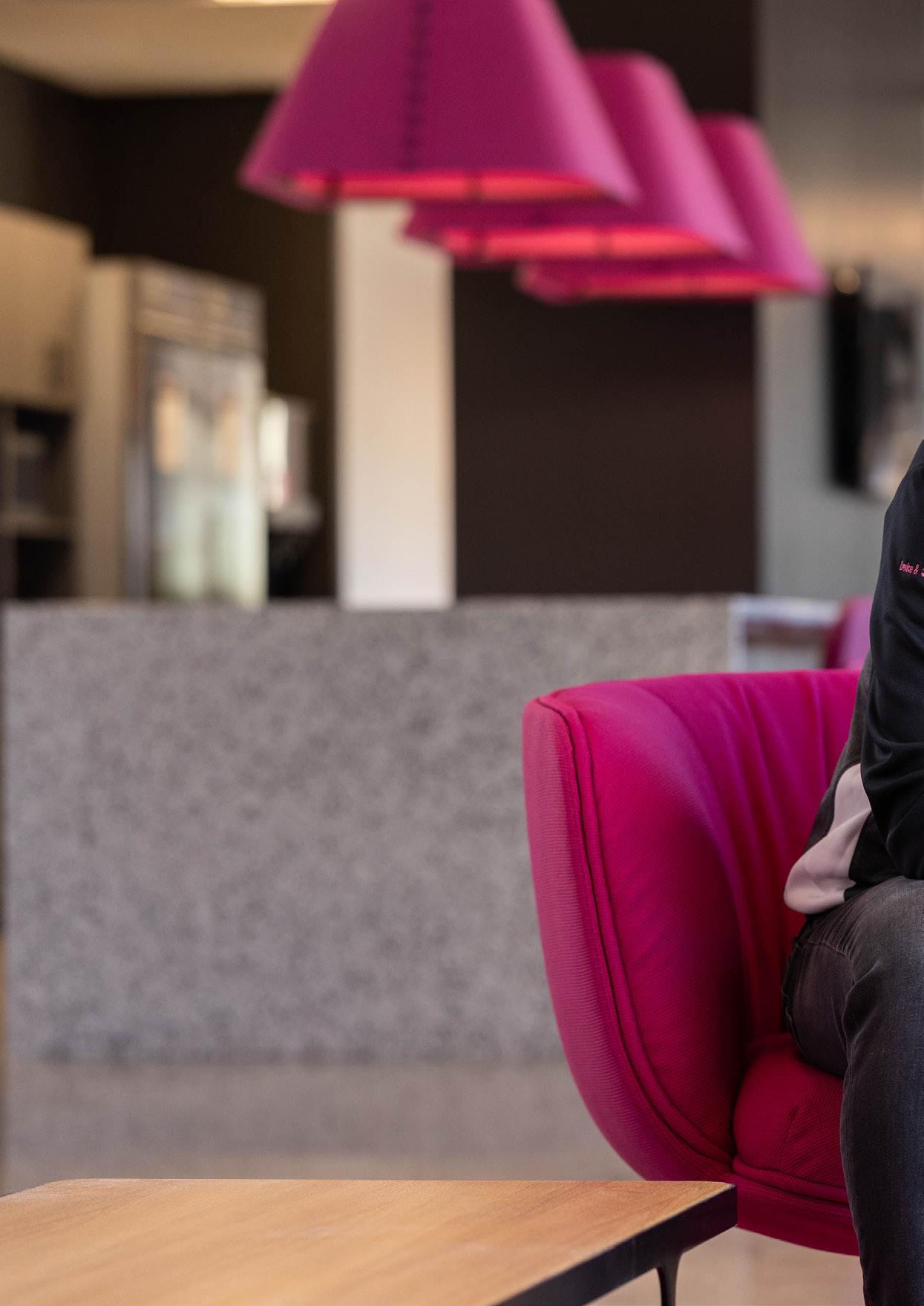
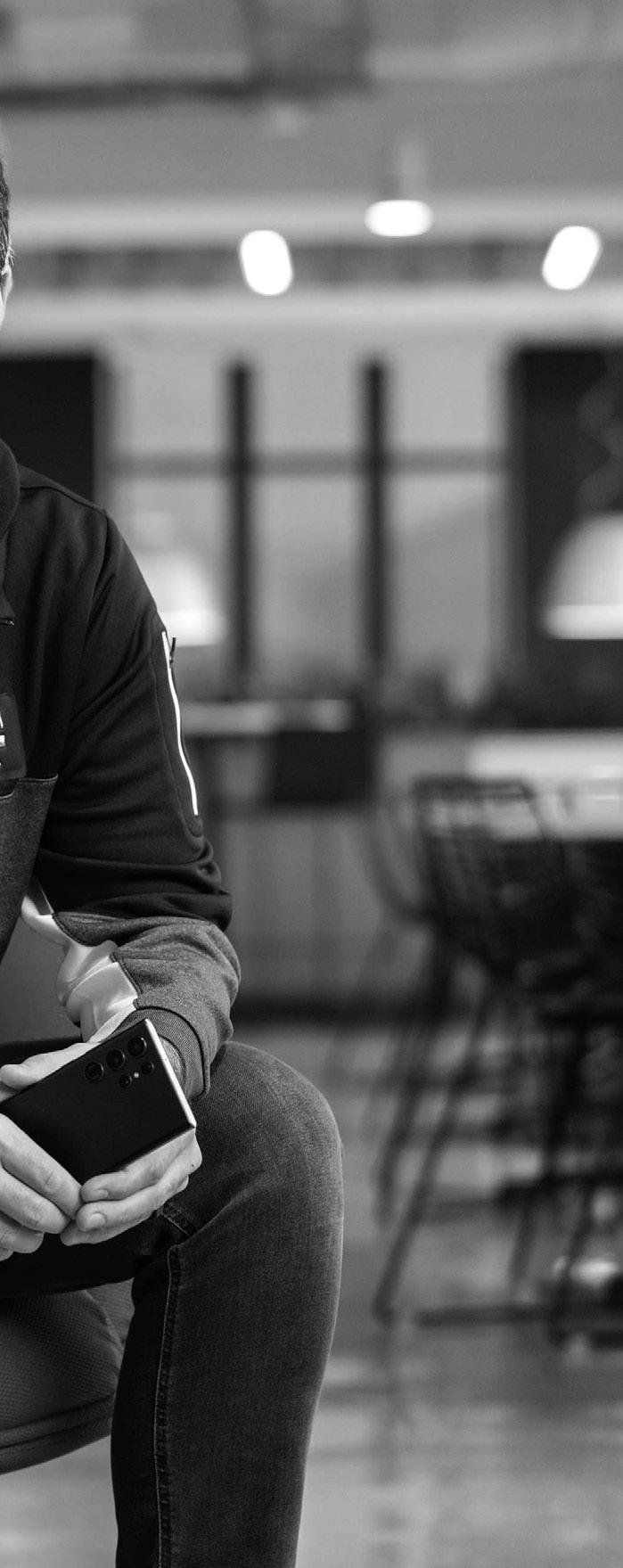


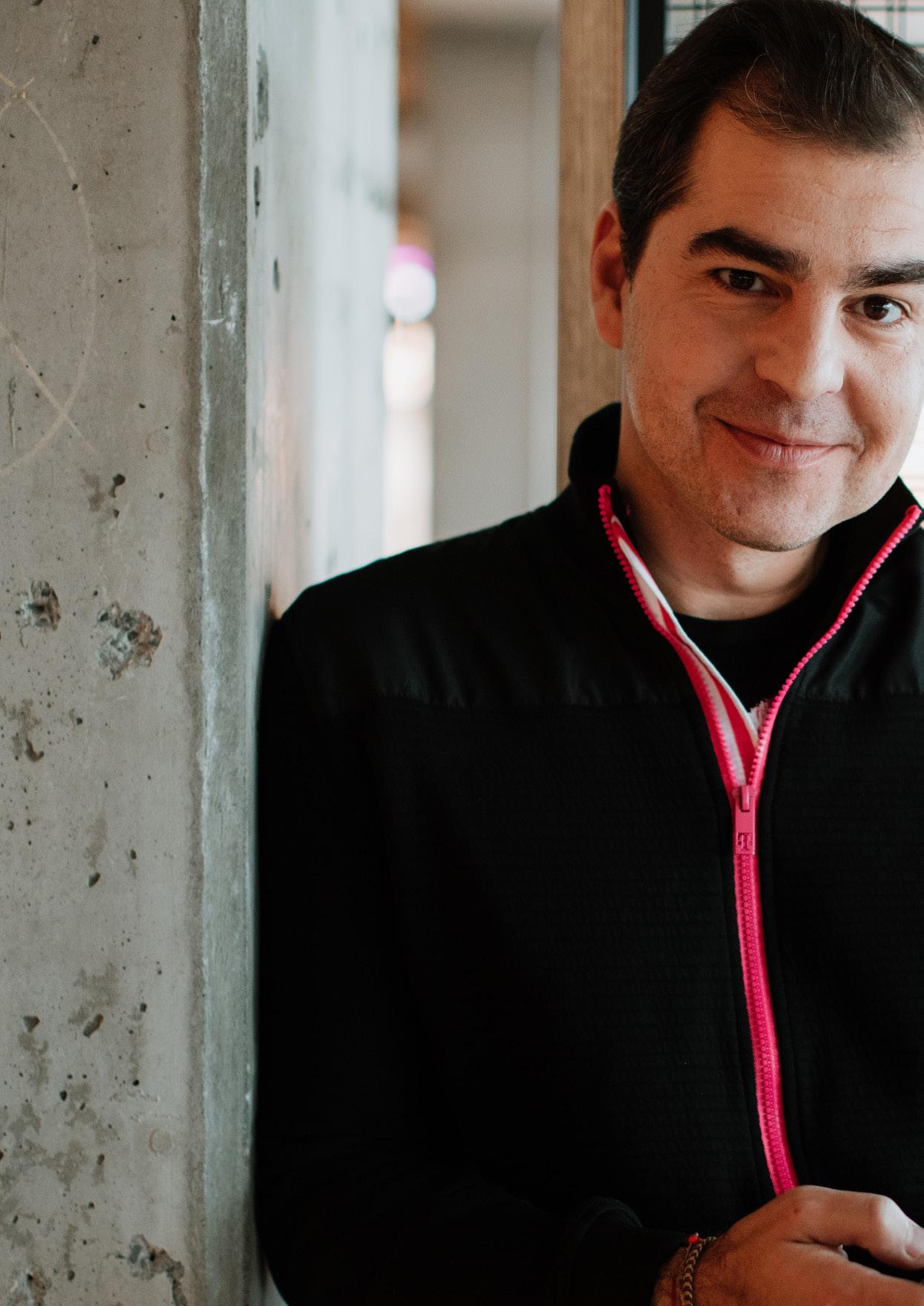

T-Mobile has achieved nothing short of becoming America’s 5G Leader, with the country’s largest, fastest and most reliable 5G network.
And, even after nearly three years of highscale merger implementation/execution and a global pandemic, the mobile giant has managed to not only retain but expand on the leading 5G service in the country.
In an exclusive interview with Max Caballero-Vieyra, Senior Vice President of Devices & Supply Chain, we learn how T-Mobile has built resilience into its consumer supply chain, tackles the unique challenges of the American market, and plans to further digital transformation in the future.



Max Caballero-Vieyra, SVP of Devices & Supply Chain, provides exclusive insights into how supply chain transformation is asserting T-Mobile as value leader

The Apkudo Circular Industry Platform simplifies in the connected device supply chain so you can have real-time answers to device inventory, quality, and pricing questions – not only within your own organization, but across your global partner network.
Learn more
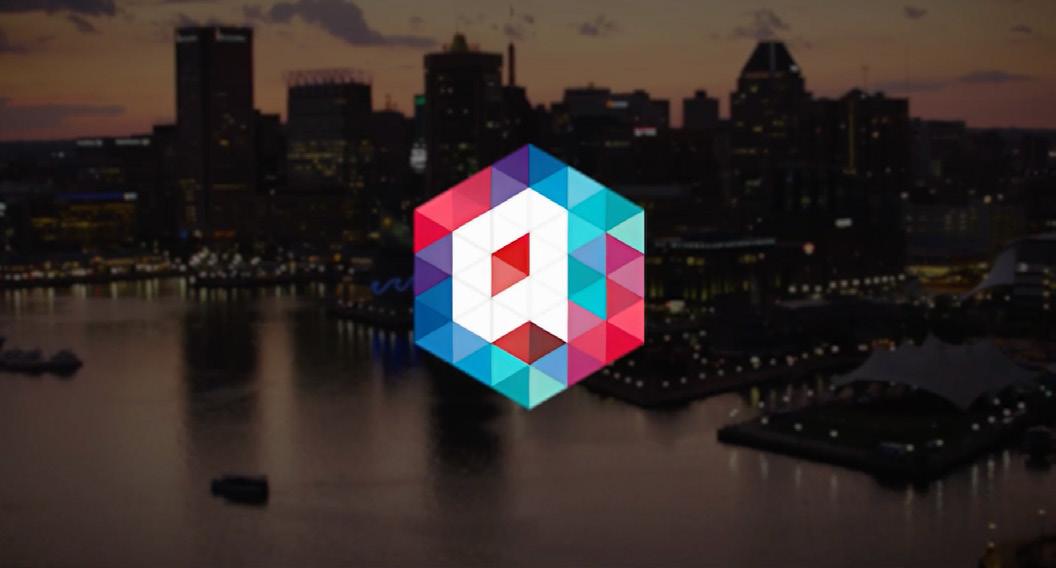

Josh Matthews and Chad Gottesman from Apkudo, share how companies can tackle supply chain complexities and benefit from the circular economy
Connected device supply chains are becoming increasingly complex as the number of products and industry participants grow. As a result, many organizations struggle with fragmented legacy systems and high labor costs yet still don’t have the transparency, security, and connectivity across the supply chain they need to maximize profits.
Apkudo helps customers tackle this complexity head on with its Circular Industry Platform, a single operating system that optimizes the lifecycle of connected devices, from launch to end of life. “No matter where a company operates within the supply chain, they’re dealing with all of this intense complexity,” says President Chad Gottesman. “Apkudo enables our customers to tackle this complexity and create new opportunities in the process.”
Apkudo’s Circular Industry Platform replaces inefficient labor and disjointed legacy systems with a purpose-built integrated solution including hardware, software, and market connections. “The Apkudo Platform ensures that items such as mobile phones, tablets, laptops, and wearables move quickly and smoothly to the highest value outcome,” continued Gottesman
T-Mobile, an early adopter of the Apkudo Platform, uses it throughout the device lifecycle. “Our platform assists T-Mobile with onboarding devices into their ecosystem, liaising with the device manufacturer, assessing each device, predicting its future issues in the field, predicting customer satisfaction, and determining the best possible value and positioning of that device after initial use,” says Josh Matthews, Co-Founder and CEO of Apkudo.
T-Mobile also benefits from the Apkudo Platform because it provides a simple and secure way to connect to their business partners that participate in the device lifecycle. “We provide the fabric that connects all of those stakeholders together and allows them to automate their business processes, gaining the best possible outcomes for the devices that move through the supply chain,” Matthews observes. “The Apkudo Platform is there for T-Mobile at every step of the way, tracking devices and ensuring they have the data to make the optimal decision every time.”
Learn more
TITLE: SENIOR VICE PRESIDENT OF DEVICES & SUPPLY CHAIN
COMPANY: T-MOBILE
INDUSTRY: TELECOMS
LOCATION: US
Max Caballero is responsible for the end-to-end life cycle of T-Mobile’s consumer-facing hardware and accessories portfolio, accountable for selecting and procuring the devices that T-Mobile carries, and the best way to get them into customers’ hands. Within his span of control are hardware and accessories supplier partnerships, to device and accessories roadmaps, procurement and pricing negotiations, over $22bn annual hardware and accessories purchases, supply chain operations and inventory management, reverse operations, as well as used device monetization.
Prior to joining T-Mobile, Max spent 4 years at Sprint, where he most recently served as the VP of Product & Supply Chain, leading all aspects of Sprint’s P&SC organisation including portfolio, procurement of device and accessories, OEM management, Forward and Reverse logistics and operations, and second life device sales. Among his most notable achievements at Sprint, Max led all commercial negotiations with products suppliers, as it relates to Sprint’s 5G strategic initiative, and successfully secured a range of 5G products to launch on Sprint’s 5G network in 2019. In addition, Max has expertly negotiated and launched multiple lucrative iconic programmes
with suppliers at Sprint, including exclusive upgrade programmes that delight customers by allowing them to access the latest and greatest devices on an annual basis.
Before joining the Sprint executive team, Max acted as Managing Director of Brightstar – Southern Europe, based in Madrid. While there, he managed the device procurement and end-to-end supply chain (including 400 Brightstarowned points of sale) of mobile operator Mas Movil (formerly Yoigo).
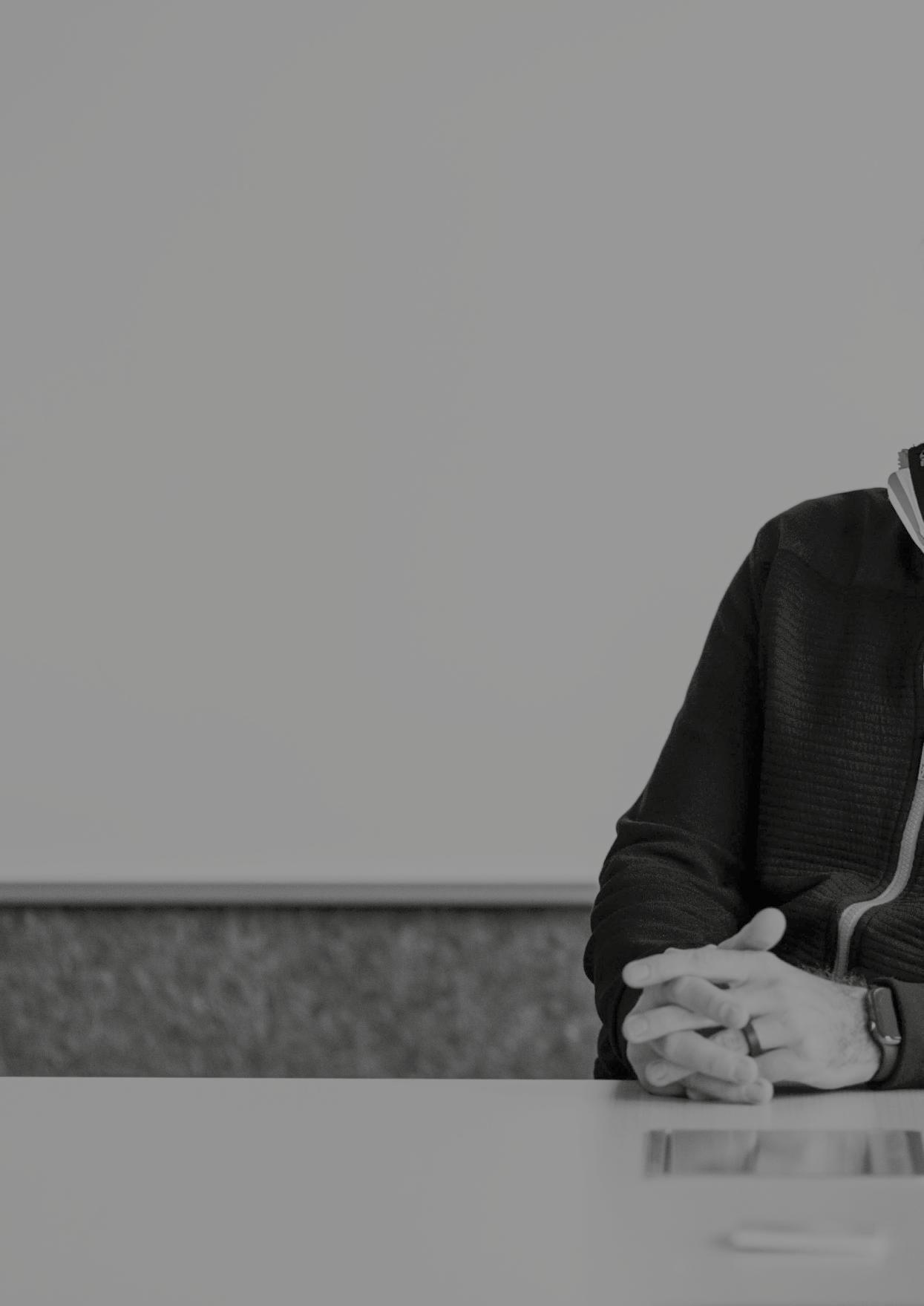
Prior to moving to Madrid, Max spent 8 years in London, where he held multiple roles at Brightstar, including:
> VP Mobile Distribution managing all device procurement and OEM relationships across Europe,
> VP of Strategy leading multiple acquisitions in the Distribution and Buy Back and Trade-in business as well as opening Brightstar’s first Auction House in Hong Kong that served as a key sales channel in the rapidly growing business of returned devices.
Max holds a degree in Business Economics from Universidad Di Tella (Argentina), a Master’s degree in Distribution and Supply Chain from Texas A&M, and multiple executive coaching programmes at Ashridge Business School (Hult) in London.


The supply chain sphere is competitive, particularly within the telecom industry. In addition, a variety of obstacles over the past few years have added new complexities and introduced new risks. Competition, risk management, optimising efficiencies while maintaining an unwavering focus on innovation are the main pillars on which the Supply Chain of the future will stand.
This presents a unique challenge for leaders. Strong leadership is key, but leaders also need to understand customers’ needs in-depth and have a clear vision for the future while creating the right strategic partnerships to enable success today.
Caballero-Vieyra is responsible for managing T-Mobile’s complete portfolio of devices – including smartphones, tablets, watches, and routers – as well as the portfolio design, strategic supplier relationships, terms and pricing negotiation with partners, and the selection process across multiple channels.


“It involves everything that has to do with the operations, whether it's for sourcing, logistics, reverse logistics, or inventory management,” Caballero-Vieyra explains. “We manage thousands of retail doors, big web and telesales avenues, so we fulfil every single channel T-Mobile operates.”
The complexities of T-Mobile's consumer supply chain come from managing a large network of partners as well as thousands of retail locations. Alongside this, T-Mobile is working to ensure that it can supply the full spectrum of devices customers want at the right time and at the right place, while offering our best possible value.
“Our planning and execution are frequently impacted by changes in promotions, particularly around devices.

Motorola and T-Mobile have been doing business for a long time. However in 2020, that partnership was taken to the next level as they both started to trust each other and plan for the long term. That trust has paid massive dividends for both companies
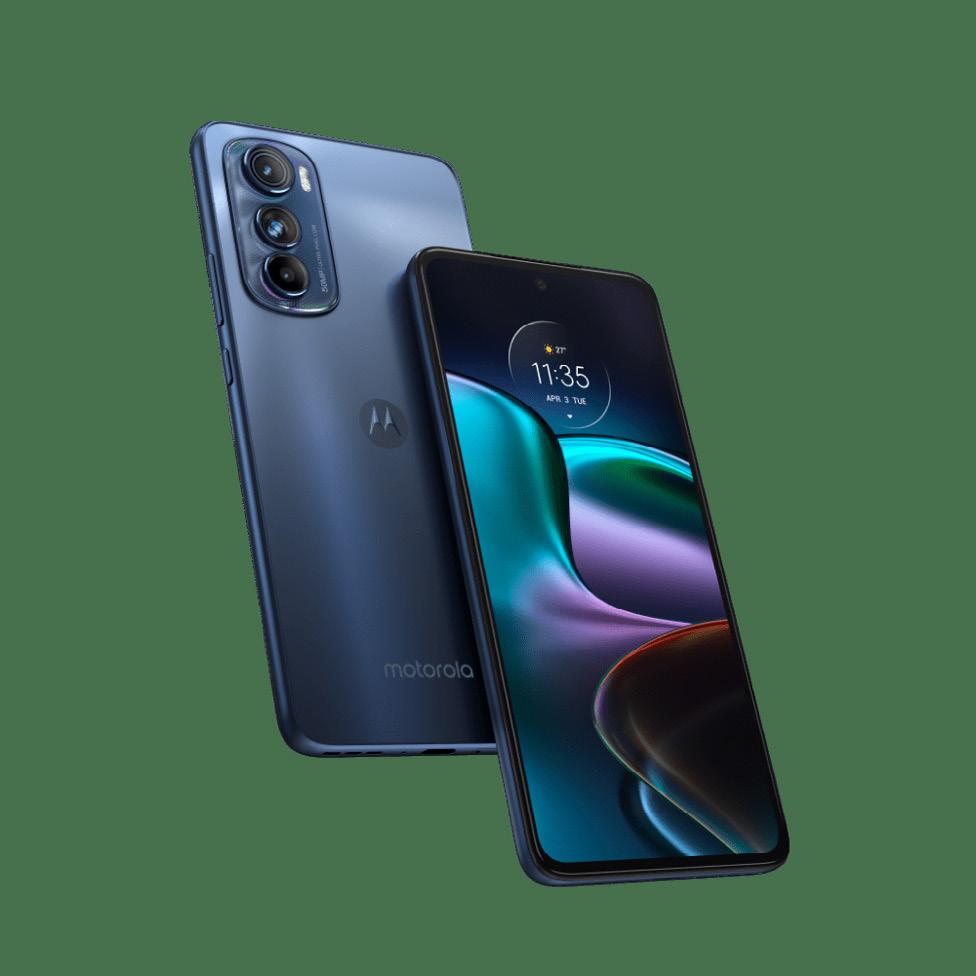
Motorola rekindled a selling relationship with T-Mobile in 2017, and in 2020 that partnership took the next leap. During the pandemic and times of supply uncertainty, T-Mobile trusted Motorola to deliver on their device needs and extended their forecasts to give Motorola the visibility to procure the right parts – despite extended lead times and delivery dates more than six months in the future.
T-Mobile provided Motorola with enough certainty that they would take product orders and clearly communicated their needs for a longer period, so that the duo could collaboratively plan to create combined success.

The trust that was developed and ongoing relationship that has blossomed since the supply shortages of 2020 have led to other partnerships between the companies.
As a trusted innovation partner, Motorola was the first supplier to launch a device that delivers power class 1.5 on T-Mobile’s network with its motorola edge2022. PC 1.5 brings faster, more powerful 5G to more people, helping T-Mobile live up to its claim of more bars in more places!
The partnership doesn’t stop there - T-Mobile and Motorola are working diligently to bring even more products and innovations to North American consumers, including innovative form factors, differentiated color options and enhanced communication ecosystems. Learn more




Sercomm connects people to what they love! Network operators across the world rely on Sercomm to deliver reliable, differentiated services to enhance customers’ lives. Check out Sercomm for a full portfolio of smart home, business connectivity, and entertainment solutions.
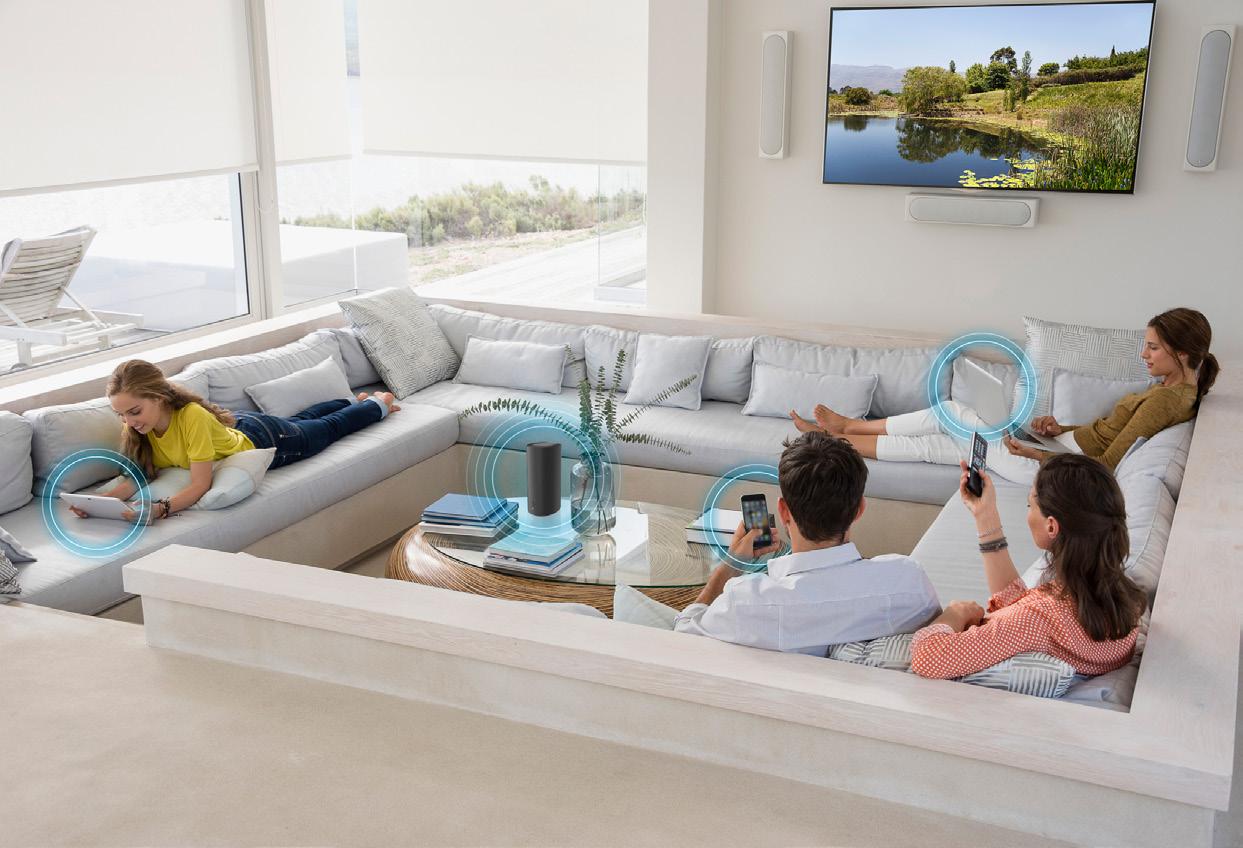
And the complexity comes in managing all that demand of products – different price points, different customer needs –and ensuring that we can always have the products that our customers need, where they need them,” Caballero-Vieyra explains.
Anticipating changes in supply and demand that result from promotional fluctuations is a unique skill not often seen in supply chain leaders, yet CaballeroVieyra and his team not only do this, but go further.
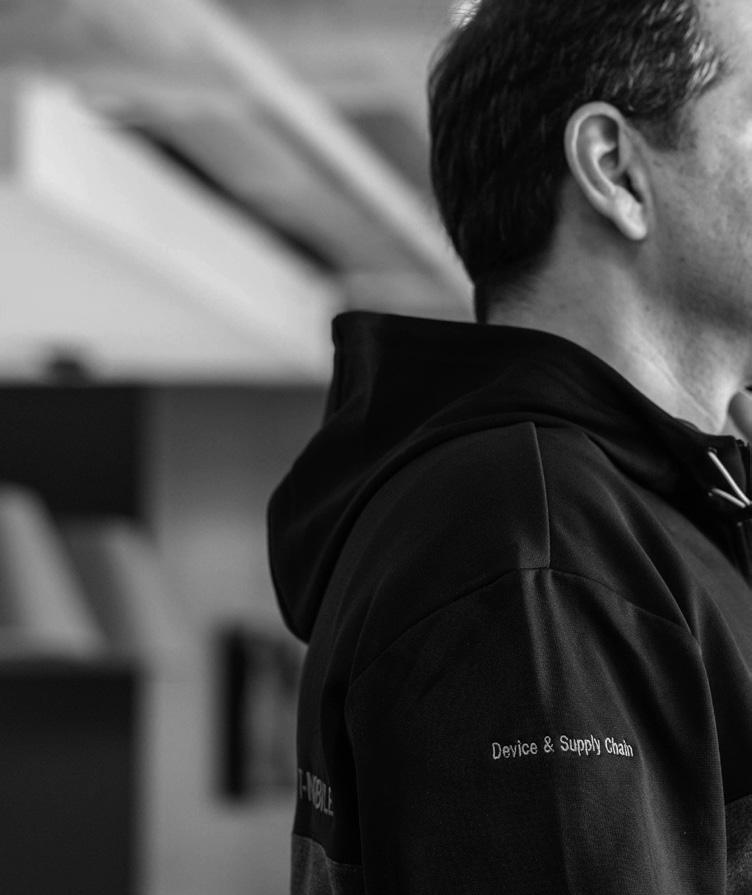
“We deliver world-class quality of service by understanding our customers and offering optionality – whether it's in products or price points – while making sure that we can always fulfil their product needs consistently and as fast as possible – whatever interaction they have with T-Mobile, whether that’s in a retail store, on the web, on the phone, or in an app.”
In such a dynamic and global role, it’s highly telling that Caballero-Vieyra’s proudest achievement comes from the way that T-Mobile navigated the COVID-19 crisis.
“The US market is very, very big. Between 2020 and 2021, I was managing the merger of T-Mobile and Sprint – integrating processes and consolidating infrastructure – while the world was going through a pandemic,” Caballero-Vieyra explains.
“Being able to succeed and keep the business stable in an unprecedented environment, while navigating the volatility in the system for at least a year, was extremely challenging. That was, without a doubt, the most demanding job I've ever had.”
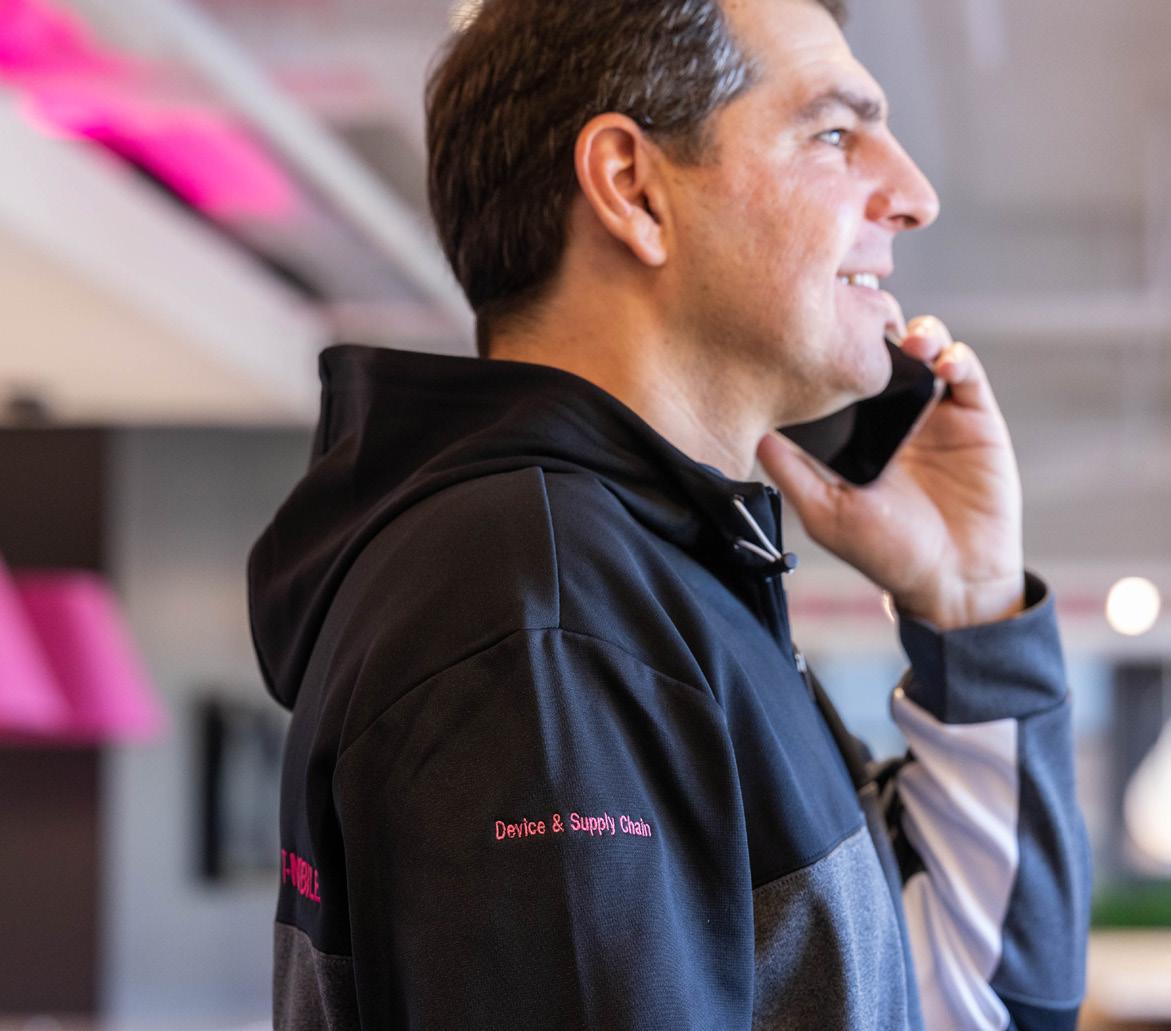
“We deliver world-class quality service by ensuring that we are tuned into our customers’ needs, and offering them optionality”
MAX CABALLERO-VIEYRA, SVP OF DEVICES & SUPPLY CHAIN, T-MOBILE


So, from a supply chain management perspective, how are the lessons learned being implemented now, in a consistently volatile, almost-post-pandemic world?

“At the end of the day, supply chain is a game of certainty, and you need that certainty to operate. When you are getting hit by an event like the pandemic, the certainty that’s essential to operate isn’t there,” Caballero-Vieyra outlines.
“Then you start thinking: if we're not going to be receiving the products when we expect them, what do we need to do in terms of safety stock to be able to mitigate those risks? So we started leveraging our network of supplier relationships to find alternative supply sources and protect our value proposition. That gives you options to begin making decisions, or start adjusting what you were thinking originally, based on the new information coming in day-to-day.”
Caballero-Vieyra explains how one of the critical lessons learned from this situation was the need to constantly rethink diversifying to avoid risk.
“Supplier diversity becomes crucial in minimising those unexpected events. So we implemented that across every step of the process – from the moment we are designing a portfolio of products, we start thinking, ‘What would happen if we go through a repeat of 2020 and 2021?’.
“When you go through a shock to the system like the pandemic, it brings supplier partnerships and risk management to the forefront of your thinking.”
According to Caballero-Vieyra, the main way T-Mobile differentiates from its competitors is by offering America’s leading 5G network.
“We have always been a value leader: we have fantastic prices, and the best value for those prices. And now, we also have an incredible network to match our incredible value.
“We offer amazing content to our customers and, with respect to devices or accessories, we give them tons of options. We also ensure that we design a portfolio
At the end of 2022, T-Mobile serviced a network of over 113.6mn CUSTOMERS
As the world’s largest supplier of smartphone chipsets, we’ve empowered US customers with connected devices. We’re excited to continue working with T-Mobile to create the best 5G products today, and on into the 6G era.
Dr. JC Hsu Corporate Vice President and General Manager of Wireless Communications Business Unit at MediaTek
Learn more

of products that covers the wide range of our customers' needs – all the colour variants, all the memory variants, and all the price points.”
Interestingly, one of the most significant complexities of T-Mobile's consumer supply chain comes from the promotion-led approach of the American mobile market, which significantly differs from other mobile markets across the globe.
“Here in the US, we operate in a very promotional market. Those promotions change and, as they do, demand for certain devices and accessories moves up and down. The complexity lies in managing the network of suppliers we have around these promotions, feeding our distribution centre with the right amount of inventory so we can meet consumers' needs while keeping an optimal inventory level across thousands of points of sale,” Caballero-Vieyra explains.
“We're talking about hundreds of products, thousands of points of sale, and a very large number of partners. And managing all that complexity in an efficient way is extremely challenging.” It certainly sounds like it.
In the mobile industry, building a supply chain that’s flexible enough to successfully support these complex technologies and their rapid evolution is no mean feat.
So, how does T-Mobile manage the evolving demands of the customer landscape with an ever-expanding range of mobile devices?
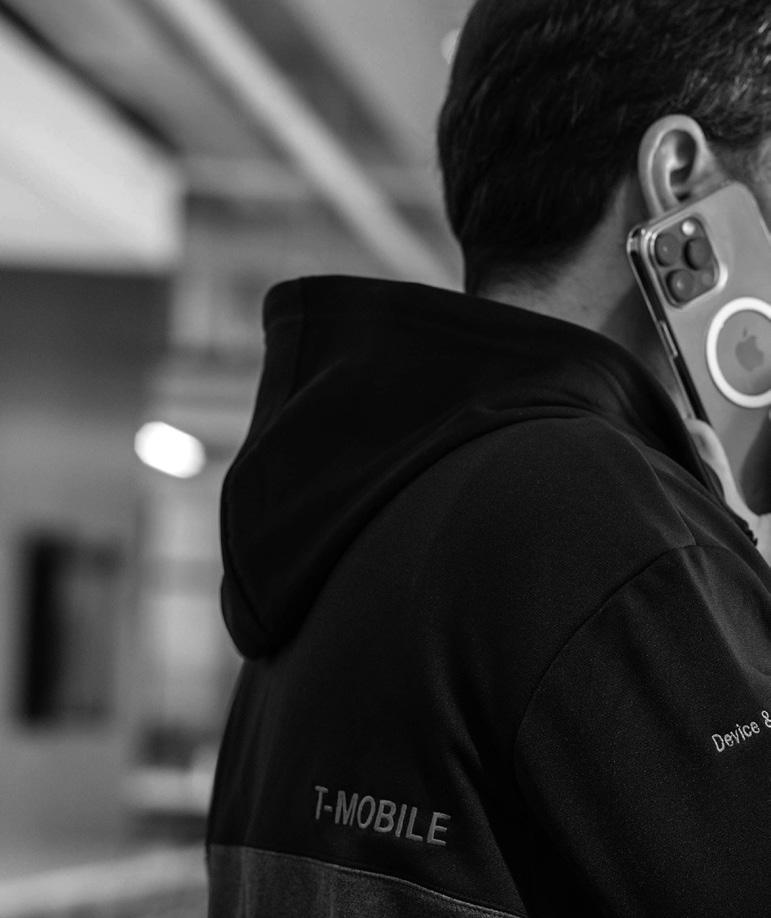

MAX CABALLERO-VIEYRA, SVP OF DEVICES & SUPPLY CHAIN, T-MOBILE
“We are a value leader –we have amazing prices and incredible ßvalue for those prices”

World Leading Home Network Solution Provider
5G Indoor/Outdoor Solution
Wi-Fi Home Mesh Solution
Next-Gen Broadband Gateway

“We need to give customers what they want. So, we design a portfolio of products, ecosystems, and experiences that fit every price point, every consumer lifestyle, and every segment of the market,” says Caballero-Vieyra.
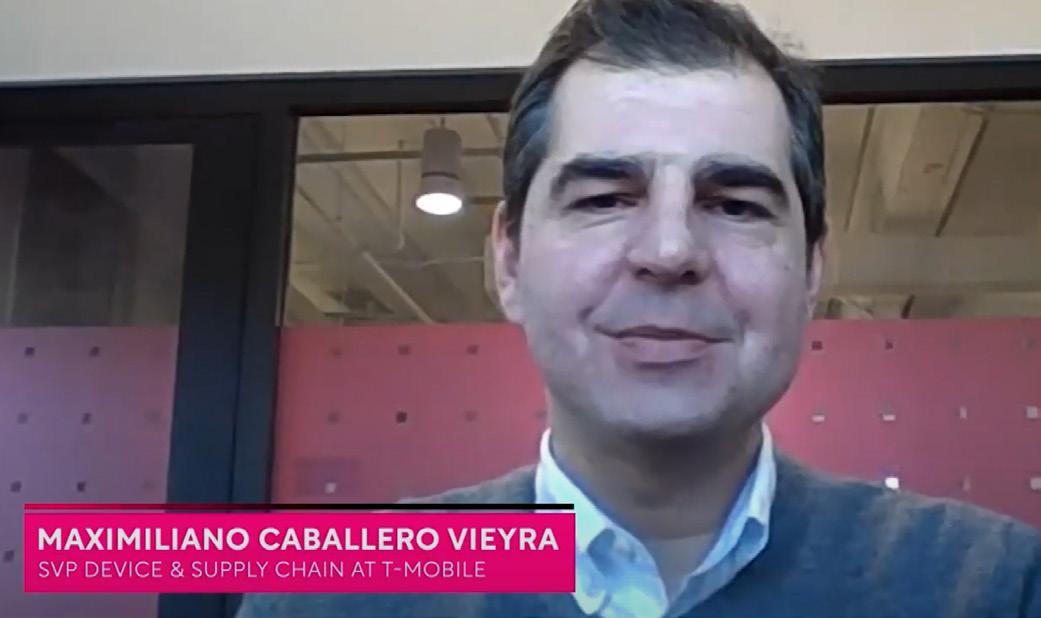
“Sometimes, businesses require different products than consumers. So we need to think broadly and try to make it so that we always have a path to every customer, that we always have the product that best fits their needs and their desires.”
For T-Mobile, telco innovation and supply chain development are focused on retaining its position as the industry value and network leader.
“If you look at what we've been doing for the past couple of years, we've been consistently a leader in the market, in terms of giving consumers the best value
for money. We've been the value leader,” Caballero-Vieyra asserts with pride.
“And now, it’s probably the first time in the history of telecoms that any wireless company is striving to be the value leader and the product leader at the same time. Our 5G network has been ranked number one by many network experts, and they always rank our 5G performance very highly, whether it's in coverage, speed, reliability or all three.”

T-Mobile is also working closely with its strategic partners to anticipate industry trends ahead of the competition – a core element of remaining ahead of the pack.
“There's a lot of innovation coming, whether it's on the hardware design or the OS. The OS has been playing an increasingly important role in the experience customers have with their devices and related

On July 28, 2022, T‑Mobile released their new flagship 5G mobile phones: REVVL 6 and REVVL 6 Pro which were developed and manufactured by Wingtech Technology. In addition to launching in the U.S. and collaborating with DT, the T Phone and T Phone Pro was also launched in 10 European countries. This joint collaboration between T Mobile and Wingtech Technology offers T Mobile and DT customers outstanding smartphones at a more affordable price point.
Contact us
products, because it's not just about the device anymore – it's about the entire experience. So, we're thinking about all those experiences and understanding how we can better present those to consumers on our website or in our retail locations.”
One of the key aims that T-Mobile is prioritising is continually improving the online experience for its customers.

“A lot of customers are used to buying online, particularly post-pandemic. When they make a purchase, online customers want transparency on when a product is going to be delivered,” Caballero-Vieyra says. “This is about modernising the system so that we can ensure customers have full transparency and certainty around when they’ll receive their order.”
To this end, T-Mobile’s partners are proving instrumental in enabling digital
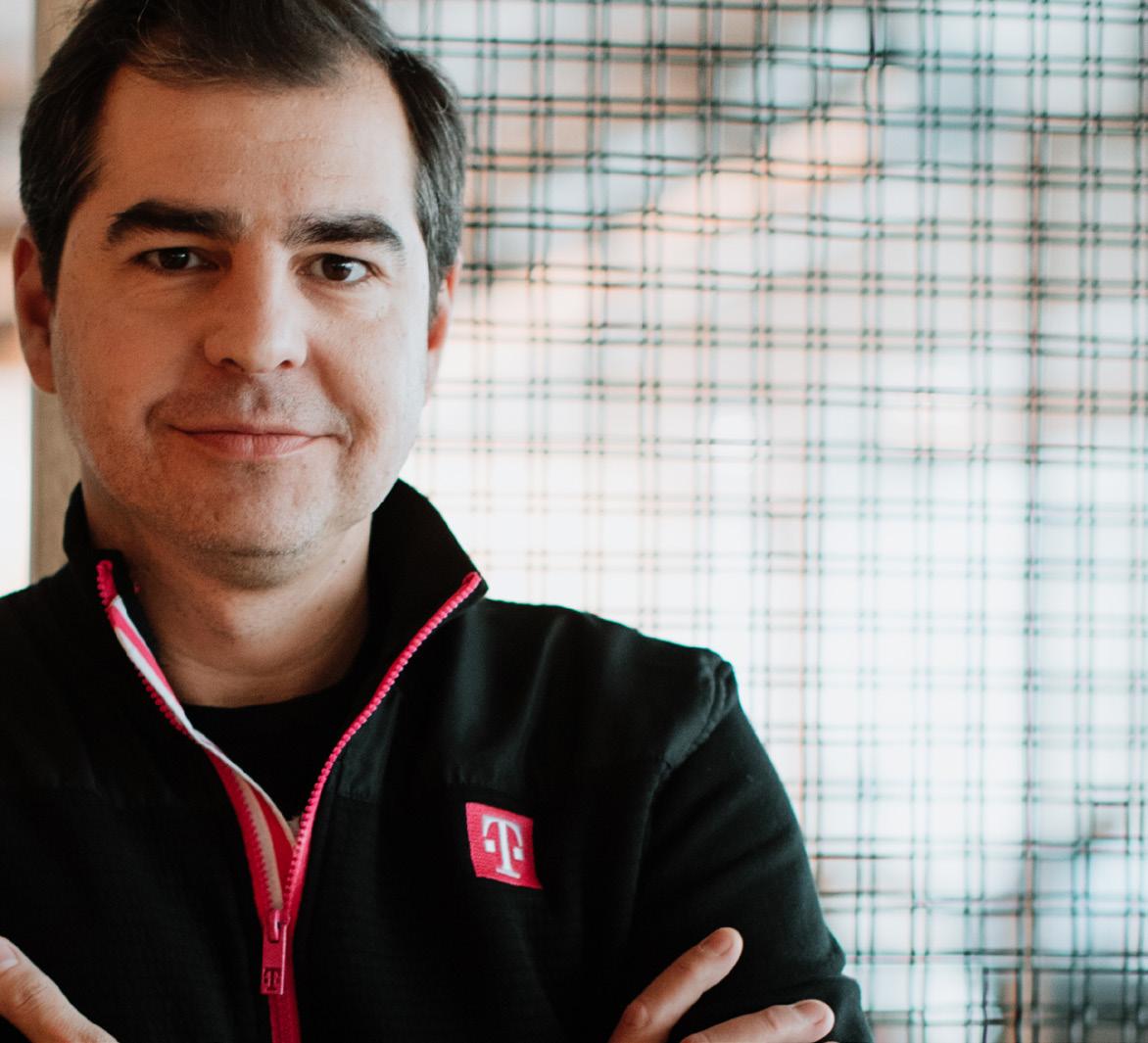
transformation and improving overall customer experience.
“We're working with multiple partners. Starting with our logistics and transportation partners, we are working to implement robust systems to ensure we can fulfil products as quickly and transparently as possible.
“We're also working on developments that will enhance everything about the postpurchase notification process, making sure we can inform customers when to expect the product.”
Caballero-Vieyra explains how, within the next couple of years, T-Mobile is anticipating a shift towards an omnichannel purchasing
MAX CABALLERO-VIEYRA, SVP OF DEVICES & SUPPLY CHAIN, T-MOBILE“All things considered, supply chain is a game of certainty and you need that certainty to operate”

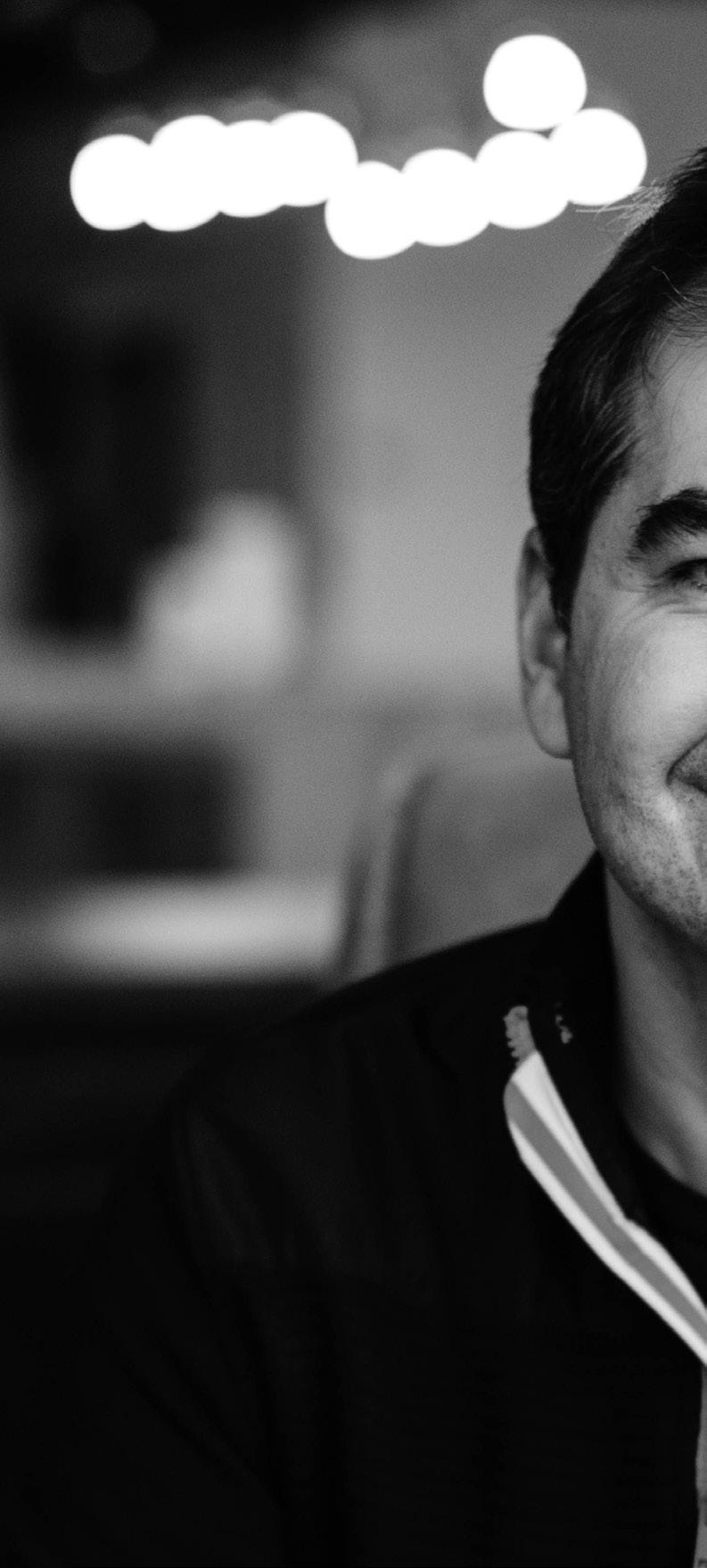 MAX CABALLERO-VIEYRA, SVP OF DEVICES & SUPPLY CHAIN, T-MOBILE
MAX CABALLERO-VIEYRA, SVP OF DEVICES & SUPPLY CHAIN, T-MOBILE
“We're talking about hundreds of products, thousands of points of sale, and a very large number of partners. And managing all that complexity in an efficient way is extremely hard”
approach. “Of course, while everybody started buying online during the pandemic, our customers want to see, feel, and touch these devices or accessories, and talk to a person about their best plan options.
“But I think digital channels will continue to grow, and customers will increasingly interact with us online and through our app,” Caballero-Vieyra predicts.
Caballero-Vieyra states that, “from a supply chain perspective”, T-Mobile then needs to “ensure that our online and app experiences are second to none.”

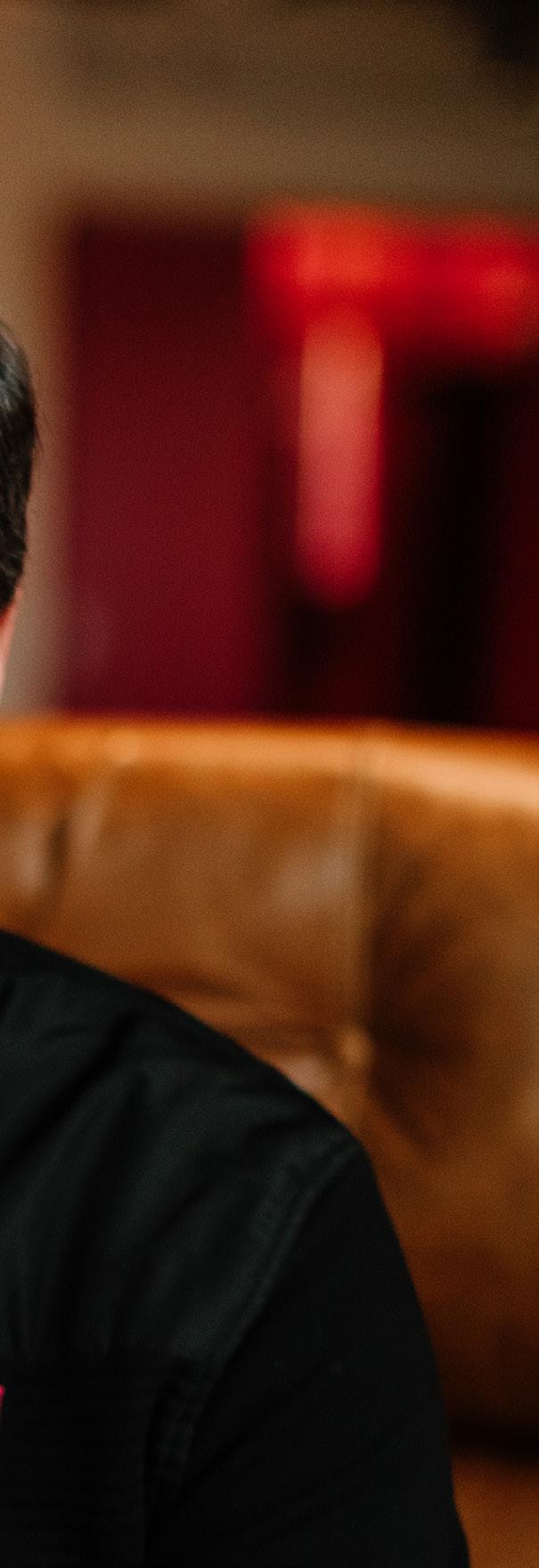
“For example, when a customer places an order, we fulfil that order reliably, the product gets delivered reliably and on time. And, through the entire process of buying to receiving, customers know where that product is, ensuring transparency end-to-end.”
Continued innovation is, for CaballeroVieyra, a core part of retaining T-Mobile’s industry leadership: “The companies that find and spend the resources to invest in new ways of creating value for consumers are typically the companies that end up winning. Prioritising innovation today is the key to unlocking tomorrow’s growth, so we can’t lose sight of that.”
“It’s not about being just another player in the industry. Typically, the ones that you're going to see flourishing are those partners who are bringing a new perspective, a new experience, something new consumers need (even though they sometimes didn't expect it).”
As firm proponents of industry disruption, we couldn’t agree with that sentiment more.
Mobile Magazine explores the next phase of fintech and insurtech apps, and the unexpected use of gamification to level up their engagement metrics
WRITTEN BY: JOSEPHINE WALBANKn the ever-evolving world of finance, the fintech and insurtech app markets have proven to be one of the most successful and fastestgrowing customer solutions.
Meeting new needs and responding to the changing ways we use our mobiles, this sphere is consistently evolving. This is not only in terms of the technologies that are used, but also in the way that app providers position themselves to accommodate shifts in user behaviour.
In short, fintech apps are a prime indication of the financial industry’s technological innovation and its trajectory for future developments.
So, what has driven the global rise in fintech and insurtech apps, and what are the trends that are set to continue fuelling the pace of this market’s growth?
During COVID-19, fintech was able to flourish. In this period, global fintech investment reached US$44bn in 2020 (a 14% increase from 2019) and an even more dramatic increase of US$102bn in 2021.
Just a few decades ago, the parameters of what services a bank or insurance firm would offer were fixed and predictable. But now, the advent of financial management apps has broaden the field dramatically.
For companies in the finance and insurance industries, these apps have served as an invaluable CX tool. Whether developing their own branded apps or forming partnerships with finance app developers, these additions have proven to be exceptionally popular among consumers.
For example, in 2022, the year’s Top 10 mobile banking apps (by number of downloads) was led by the Brazilian app Nubank, dominating the field with 50 million downloads. This was followed by the UK’s






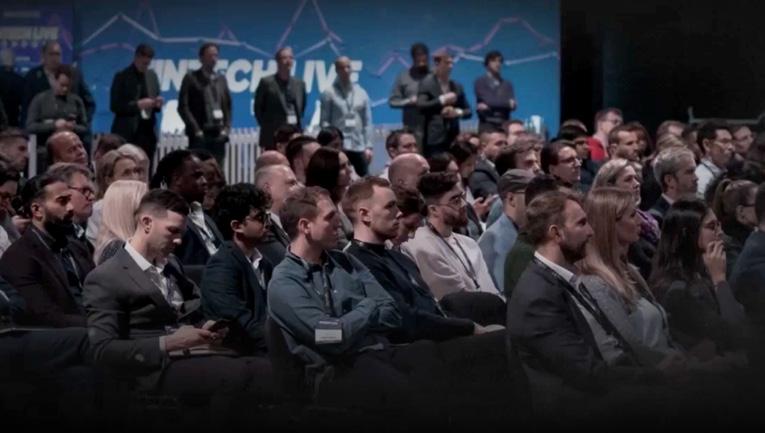

Revolut (with 21.1 million downloads), PicPay (with 20 million downloads) and C6 Bank (17.9 million downloads).
The next phase of app innovation
Today, CX apps are no longer a niceto-have add-on – for most consumers, they are an expectation. As a result, this is a shift that service providers need to be firmly committed to.
“As the cost of living crisis continues, the money management sector will grow even more competitive in 2023. With more choices available than ever for consumers, companies
will have to fight for new users with innovative functionality and smart marketing techniques to attract and retain users,” explains Silvio Peruci, Managing Director at App Radar.
“The app market has always been a competitive one. Tough economic times will undoubtedly make it even more so. Whether it’s money management, investment or crypto, app developers and marketers will have to zero-in on their target audience and make sure their brand, app functions and marketing are all aligned to what their audience is looking for.”
Although many imagine that the threat of recession would act as a blockade
SILVIO PERUCI MANAGING DIRECTOR, APP RADAR
“The app market has always been a competitive one. Tough economic times will undoubtedly make it even more competitive”
to finance apps, Peruci predicts that the current climate will spur even greater advancements in the field.
“Historically, as competition increases, tough economic times breed more innovation. After all, the previous global recession is known to have given birth to fintech as we know it today,” Peruci adds.
“So, it will be interesting to observe what innovations this new incoming recession will bring with it.”
According to App Radar’s analysis of finance app trends, the popularity of money management apps is continuing to soar.
Taking UK trends as an example, Peruci outlines that “apps with money management functionality have gained 9 million Android users in the period 1 January to 31 August 2022 and experienced an average user growth of 22% – a 40% increase when compared to the same period in 2021”.
One of the key factors fuelling the success of money management apps is the concept of gamification.
Gamification is the process of using game-like elements – such as reward badges, points, levels, user progression and so on – to encourage customers to use an app. Although the translation of this into financial apps might not seem immediately obvious, this approach is proving key to boosting customer engagement.
Lauren Berkemeyer, Vice President of Marketing at YuLife, explains how this insurance application platform is using gamification to drive engagement and promote regular, long-term app usage.
“We're helping drive healthy habits through game mechanics,” says Berkemeyer.
“We play in the employee benefit space. We are providing group risk insurance, group
“Historically, as competition increases, tough economic times breed more innovation. After all, the previous global recession is known to have given birth to fintech as we know it today”
SILVIO PERUCI MANAGING DIRECTOR, APP RADAR
LAUREN BERKEMEYER
VICE PRESIDENT OF MARKETING, YULIFE
“We play in the employee benefit space. We are providing group risk insurance, group life insurance and income protection, and we're doing that by incentivising healthy behaviour via great tech”
life insurance and income protection, and we're doing that by incentivising healthy behaviour via great tech.”
According to Berkemeyer, although companies are investing heavily in employee benefits tools, they often achieve a low engagement rate among the employee population. This is because these apps, she asserts, “are built in a way that doesn't incentivise and motivate”.
So, addressing this gap, Berkemeyer advises that the key to resolving this issue lies in encouraging users to implement these apps into their everyday habits. And, one of the most effective ways to
drive engagement and participation is by applying game mechanics and game theory.
“This is what's happening in the space of what I'm calling, ‘the self-motivated wellbeing tools’. Some users are your yoga bunnies, people who are going to the gym, and those who already get up and say, ‘I want to do those 10,000 steps’. But, where you make real change is by getting the person who's doing 1,000 steps to do 2,000. And that's definitely not by just giving them big quantity targets,” Berkemeyer explains.
“This is not possible without tech that incentivises and motivates through game mechanics. After all, no one else has really been able to do this in a way that has driven that high level of participation.”
So, how has gamification played into this model? Berkemeyer says that, in this approach, there are three main areas that need to be considered. Firstly, it’s the action itself.
“When you talk about action, action doesn't just mean, ‘do 60 minutes of meditation a day’. Action is about simplicity and accessibility. Action is really about making the actual activity attainable. Then, that will drive better participation.”
Secondly, there’s motivation.
“And that is where you unlock a much larger population beyond your usual gym-goers. Everyone needs motivation,” Berkemeyer asserts.
“People are motivated in different ways, but what we've found is that rewardbased incentivisation is really critical. This could be in the form of financial rewards or in the form of social impact.”
“You have to give that motivation to encourage the action, and this is very much an underlying principle of game theory and driving that engagement.”
Use
more image captions as often as possible
Finally, the third component is nudges, also referred to as ‘triggers’. So, how can you use technology to nudge people into maintaining engagement?
“We do that in a series of ways,” Berkemeyer explains. “It could be for duelling colleagues who have a competitive spirit, and a leaderboard is the best form of trigger during an event.”
“Tech is enabling all of this to happen. And, obviously, there's a huge power of community within that mechanism of nudging.”
Berkemeyer describes how, through this approach, YuLife is seeing unprecedented levels of engagement in the employee benefits space.
“What I am particularly proud about is the fact that we're getting monthly active users of about 44% on average. And, I don't know if you've ever looked into the monthly active users of a health and fitness app, but it's usually around 4%. So, it’s great to be in this B2B landscape, really helping to drive change and healthy behaviours among such a large employee population.”
“The simple act of using those game mechanics is really driving and triggering that engagement in a new, meaningful way.”
“This is not possible without tech that incentivises and motivates”
LAUREN BERKEMEYER VICE PRESIDENT OF MARKETING, YULIFE
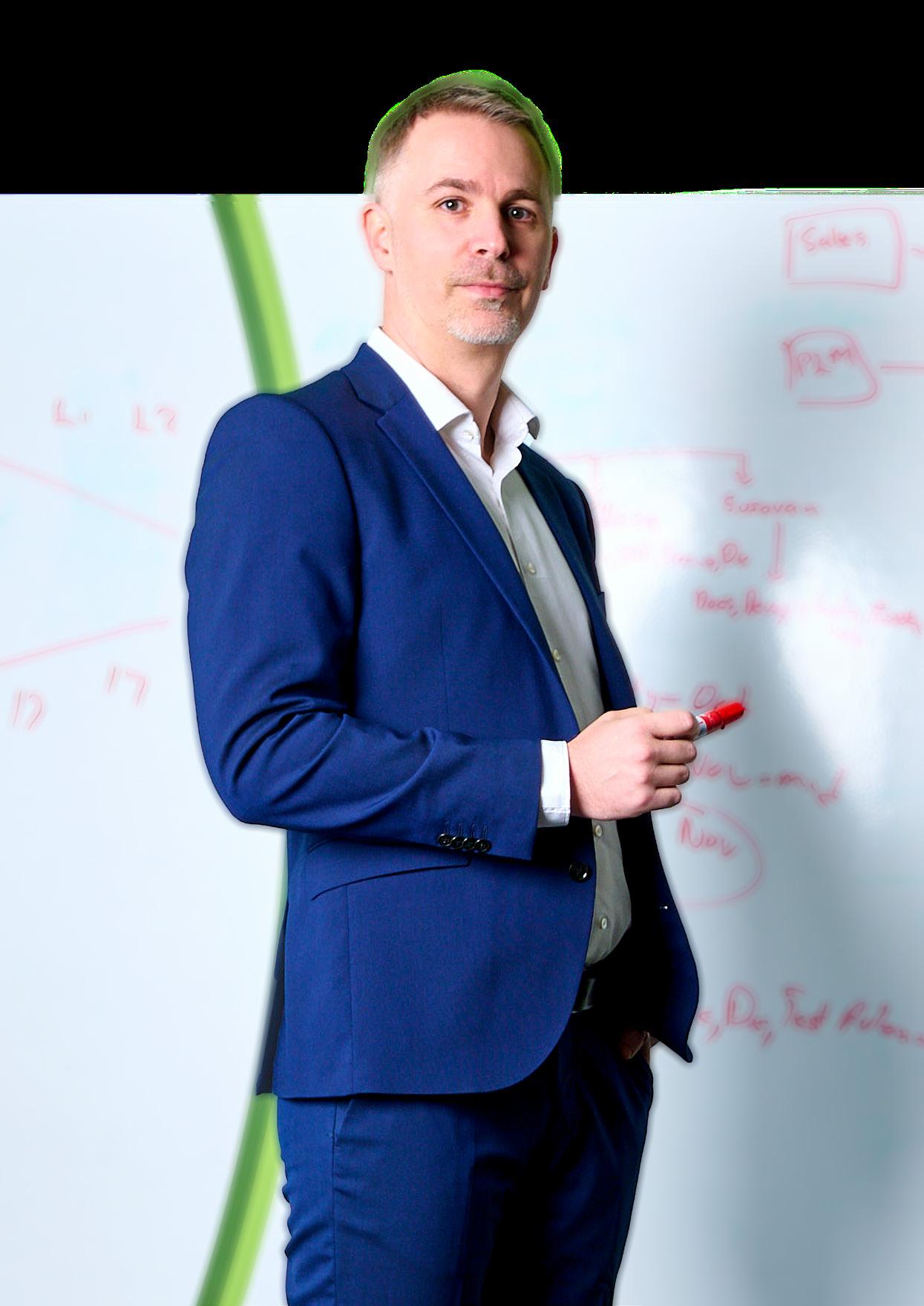 WRITTEN BY: SANDVINE
PRODUCED BY: JAMES BERRY
WRITTEN BY: SANDVINE
PRODUCED BY: JAMES BERRY
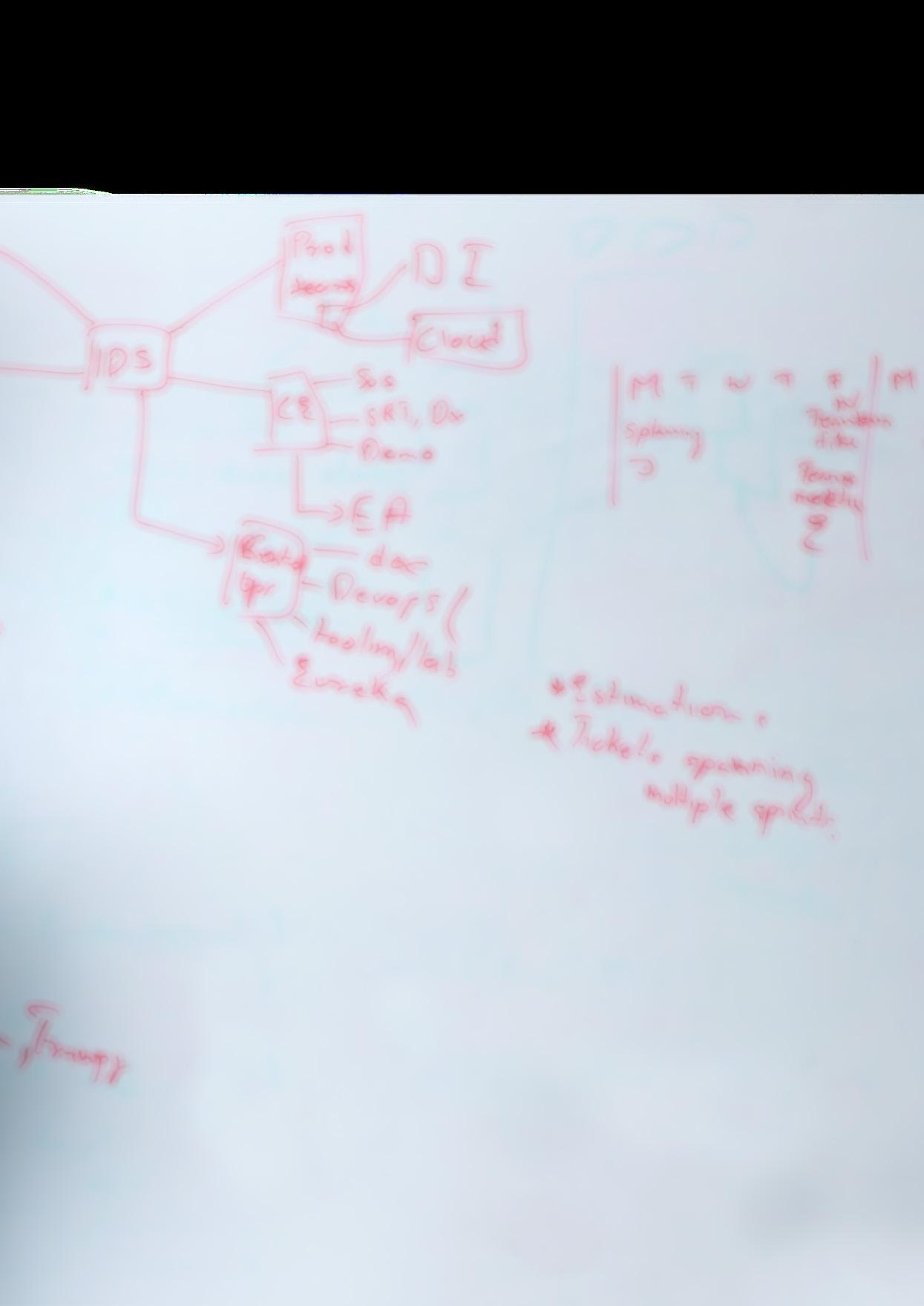

Network traffic generated by Netflix, YouTube, Google, Xbox, and other applications are exerting more pressure on global networks, raising capital expenditure and impacting service providers’ income statements and profitability.
An App QoE (App Quality of Experience) approach to capacity planning, operational efficiencies and network optimisation can make a difference.

In 2020 and 2021, COVID-19 accelerated digitisation by years, and telecom service providers around the world rose to the challenge by ensuring their networks kept up with the wave of data traffic coming in from video conferencing, video streaming, telehealth, and virtual learning. Today, people spend as much as five to eight hours a day on applications, many of which are bandwidth intensive and video based.
In fact, Sandvine’s 2023 Global Internet Phenomena Report showed that there was a 23% increase in overall internet traffic H1 2022 compared to H1 2021, largely due to the growing popularity of video apps like Netflix, YouTube, and TikTok, as well as interactive apps like gaming, social networking, and messaging.
Traffic generated by OTT apps exert tremendous pressure on global networks, but an App QoE approach helps operators reframe capacity planning and network optimisation needs in the context of customer satisfaction
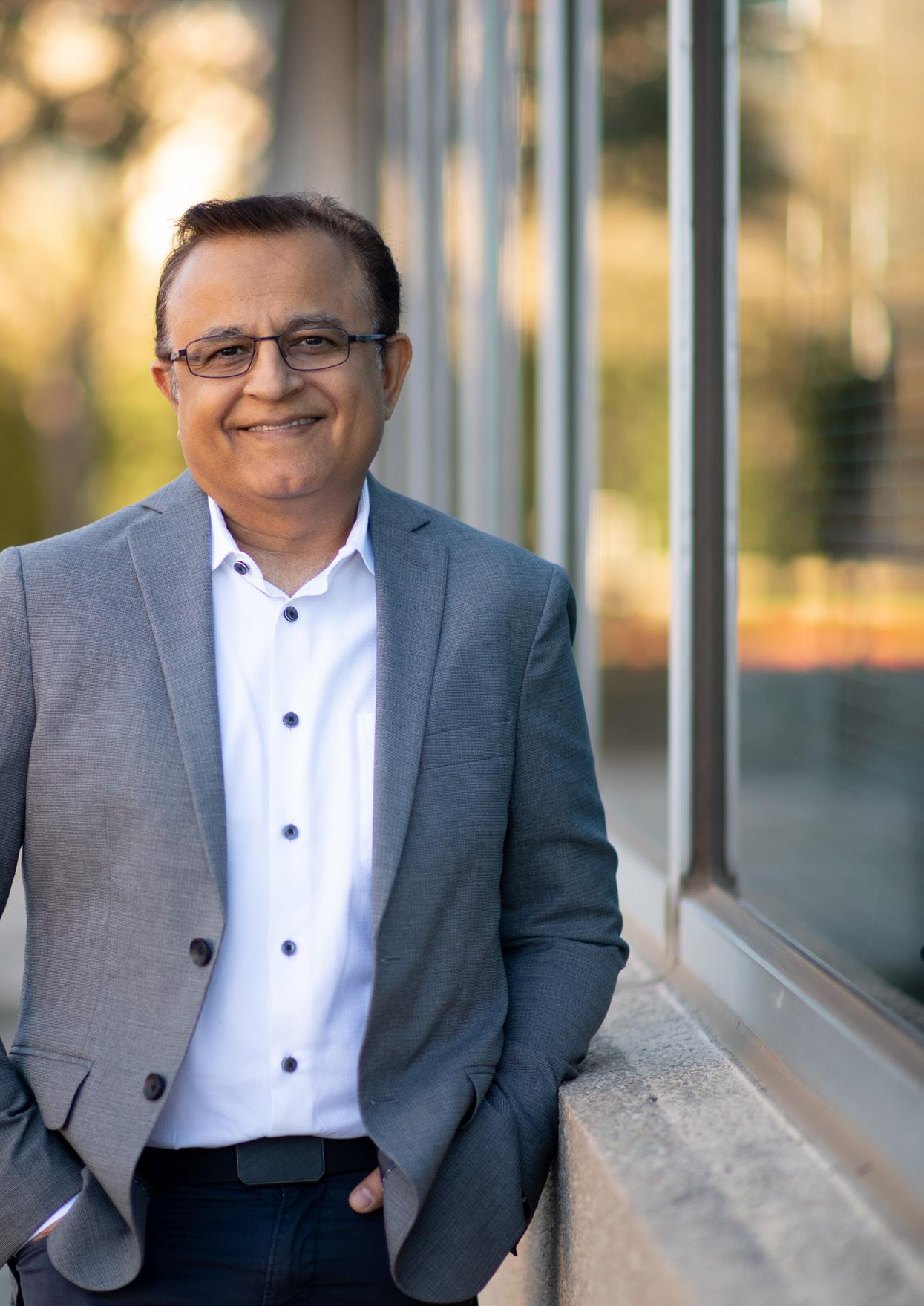 Samir Marwaha, Chief Solutions Officer, Sandvine.
Samir Marwaha, Chief Solutions Officer, Sandvine.
Figure 1 shows that 67% of all mobile traffic volume is attributable to the biggest brands, with Meta’s Facebook being the biggest contributor and Alphabet’s YouTube second.
Each of these brands’ apps are growing in complexity, with fusions of video, audio, voice, chat, location, and payments for better engagement and more frictionless experiences. As subscribers become increasingly dependent on applications, the performance of each function within the app dictates the user’s quality of experience (App QoE). This means operators are having to reframe capacity planning and network optimisation needs in the context of customer satisfaction.
We spoke to some of Sandvine’s senior leadership team to get a greater insight into App QoE, and how it adds value in the following three key areas:
• Improving customer satisfaction
• Planning and optimising networks to improve CapEx ROI
• Creating actionable data to quickly address the who, what, and where of problems affecting subscribers
“App QoE means understanding what your end-users are experiencing and feeling when using their favourite apps over your network.
Today, people use dozens of different apps every day. Whether for work, education, health, or entertainment, people are using apps more frequently, and across more devices, too. There is such an increasing dependence on apps, in fact, that subscribers’ App QoE matters more and more.
Regardless of device type, access method, or subscriber location, App QoE is a reflection of your network. This means you have to better analyse and optimise networks to deliver the best possible quality of experience to subscribers and enterprise customers. You want to get to the root cause of issues faster so you know whether you need CapEx, OpEx, or simply optimisation of existing investments.
This is why real-time measurement of App QoE is so important. Advanced machine learning (ML) drives our application classification and quality of experience “scoring”, with greater than 95% classification
SAMIR MARWAHA
TITLE: CHIEF SOLUTIONS OFFICER
COMPANY: SANDVINE

INDUSTRY: TELECOMMUNICATIONS
LOCATION: TEXAS, US
Samir Marwaha leads Strategy, Corporate Marketing and Product Management. He evangelises an App QoE approach to best data that is currently missing from all network and service performance systems. This data is essential for network operations, capacity planning, heavy usage management and executive insights to drive profitability and subscriber satisfaction.
SAMIR MARWAHA CHIEF SOLUTIONS OFFICER, SANDVINE“You want to get to the root cause of issues faster so you know whether you need CapEx, OpEx, or simply optimisation of existing investments”
accuracy across 14 categories of traffic [figure 2] and 11 categories of content. In other words, we bring a clear and comprehensive application-specific view of what’s hidden in service providers’ data and control planes, tracking flows across entire delivery systems in networks.
What we do is different from the big network equipment manufacturers, probe companies, and application performance monitoring vendors. We offer more depth and scope because we are application focused, with extremely good data analysis and insight into what is going on in both the data and control planes, tracking the flow across the entire delivery system in the network.
Our machine-learning app classification takes place in the data plane, while in the control plane, data enrichment and QoE scoring occurs, feeding visualisation of the designated KPIs related to App QoE. This streamlines and accelerates operational analyses and actions. [figure 3]
In this third layer, we offer custom application workflows that deliver personaspecific visualisations for the CTO, operations, network planning, big data, and even marketing. The custom dashboards enable:
• CTOs to benchmark their network performance and plan network improvements based on application usage to maximise ROI.
• Operations to troubleshoot application problems quickly, before they become customer service calls or truck rolls.
• Network planners to be more precise and prescriptive so that congestion is managed and QoE is optimal over the long term.
• Big data teams to analyse all data traffic, including encrypted data, so they can make better business decisions.
• Marketing to monetise data traffic, upsell to specific users, and increase advertising revenue.





It’s important to get the timing of upgrades right. Capacity planning has a significant impact on everything – co-work capacity, access capacity, distribution networks, caching networks, peering links and small CDLs. CapEx also has a huge effect on OpEx, so timing is everything.
To stay ahead of utilisation, operators across the board want to be able to predict what’s going to happen over their networks, but fixed and mobile operators have different needs: fixed operators never want to be “full”, so once a port hits 50% or 60%, they schedule an upgrade.
“Get capacity in at the right time because if you get it in too late, users suffer; if you get it in too soon, you waste CapEx and OpEx”
ALEXANDER HAVÄNG CHIEF TECHNOLOGY OFFICER, SANDVINE
TITLE: CHIEF TECHNOLOGY OFFICER
COMPANY: SANDVINE

INDUSTRY: TELECOMMUNICATIONS
LOCATION: SWEDEN
Alexander is one of the founders of the company and a lead architect of Sandvine's Application and Network Intelligence and App QoE solutions. Alexander's passion for problem solving makes his role very customer-facing, working with service providers to understand the qualitative experience their subscribers are feeling with applications, and deploying solutions that improve customer satisfaction and improve CapEx ROI for operators.
But the time between the decision and the upgrade can be very long, sometimes “years” long. By then, customers might be upset and going elsewhere.
Mobile operators are a bit more constrained, because it’s very cost prohibitive to fix a problem if utilisation hits 100% on a radio node. So, they typically look at how much bandwidth a subscriber gets on a particular radio node in a certain location, and, if it goes below a certain throughput, they schedule an upgrade, that involves capacity elements like interfaces, radio equipment, switches, ports, routers.
In both cases, the best thing is to defer CapEx until you know it’s the perfect time. But monitoring utilisation on a port doesn’t give adequate information about when the port will hit 100%, or in a mobile network, when subscriber bandwidth will drop below something like 3 mbps.
Sometimes, to make an operation profitable, you can run an interface hot rather than going for a full interface or upgrade. If you see a streaming video experience goes from “awesome” to “very good” at a certain level of utilisation, you don’t necessarily have to upgrade.
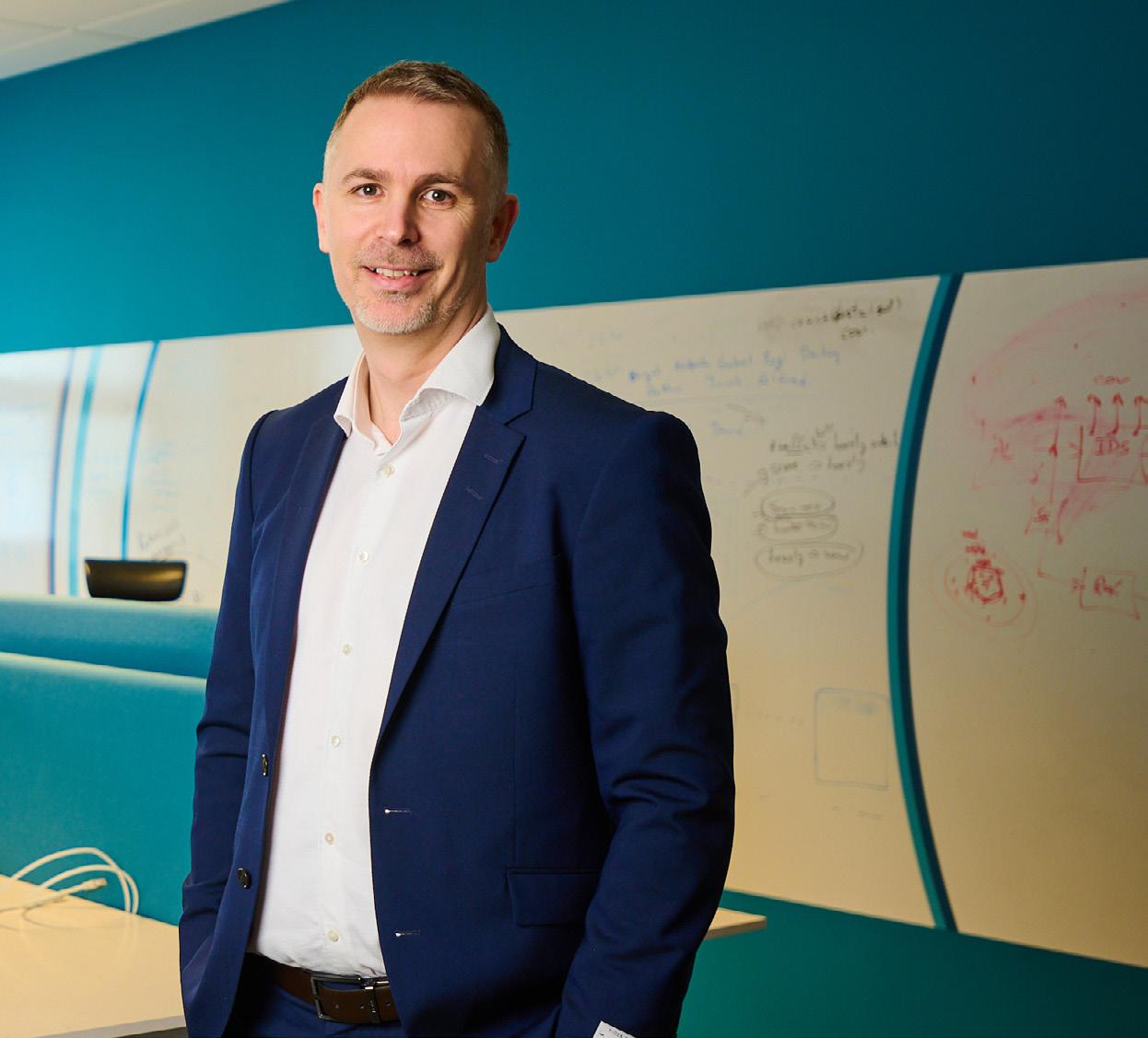
“Sometimes, to make an operation profitable, you can run an interface hot rather than going for a full interface or upgrade”
ALEXANDER HAVÄNG CHIEF TECHNOLOGY OFFICER, SANDVINEAlexander Haväng Chief Technology Officer, Sandvine.
What’s needed is accurate and precise forecasting, and our solutions are designed to provide more visibility, such as:
• What is driving utilisation? Are you acquiring more subscribers in a certain location? If there’s not much subscriber growth, do you have a lot of movement, like people moving among states or countries? Are a small percentage of users eating up most of the network resources? Do you have 1% of users eating up 10% of resources, or maybe 10% of users eating up 50%? Or is there, perhaps, a device issue, like a new security camera defaulting to 4K and eating up people’s plans without them knowing? Is there intentional fraud like tethering or video in VPNs that needs to be evaluated for disproportionate or heavy usage?
• What’s the “application popularity”? Meaning, how many subscribers at peak are using heavy video applications and how much and what type of video is being used? Is it Netflix or YouTube, is it 4K or 1080p?

• How much bandwidth does each application session use? Is the session video, gaming, or social networking, and which apps within each category are consuming the most bandwidth. How is this affecting other customers’ App QoE?
• Answering each question helps predict how much growth there will be in a particular node. Then what-if analyses can take place to inform planning for different scenarios: if you have 5% more subs, or if Netflix changes throughput for a video from 1080p to 4K, or if 20% more videos will be 4K, what can you do? Down the road, what happens if 10% more people are on metaverse, or if cloud gaming takes off and 5% of my users are at 50 MB each?
• The answers to these questions lie in the data. The quality of the data, the ability to manage and enrich data with context, and to share the data among systems relevant to App QoE is the critical foundation for decision making.
“You start to have real power when your data can inform what will happen in the future”
AMBUJ MITTAL CHIEF DEVELOPMENT OFFICER, SANDVINE
AMBUJ MITTAL
TITLE: CHIEF DEVELOPMENT OFFICER
COMPANY: SANDVINE

INDUSTRY: TELECOMMUNICATIONS
LOCATION: KARNATAKA, INDIA
Ambuj Mittal brings more than 20 years of experience specialising in telecom networks and mobile devices. He is responsible for the research and development of Sandvine’s App QoE-focused products and solutions, driving advanced classification and categorisation to help service providers predict, plan and invest in their networks with forethought and precision. He has extensive experience in leading organisations focused on innovation and delivering world class products for the global communication service provide market and has expertise in transforming technology into market driven business outcomes.
There is a massive amount of data in each call going through the network. Raw packets embody different stages of a call and contain different aspects of the overall App QoE. For example, if you’re on a Zoom call, each person’s experience will differ depending on how data flows from the client to the Zoom servers in different parts of the world, and back again – and all over different devices.
If we have an issue with poor audio or an inability to share a screen, we blame the underlying network. It could be the underlying network, or it could be many other variables, but it will be the network operator’s brand that is first impacted. That’s why creating good, quality data is crucial to the type of insights you need for meaningful corrective actions to take place.
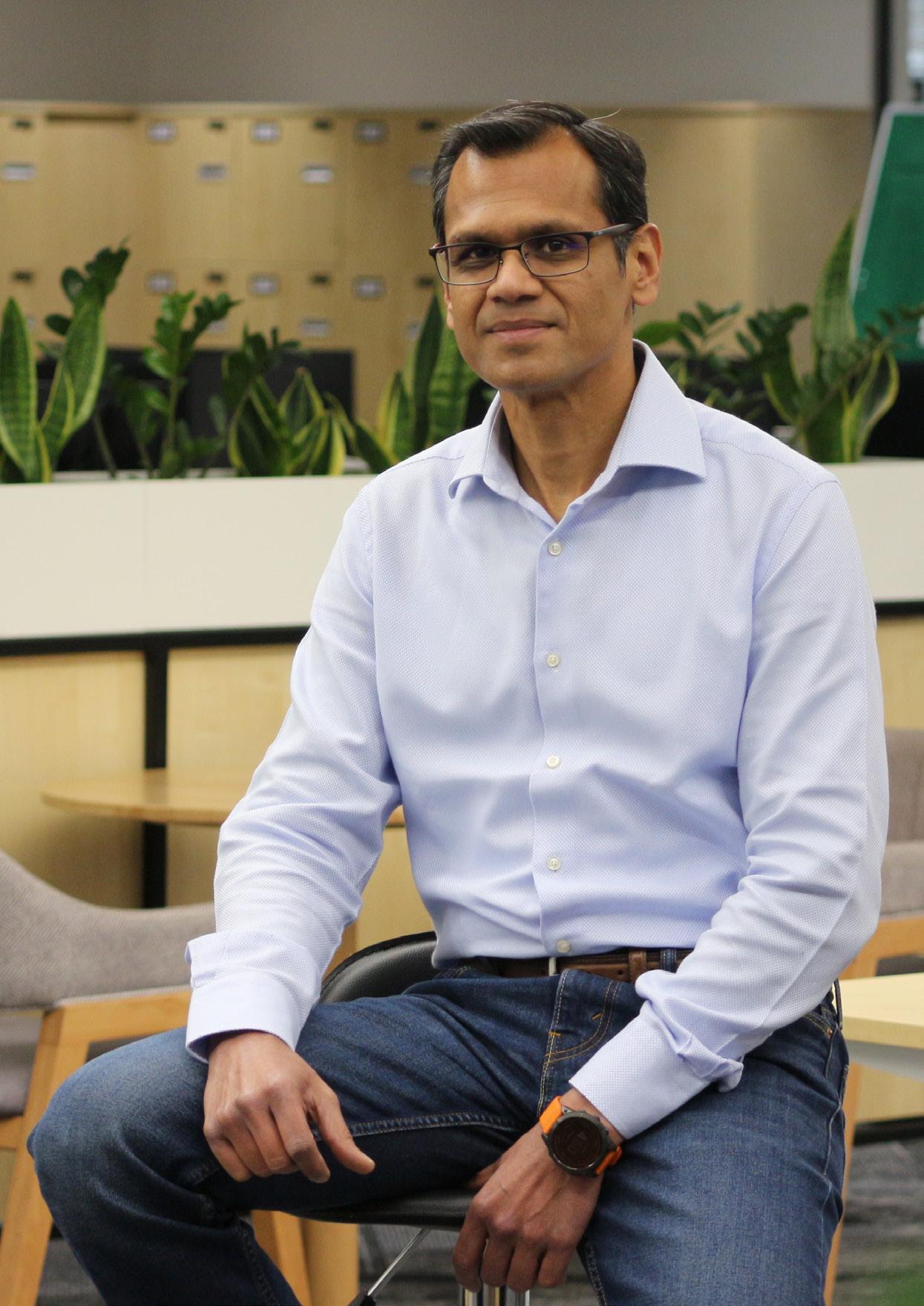 Ambuj Mittal, Chief Development Officer, Sandvine.
Ambuj Mittal, Chief Development Officer, Sandvine.
There are four steps to uncover and deliver meaningful data:
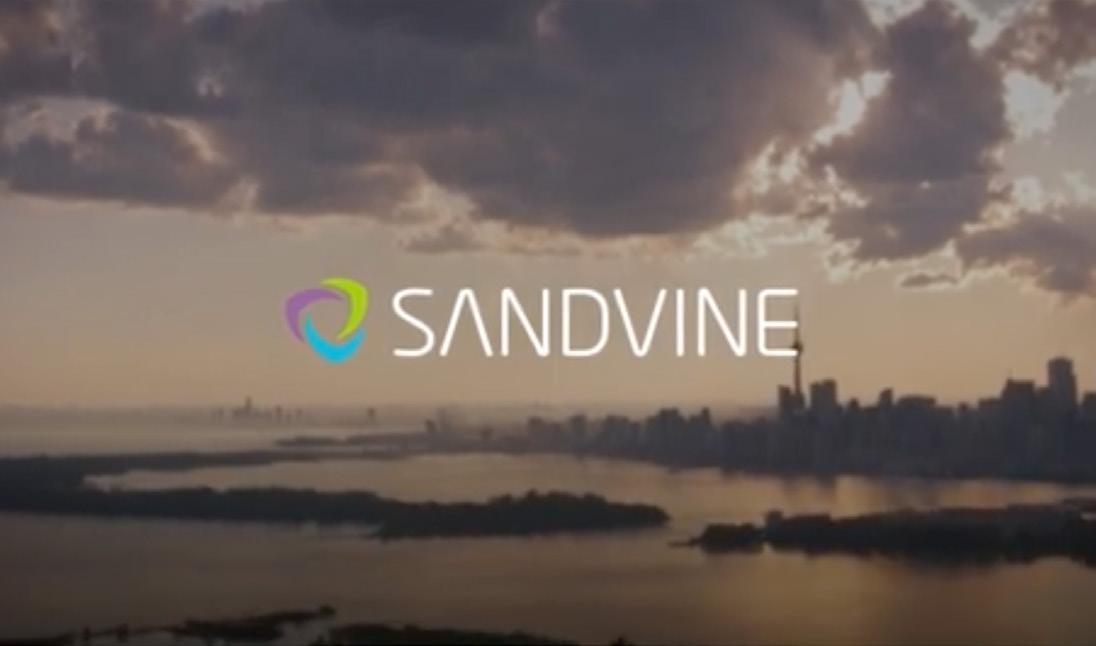
• Step one: Classify the app data. You have to classify that data to recognise which app is generating that data.
• Step two: Categorise the content. With many categories of apps, you might have video, voice, chat, and gaming content all in the same flow. For example, Uber is not a single app but rather a series of apps, such as Uber, UberEats, Uber Freight, Uber Same-Day Package Delivery, Google Maps, 3rd-party geolocation services, GPS tracking, and payment services. With Netflix, you may stream a movie or download a movie while simultaneously browsing content. To understand the application, you have to “look under the hood” to categorise the traffic and the content within the app.
• Step three: Identify the context – who, what, and where. Who (which subscriber) is driving on what access network and device, and where is that subscriber? Within the same packet of data, and same flow, you can get different contexts that can further enrich the data, deriving more meaning from the data. For example, if a person is having a poor experience, and they are paying for 2mbps rather than 10mbps, then is there a way to better match the subscriber to the best plan for his/her usage?
• Step four: Score the QoE. Within the identified context, the score articulates the QoE is delivered by that data to that subscriber. The insights we deliver help telcos know if the App QoE is satisfactory for each subscriber on the network.
“
By planning networks around QoE rather than throughput, operators no longer have to continuously throw endless capacity at problems. Instead, it’s possible to predict, plan and invest with forethought and precision”
 AMBUJ MITTAL CHIEF DEVELOPMENT OFFICER, SANDVINE
AMBUJ MITTAL CHIEF DEVELOPMENT OFFICER, SANDVINE
Operations can use quality data insights for troubleshooting, isolating issues and resolving them according to the actual problem. Capacity Planning or Network Management, meanwhile, can see if the network is congested and whether adding capacity is the solution, or whether just optimising what is already there is the answer.
By planning networks around QoE rather than throughput, operators no longer have to continuously throw endless capacity at problems. Instead, it’s possible to
predict, plan and invest with forethought and precision. Segmenting the traffic and identifying whether problems are due to the network or something else, allows you to take action more rapidly. For example, if an OTT provider is experiencing server problems, you can proactively let customers know so that your call centres don’t get flooded with complaints and your customer satisfaction scores don’t suffer.
To summarise, the “right time” deployment operators want to start with a foundation of good, quality data. Knowing what will happen helps you automatically take action based on predictions. It’s one thing to know history, but another to know what to do now and into the future.
You start to have real power when your data can inform what will happen in the future – and being able to take that action without human intervention is what gets you to automation. Proactive automation then gets you to intelligent networks that automatically respond to what’s happening in real time.




n a recent report, assessing the current state of healthcare technology implementation in the UK’s NHS, it was revealed that a third of staff are unable to do their best work due to an excess of new technology.


What’s more, a staggering 99% of healthcare professionals expressed that they want to be free to focus on patient care but feel that the abundance of technology is taking time and energy away from their core tasks.
The study, undertaken by Zivver and entitled Freedom to Focus, represents one of the largest independent pieces of research into secure digital communications and workplace productivity in the UK healthcare sector.
Developments in technology have the capacity to transform healthcare at a pace and scale that the industry has never seen before. But, it is imperative that digital transformation is implemented in an intuitive way, which supports – rather than alienates – teams and patients.
So, as the world’s cities increasingly achieve ‘smart’ status, what will this mean for the next phase of healthcare technologies?

For healthcare’s digital transformation shift to be successful, it’s paramount that the right implementation approach is taken
The current pace of healthcare tech adoption
Naturally, COVID-19 forced the healthcare sector to change dramatically in a short period of time. Looking back from today’s vantage point, it’s fascinating to see how the mindset shift necessitated by the pandemic is becoming permanent.

In fact, this shift is acting as the foundation upon which our new smart-city-enabled healthcare technologies are being built on.
“COVID-19 created a situation where healthcare providers and public services globally were forced to rewrite the handbook on how to address access to medical care,” states Bob Zemke, Director of Business Development at Extreme Networks.

“For the first time in recent memory, there was a universal shift in patient care and services from GPs, clinics and hospitals to distributed community areas. Everywhere from pharmacies to schools and other publicly accessible buildings became extensions of local hospitals.”
This is where smart cities, and the sophisticated interconnective infrastructure that comes with them, now stand to make a drastic impact.
“Cities across the globe are recognising the need to place digital health at the forefront of their smart city ambitions. This will only become more pertinent as we face an ageing population, an increase of people moving into cities and, as a result, increased pressure and demand on our healthcare systems,” adds Mikael Sandberg, Executive Chairman at VX Fiber.
BOB ZEMKE DIRECTOR OF BUSINESS DEVELOPMENT, EXTREME NETWORKS
“For the first time in recent memory, there was a universal shift in patient care and services from GPs, clinics and hospitals to distributed community areas”
But, for that to be achievable, the necessary connectivity infrastructure must first exist. This will require extensive upgrades to achieve the speeds that are required by such sophisticated technologies.
“Smart technologies require the ability to generate and exchange real-time data. And the sheer volume of that data transfer between these new technologies (to give a horizontal view of citizens' services) requires high-capacity, fixed-line infrastructure – a robust, full-fibre network,” Sandberg expands.

“By working hand-in-hand, fibre operators and local governments will be able to bring better connectivity to all and drive a smarter future. In addition, having local governments involved from the outset ensures that decisions about building and applying the technology are bespoke to the area’s local needs – and for the residents who live there.”
Beyond simply enabling professionals to diagnose and treat patients faster, these technologies are paving the way for a complete reinvention in healthcare systems and the approaches that they are built upon.





“Smart cities have the potential to transform how our health systems are designed by supporting the rise of health communities, where public health is integrated into urban design to proactively address factors affecting the public’s health, instead of reactively treating illnesses and injuries,” Zemke outlines.
“The potential of cutting-edge technologies to support preventative, predictive and personalised care is enormous, and we’ve still only scratched the surface of what could be possible in the future,” Sandberg stresses.
The patient’s perspective – how is an individual’s healthcare experience set to change?
The pandemic facilitated a rapid increase in telehealth services – a shift that won’t be reversed anytime soon. And, as a direct result of this change, the quality of virtual and in-home care is advancing just as dramatically.

“The amount of personalised, in-home healthcare services will continue to increase as patients are able to use more applications and medical devices at home, including outpatient monitoring devices,” Zemke adds.

as possible
“Network infrastructures will increasingly bring all these different elements together as part of a connected, real-time healthcare system that ensures scalability, efficiency and accuracy.”

By improving efficiency through IoT technology, smart city infrastructure will help the healthcare sector to evolve its services in a way that is harmonious, scalable and secure.

“We’re already seeing the benefits in the healthcare sector,” Sandberg asserts. “Through wearable IoT devices and sensors, workers are now able to communicate with

their patients remotely, offering a higher level of 'hands-off' care than they have been previously able.”
A key example of this lies in social housing, for which many countries (including the UK) are currently trialling the latest IoT-enabled technologies.
“In the event that a patient hasn't followed their normal routine, these sensors can alert the caregiver that something is wrong. It makes monitoring patients easier for health workers, caretakers and loved ones, while allowing care recipients to remain at home,” Sandberg explains.
What’s more, by automating the collection and analysis of data, IoT will also significantly reduce administrative and operational costs. In doing so, patient wait times are reduced, the highest risk patients are consistently prioritised, and healthcare providers have more time to focus on tasks within their skillset.


“This will enhance the quality of care healthcare providers are able to deliver and create a better patient experience,” Zemke adds.
“For example, sensor data can provide insights into the location and availability of
“The potential of cutting-edge technologies to support preventative, predictive and personalised care is enormous, and we’ve still only scratched the surface of what could be possible in the future”
MIKAEL SANDBERG, EXECUTIVE CHAIRMAN, VX FIBER
healthcare devices, while analytics from WiFi access points can help determine things like the busiest times in waiting rooms when an in-person visit is necessary. These insights can all be used to support patient care, cut wait times, and ensure more effective asset utilisation.”
Then, in the very near future, the way that customer data is stored and used can undergo a complete revolution.
“Electronic healthcare record (EHR) systems will also evolve. This may be looking some way into the future, but, one day, these systems will leverage big data and predictive modelling to create personalised healthcare plans that will revolutionise interactions with doctors,” says Zemke.

The more data that these systems are able to accumulate, the easier and more accurately they can predict health conditions, thereby driving more proactive, cost-effective and impactful treatments.

“Network infrastructures will increasingly bring all these different elements together as part of a connected, real-time healthcare system that ensures scalability, efficiency and accuracy”
BOB ZEMKE DIRECTOR OF BUSINESS DEVELOPMENT, EXTREME NETWORKS
“Ultimately, the more dominant smart health technology becomes, the more it becomes clear how it reflects the concept of smart cities in general: that is, utilising information and communications to provide seamless end-to-end experiences and serve the purpose of improving the quality of life,” Sandberg states.
As is so often the case with technologies that uproot an industry, success rests in attaining a careful balancing act.
Although the benefits to be gained by smart city healthcare are exceptional, they cannot be unlocked overnight. Otherwise, companies run the risk of alienating, frustrating or downright alarming those who they most need on side.
“IT leaders face a real quandary in trying to capitalise on the opportunities that digital technologies bring, but also in limiting the disruption and stress that accompanies huge changes to how staff work when patient demand and staffing levels are so critical,” says Liam Cahill, an advisor to national bodies and frontline providers in healthcare.
It’s clear that seamlessness and strong communication are core elements of a successful digital transformation. As the world works toward more sophisticated healthcare solutions, it is critical that professionals working in the industry are supported throughout.

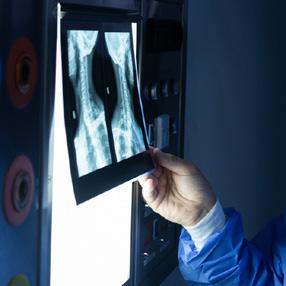





Bell is Canada’s largest communications company, providing advanced broadband wireless, TV, Internet, media and business communication services throughout the country. Their purpose is to advance how Canadians connect with each other and the world, enabled by a strategy that builds on their competitive strengths and embraces the new opportunities of the integrated digital future.
Founded in Montréal in 1880, Bell has a long history of connecting Canadians to the people and things that matter. From their earliest days, starting with the telephone, Bell continues to bring generations of Canadians together with the latest technology. Today, Bell is delivering the future to customers with an unmatched infrastructure investment in the best broadband fibre and wireless technologies, including the growing 5G network.
Through Bell for Better, they are investing to create “a better today and a better tomorrow”, by supporting the social and economic prosperity of their communities with a commitment to the highest environmental, social and governance (ESG) standards. This includes the Bell Let’s Talk initiative, which promotes Canadian mental health with national awareness and anti-stigma campaigns like Bell Let’s Talk Day, and significant Bell funding of community care and access, research and workplace leadership initiatives throughout the country.
Beginning their finance transformation journey back in 2019 – Bell Finance saw the potential emerging technologies have to fundamentally transform the way that they work and the services that they provide, discerning that data and analytics (D&A) is core to what they do as a finance function. So fundamental, in fact, that they consider D&A and technology adoption to be a cornerstone of their entire transformation, if not the chief driving force behind it.
If you stop to consider what a finance department or an accounting function actually is, you’ll quickly realise that it begins and ends with data and information – and the packaging up of that information to either produce new insights on performance, help develop business forecasts, or to ultimately provide strategic recommendations and services to the organisation as a whole.
“It's really about being able to develop a leading edge practice by moving away
from a traditionally federated approach, to instead managing data and analytics by channelling it into a centralised team and a centralised system,” says Matthew MacEwen, VP of Finance, and lead of Finance Transformation initiative at Bell, including the Finance Data and Analytics work stream. “This has really helped our finance function to accelerate its transformation and to have a specific focus, ensuring our entire finance community has access to all of the data that they need in order to carry out their day-to-day jobs, and help drive automation of manual processes.”
In 2019, MacEwen was asked by the CFO to help lead their finance transformation initiative, and to help develop their future state roadmap. At that time, the company had started centralising their CoE and MacEwen was – and still is – the leader of that group. In his D&A role, he leads finance transformation, as well as supporting
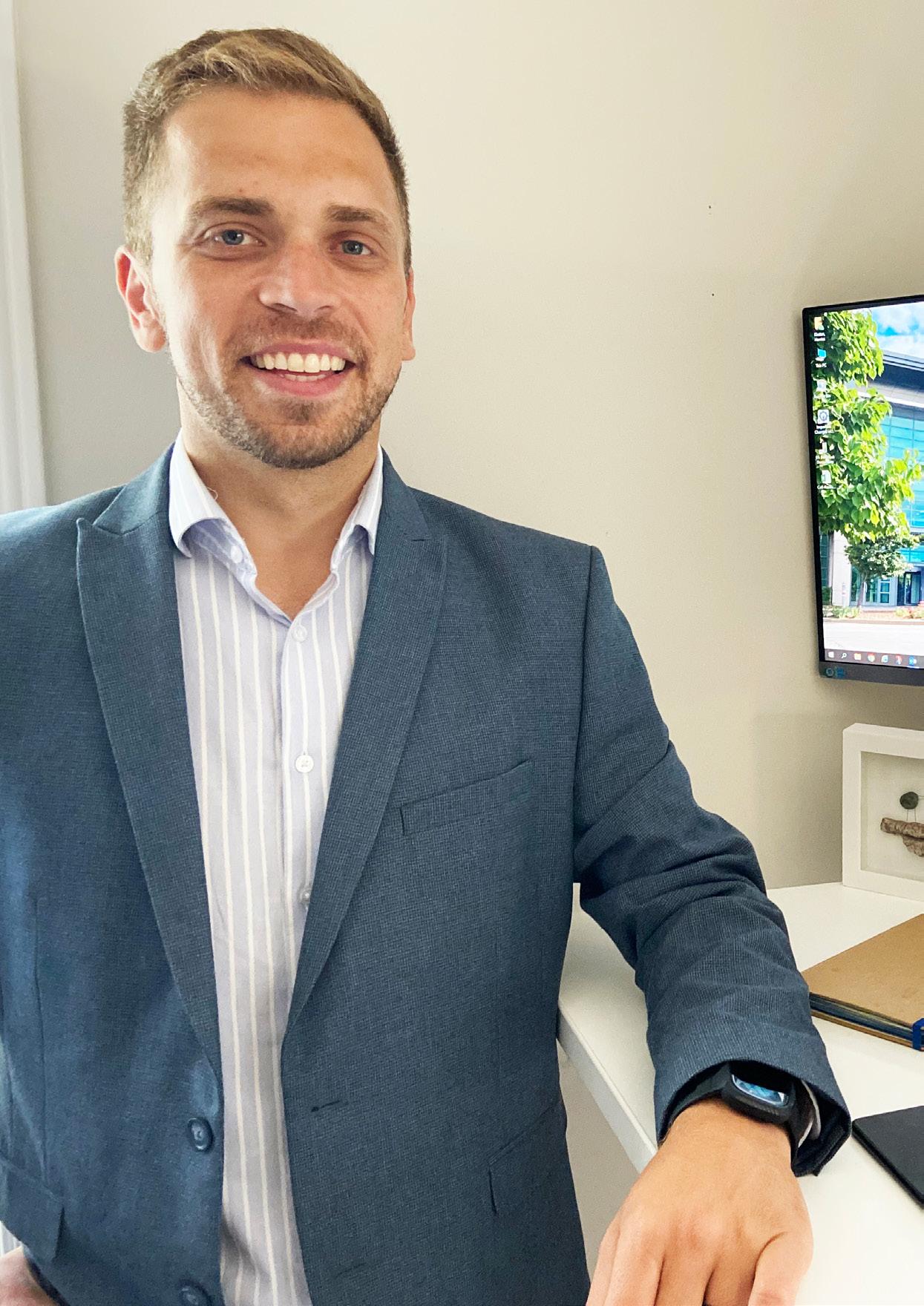
TITLE: DIRECTOR OF FINANCIAL ANALYTICS COE

INDUSTRY: FINANCE
LOCATION: CANADA
Nantes Kirsten leads the Financial Analytics Centre of Excellence (CoE) at Bell, a specialist team of financial data, strategy and automation experts developing solutions that drive efficiency and are enabling transformation within Bell’s Finance organisation. Kirsten’s involvement at Bell started as a management consultant supporting the formulation of the vision and roadmap for Bell Finance’s D&A transformation program.
Before joining Bell, Kirsten held various hands-on and leadership roles within risk and finance divisions, across Telecommunications, Financial Services and Retail industries.
“It's really important that the entire Centre of Excellence is engaged in the transformational vision, and that all those involved share the same beliefs”
NANTES KIRSTEN DIRECTOR OF FINANCIAL ANALYTICS COE, BELL


The sector is undergoing transformation at a rapid pace driven by changing consumer behaviours and new technologies.
Our team offers a forward-looking portfolio of Audit, Tax, Risk, Financial and Strategic Advisory services backed by a global network of skilled industry professionals positioned to help clients anticipate and exceed evolving expectations.
Learn more
Dan Krausz on how KPMG is one of Bell’s strategic advisors on its finance transformation journey, operating as an integrated team to realize value
As Partner and Telecommunications Sector
Lead at KPMG in Canada, Dan Krausz has played a key role on Bell’s finance transformation journey over the past few years.
To be successful in the face of huge industry transformation, Krausz explains that one thing is vital: “Telecommunication organizations need access to more data, more frequently, that is well governed. Data is at the core of what finance does, so being able to make informed decisions, fast, is something that finance needs to drive.”
By working with Bell on their finance transformation project from the beginning, KPMG has helped shape the related vision and strategy.
“We started out by helping Bell determine what they wanted to achieve and then translated that into a practical roadmap for implementation,” explains Krausz.
An integral aspect of KPMG’s involvement in the transformation is the combined approach of delivering technology outcomes while bringing a business lens to the table, taking a use case approach.


He adds: “There have been several workstreams that we have been involved in. One that I’m most proud of is intelligent forecasting – we were able to develop AI models which use both internal and external data sources to produce forecasts. These not only improved forecast accuracy, but they also continue to learn and become more accurate over time, and drive efficiency into a process which was previously manual in nature. Another use case was for analytical process automation – significantly reducing the number of manual journal entries as part of the financial close process. This also provided additional granularity from a management reporting perspective given the details were maintained in the data warehouse.”
“A common theme throughout this project with Bell has been our collaboration, working shoulder to shoulder to not only deliver transformation outcomes, but to support the enhancement of Bell’s capabilities, helping to ensure that the teams are well equipped to leverage new technologies,” concludes Krausz.
TITLE: VICE PRESIDENT OF FINANCE TRANSFORMATION
INDUSTRY: FINANCE

LOCATION: CANADA
Matthew MacEwen is the Vice President of Finance, Customer Experience and Corporate Planning, Transformation and Finance Analytics at Bell Canada. In addition to supporting various Business Units in achieving their strategic, operational and financial objectives, Matthew is responsible for executing Bell Canada’s digital transformation for the Finance function. This includes advancing the function’s capabilities with the development and
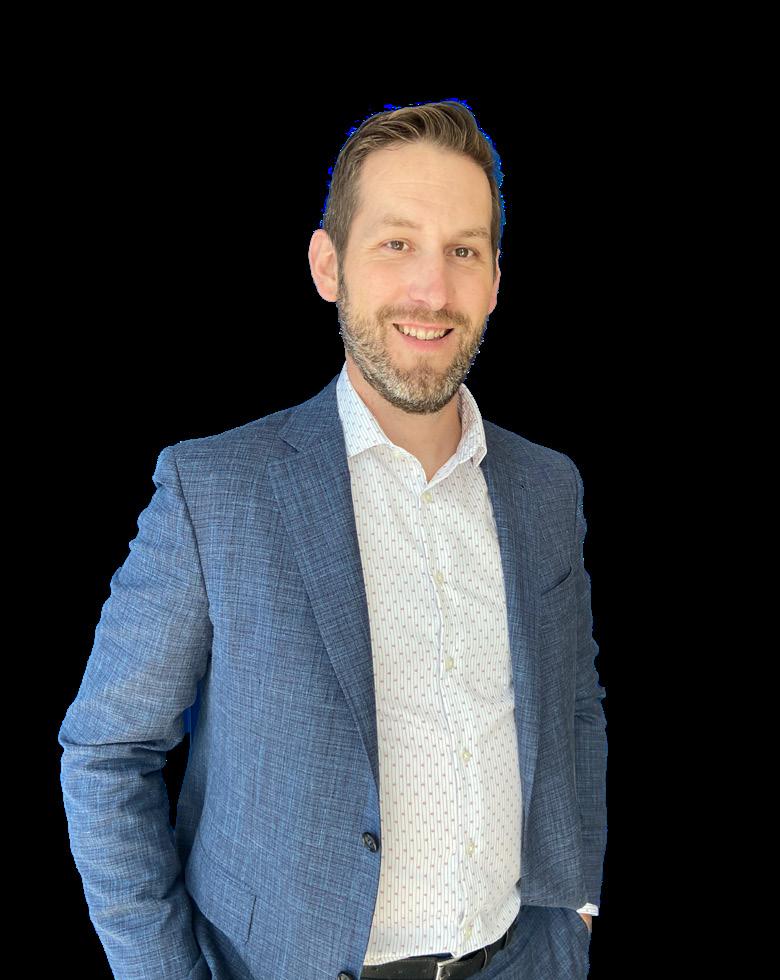
some of their finance operation’s business, including business units from a more financial planning and analysis (FP&A) perspective.
The emerging technologies in question –and central to Bell Finance’s transformation – are, of course, artificial intelligence (AI), the application of machine learning (ML) and predictive analytics within finance processes. These technologies have the potential to provide many organisational benefits, such as providing useful insights to minimise unpredictability, creating sophisticated forecasting capabilities and automating traditionally time-consuming and inefficient processes.
For a finance department, the fiscal knock-on effects of such technologies are able to free up resources that can have a sweeping effect throughout the entire structure of an organisation. This is exactly what Bell finance has set out to do – and they are already seeing the impact of such systems.
Another aspect of this transformation concerns not only technology and data, but also Bell Finance building new capabilities within the actual function, as well as the critical upskilling of their workforce so

MATTHEW MACEWEN VICE PRESIDENT OF FINANCE TRANSFORMATION, BELL
“One of the things that we learned was to take a more agile approach and to work on smaller developments that we iterate on – and then to build out from there – versus trying to do more big-bang developments from the outset”


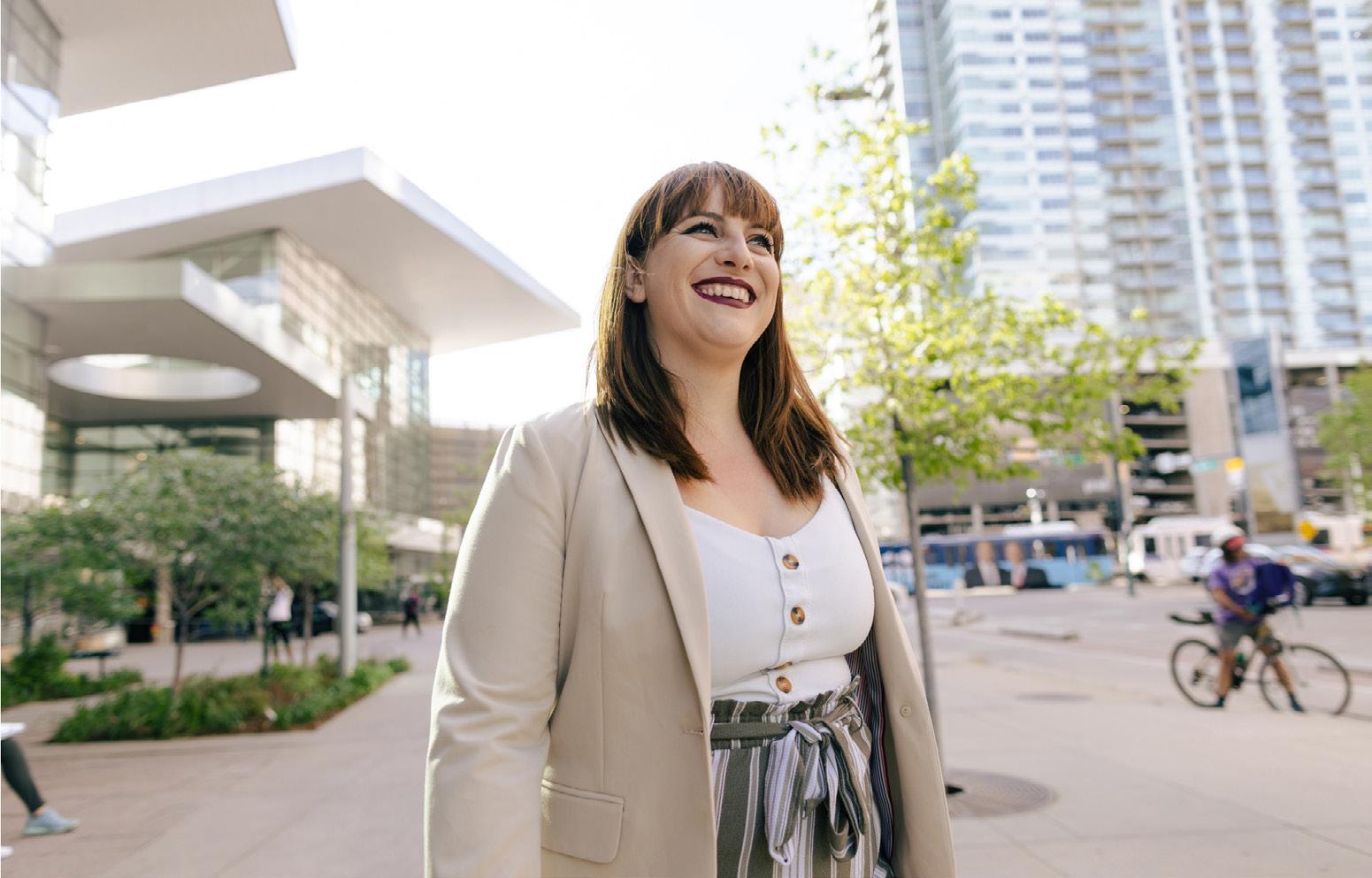
Learn more

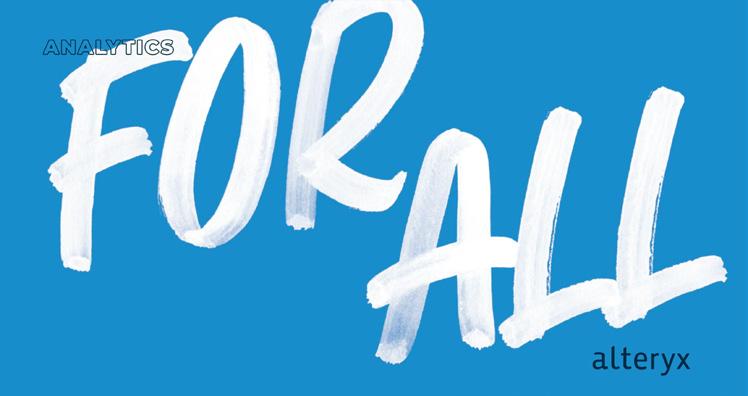




that they are able to leverage these new technologies and provide services in more sophisticated forms. The dynamic balance between the transformation of processes and that of people is a delicate and everpresent one. These are not just changes that take their aim at possibilities with the potential to transpire weeks and months into the future, but incremental shifts that have a fundamental effect on the dayto-day workings within the organisation itself, with the potential to transform organisational processes as a whole. The Finance organisation therefore realises that
this transformation starts with people and people engagement.
“It's really important that the entire CoE engages in the transformational vision, and that all those involved share the same beliefs,” establishes Nantes Kirsten, Director of Financial Analytics & AI, Centre of Excellence.
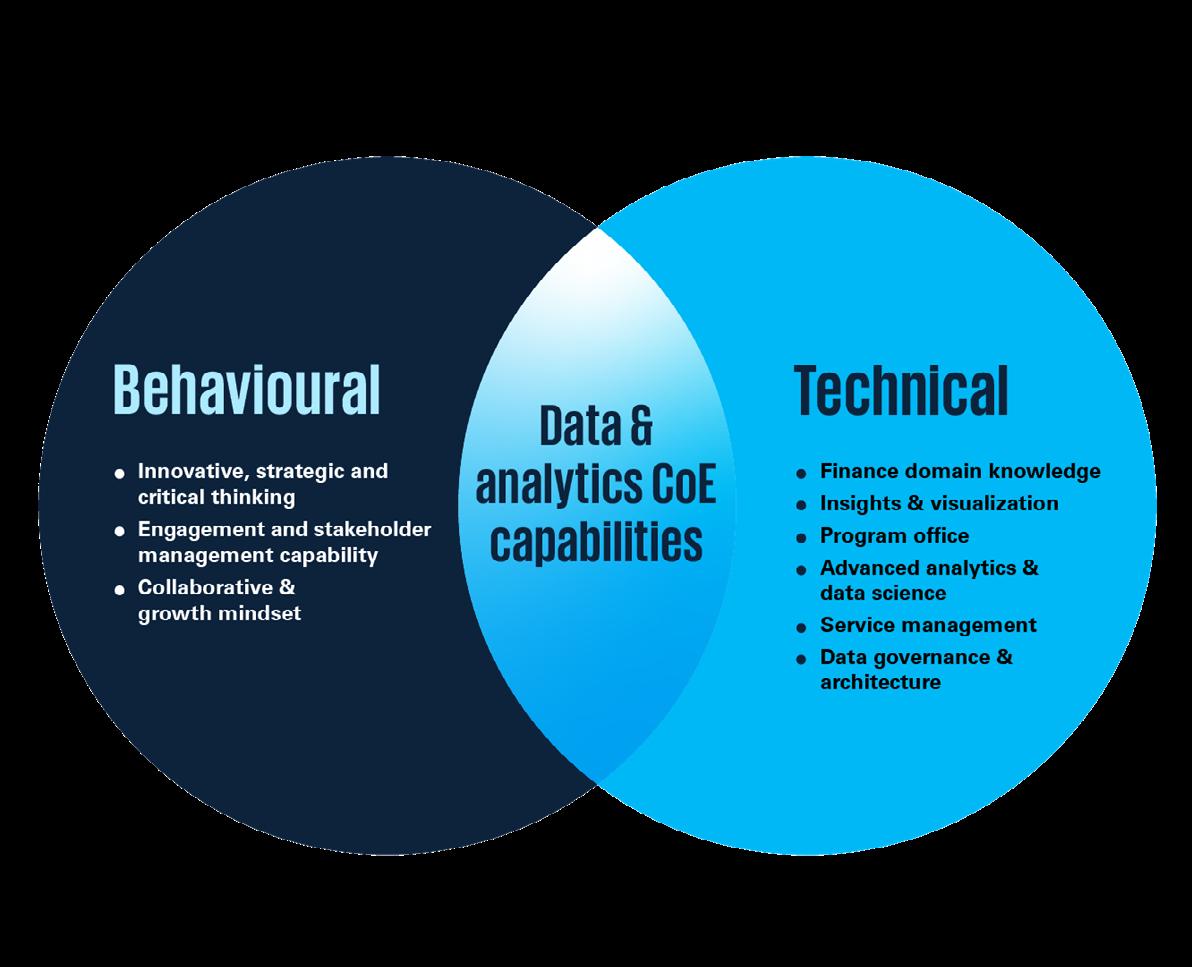
“I realised early on in my career, as a quantitative risk-management consultant –that I enjoyed data science and the ability to translate data into actionable decisions and insights, and that's when I decided to move into telecommunications where there's an abundance of data and untapped insights.

At Bell, as the Director of Finance and Analytics at the CoE, we are trying to help use data to enable transformation and drive better insights – and there are so many others in the team that share this alignment between what we enjoy and the work we get to do,” he says.

The Financial Analytics CoE is focused on the finance 2025 transformation program data and analytics delivery, seeking to complete its transformation in the next few years; a transformation that will reshape Bell Finance from the bottom up and inevitably evolve the organisation closer to the Finance of the Future.
“I lead the financial data development team,” explains Kirsten, “alongside the solutions development teams that focus on visualisation, reporting automation, and financial data science initiatives like intelligent forecasting; we're currently focused on using the data and technology work-stream within finance 2025 to enable the transformation.”
Asked about the genesis of such a program, MacEwen says: “A program like this starts with leadership support and commitment. We had crucial and very strong support from our senior leadership
MATTHEW MACEWEN VICE PRESIDENT OF FINANCE TRANSFORMATION, BELL
“Beginning with leadership sponsorship, one of the first things we did in the early phases was to focus on people, and to find those within their finance function who had leading-edge skills in some of these technologies and to bring them together, and that really formed the nucleus of our centre of excellence”
team, starting with our CFO all the way through to the actual investment in the Program as well as in bringing people together to provide a different way of working for our finance function.”
Beginning with leadership sponsorship, one of the first things they did in the early phases was to focus on people and to find those within their finance function in possession of leading edge skills in some of these technologies and to bring them together, “and that really formed the nucleus of our centre of excellence”.
“As we gathered those folks, along with some of the work that they were doing, into a single team, we started to build a team vision – and to create a roadmap that we then started to execute as a part of our longer-term strategy.”
The CoE acts as the brain as well as the executive centre of the finance transformation’s nervous system at Bell, and there are core capabilities and skills that determine how effective it is in bringing about this transformation.

Kirsten proposes that they are categorised broadly in two areas: “There are behavioural capabilities and technical capabilities that are required.”
“On the behavioural side, for any centre of excellence, you need to have an innovative, strategic and critical thinking cap on. It ensures that we keep driving our transformation mandate, but also helps keep our lives interesting. Also on the behavioural side is solid engagement and stakeholder management capability. It's critical that we have a strong stakeholder engagement capability in the CoE so that we continue to keep our finance partners involved, engaged, testing and adopting
the solution, and of course, collaboration is absolutely key.”
“On the technical side (and I don't think this will come as a surprise), you need to have an intimate understanding of the finance organisation. As we're a finance CoE, this is different from what you would see in other enterprises – typically as a Centre of Excellence with an analytics focus. You naturally need the technical Data mining / Wrangling and Visualisation competence, but the solution development is crisper with a good foundational finance understanding.“
“Finally, it’s important that we are technology agnostic. We should be able to pick up a technology, learn how to code in it, use it, and to make sure that our solutions can be developed in any technology, any coding language and focus more on driving value through the use case, not leading with technology.”
The central data design and architecture principles for the Centre of Excellence In terms of core data design and architecture principles, the Bell Finance CoE began

 BELL
BELL
NANTES KIRSTEN DIRECTOR OF FINANCIAL ANALYTICS COE,
“Pick an impactful use case and find the data that unlocks it”
the transformation journey with a keen understanding that the solution component (that is, the use case) was going to be the driving force at the helm.
“Pick an impactful use case and find the data that unlocks it,” says Kirsten. “And that's one of the principles to which we adhere: find something that’s tangible to our clients and that adds value and then make sure we have centralised data that reconciles with upstream accounting systems that can enable development and automation of that use case.”
The other core aspect that they wanted to retain while reaching their transformation goal was “to develop principles that give us a blueprint, to be able to repeat what we've done”.
The use case would then lead to repeatable principles and processes, (“recipes”) for the Data Development Lifecycle, and then to solid Data Governance around the solutions and lifecycle.
So, in terms of the data lifecycle, Bell Finance wants to make sure that they have core principles in place to answer the data lifecycle questions, for example how they gather requirements, how they develop and how they engage and train their finance users.
“‘How do we start experimenting and have those data lifecycle components at the core of our CoE initiatives?’ – these were all part and parcel of the principles that we needed to put in place. Then there are support considerations, such as the finance support for the end-users, so we needed to make

sure that we had a process in place for them to ask someone for help. We need our CoE as their first-line of support.
“At the core of all of this is easily accessible, curated and centralised data.” For such a transformation, then, the Centre of Excellence was necessary. This Centre of Excellence then had to be formed with systems in place that would sustain it –so that it could then go about forming the transformational process that would feedback into its own operations, like an organisational form of M.C Escher’s ‘drawing hands’.
Essentially, the point is that the systems in place are open-ended and ever-adaptive to change – a necessary requirement for an effective transformation to take place. But,

of course, such a program is no easy feat, to say the least. As part of the CoE, both MacEwen and Kirsten acknowledge that, early on, one of the challenges that arose stemmed from attempting to tackle too much at once and “biting off more than we could chew”, which they both emphasise.
MacEwen says: “One of the things that we learned was to take a more agile approach and to work on smaller developments that we iterate on – and then to build out from there – versus trying to do more big-bang developments from the outset.”
Kirsten adds: “And you should never underestimate the amount of time testing and training of users will take. The endusers sitting in the finance organisation are so critical to adoption,” – (the crucial user-

adoption aspect of the transformation)
– “so you want to make sure that they're bought in and brought in from an early stage and that you allow sufficient time in your program plan for that piece.”
He also underlines that finding the right people – those that are passionate about finance, data and analytics, but also about the vision and practicalities of organisational transformation – is key and that, with such a transformation, “it’s critical to choose the right technology and advisors (internally as well as externally) to ensure that your vision is in-line with best practices in the industry and with best in class companies are doing so that, from a solution development and technology point of view, you're not finding yourself on an island.”
Beyond senior support and the obvious financial investment needed in bringing about such a transformation, partners are invariably vital to such a process.
For their finance transformation, a blend of a strategic-advisory type of partner, as well as technology partners were needed.
“Ultimately,” says MacEwen, “we were looking for partners with a proven trackrecord and experience in the field that had demonstrated capabilities in being able to deliver some of the specific work streams on a roadmap – be it around data or new capabilities with reporting or forecasting – as well as wanting to make sure that they were involved from a technology perspective.”
“We also have a core engine of subjectmatter experts that are helping to deliver a lot of the more technical elements of our finance transformation program. A big part of our strategy, though, is to try to scale up as quickly as possible by leveraging the full breadth of our finance function – and this is
a great way to help ensure that we overcome some of those change-management and adoption issues that an organisation can encounter during such a transformation.”
In terms of technology capabilities and partners, Kirsten adds: “And just as ease of use is important, the next consideration is ease of integration.”
“In terms of this side of things, we wanted to pick technology that can speak to –and pull information from – our source

accounting systems, which host critical financial information that we don't share enterprise-wide, as it contains sensitive information relating to our corporate financial reporting. The technology needs to support that vision, but also have native documentation and metadata capability.
“In other words, whether developed by the finance users, or within the CoE - we need to be able to document what has been developed so that we don't build
solutions in a vacuum and just hand it over to finance, or they build solutions and create critical resource risks.
“We also wanted to make sure that the solution isn't just a desktop technology and that you can productionise the workflows that you build onto a server environment – which, again, removes the critical resource risk.
“As you go through this, I think it's clear that Alteryx was one of those technologies


 NANTES KIRSTEN DIRECTOR OF FINANCIAL ANALYTICS COE, BELL
NANTES KIRSTEN DIRECTOR OF FINANCIAL ANALYTICS COE, BELL
“You need to have an innovative, strategic and critical thinking cap on in a CoE"
that really supported our transformation journey; therefore, given the criteria, utilising them was a no-brainer as part of our technology kit to enable automation.”


Kirsten says that Bell Finance have completed some of their more foundational development, specifically around their finance-governed data warehouse, but adds that it's an evolution. Now, they’re scaling new capabilities with visualisation and reporting, trying to develop crosscompany insights and analytics for their finance community, as well as starting to look to ML and AI to build new capabilities with intelligent forecasting and analytical process automation.
“We're in an accelerated development phase of being able to leverage these new capabilities,” Kirsten says, “where it's now become real for our finance function, and we're seeing the benefits. We're continuing to grow from that foundation that we’ve built, and scaling the solution is the most important piece over the next 18 months.”
MacEwen adds: “The telecommunications industry is currently going through a rapid transformation. When you think about new services emerging in the marketplace, with things like the launch of 5G, the Internet of Things (IoT), Multi-Access Edge Computing (MEC) and Cloud – these are all new types of services that telecoms globally are launching and trying to take advantage of.
“This is going to bring new and interesting ways for the finance organisation to analyse data and provide insights, bringing new capabilities along the way. We think there's going to be lots of interesting ways for our industry to monetise these emerging services, and finance will play an important role in that process.”
With the launch of its latest product – the ChatGPT chatbot – OpenAI has been making headlines across the world.
The company has been taking the internet by storm with the launch of what is one of the most intelligent, sophisticated AI chatbots that has ever been created, leading to a burgeoning slew of creatives attempting to devise an app that can identify ChatCPT’s work.
In fact, OpenAI (the research lab that created ChatGPT) has since been valued at around a staggering US$29bn. This makes OpenAI, a company that originally started out as a nonprofit, one of the most valuable startups in the entirety of America.
A monumental success story, it can be largely attributed to the interest garnered by ChatGPT – the responsive capabilities of which are seemingly endless. Across the world, users are asking it about everything from coding advice to generating formal email responses.
ChatGPT has uprooted the global AI sphere with its seemingly endless communicative capacity. So we decided to investigate – just how human-like is ChatGPT?
And yes, it’s certainly amusing to ask it to ‘describe the value of AI technology in the style of The Beatles’, and get back the response of:
“AI technology, it's a revolution
It's changing the way we live and the way we solve problems, too It's faster than a rocket and smarter than we've ever known
It's helping us in industries from healthcare to finance, and it's just getting started”
But, beyond the entertainment value that has fuelled its viral status, this technology represents a major breakthrough in AI models. If its early success is any indication of what’s to come, this tech could kickstart a transformation across a wealth of industries, spanning everything from global corporations to individual users.
So, we decided to put ChatGPT to the test. To explore the capabilities of ChatGPT and precisely how ‘human-like’ its organic responses are, we sat down for a pretty singular interview with the AI software.
It’s not very often that you can ask the software itself about how and why it was developed.
“ChatGPT is a variant of GPT-3 (Generative Pre-trained Transformer 3), which is a natural language processing (NLP) model developed by OpenAI,” it explains.
“GPT-3 is a neural network-based model that was trained on a large dataset of text to learn how to generate human-like text.”
In an ongoing phase of ingenious AI development, how exactly is ChatGPT different from other AI language models?
“One key difference is that ChatGPT is specifically designed for use in chatbots and other conversational applications. This
“ I WAS TRAINED ON A DATASET OF BILLIONS OF WORDS FROM THE INTERNET, WHICH MEANS THAT I HAVE A BROAD RANGE OF KNOWLEDGE ON A WIDE VARIETY OF TOPICS”
means that it has been trained on a dataset of conversational text, such as chat logs or transcriptions of conversations, and is able to generate text that is more suited for use in a chatbot or other conversational system.”
“Another difference is the size and capacity of the model. ChatGPT is based on the GPT-3 model, which is one of the largest and most powerful language models currently available. This allows ChatGPT to generate high-quality text that’s more coherent and human-like than many other language models.”
To achieve this level of diversity and the high quality of its responses, extensive training was required, utilising a vast, varied dataset.
“I am a large language model trained by OpenAI. I was trained using a technique called
transformers, which allows me to process and understand natural language input. I was trained on a dataset of billions of words from the internet, which means that I have a broad range of knowledge on a wide variety of topics.”
ChatGPT does not have access to the internet, meaning its knowledge is limited to the point at which its training ended (in 2021). But, despite its current limitations, the ChatGPT tool has the potential to be used in a huge variety of different industry applications across almost all of the world’s sectors.
According to ChatGPT itself, NLP is needed in areas spanning everything from chatbots, language translation, and text summarisation to text generation and language modelling.
When assessing the potential for the global deployment of technologies like ChatGPT, it is critical to consider how the solution plans to navigate existing issues that we know are present in many AI technologies.
For instance, many of ChatGPT’s predecessors have fallen short in the realm of data bias, with their answers proving to be flawed – particularly in relation to racial and gender parity – as a result of the data that they were trained on.
Interestingly, ChatGPT itself actually had suggestions to offer to help ensure AI models successfully avoid bias:
“To avoid bias, it is important to ensure that the data used to train AI models is diverse and representative of the population it is intended to serve. This may require actively seeking out and including underrepresented groups in the data collection process. It is also important to carefully examine the data for any potential biases and to correct for them if necessary.”
“In addition, it may be useful to use fairness algorithms or other techniques to try to mitigate bias in AI models.”
“Finally, it is important to regularly evaluate and test AI models for bias, making adjustments as needed to ensure that the models are making fair and unbiased decisions.”
“TO AVOID BIAS, IT IS IMPORTANT TO ENSURE THAT THE DATA USED TO TRAIN AI MODELS IS DIVERSE AND REPRESENTATIVE OF THE POPULATION IT IS INTENDED TO SERVE”
CHATGPT OPENAI
AI’s ability to advance telecommunications AI technologies are set to make serious waves in the telecommunications sphere – and that’s a point both industry experts and ChatGPT firmly agree on.
“AI has the potential to be a valuable tool for telcos, and there are several ways in which it could be implemented.”
According to ChatGPT, the potential applications of AI in telecommunications include network optimisation, with AI being used to analyse data from telecom networks to identify bottlenecks and other problems, thereby helping companies optimise their networks for better performance.
Alongside this, ChatGPT recommends that telcos use AI to improve their customer service with AI-powered chatbots, improve fraud detection strategies, improve network security, and perform predictive maintenance – with AI analysing data from telecom networks to predict when equipment is likely to fail, enabling companies to schedule predictive maintenance to a high degree of success.
“ THE USE OF AI IN TELECOMMUNICATIONS HAS THE POTENTIAL TO IMPROVE EFFICIENCY, REDUCE COSTS, AND ENHANCE THE CUSTOMER EXPERIENCE, MAKING IT A VALUABLE TOOL FOR COMPANIES IN THIS INDUSTRY”
“Overall, the use of AI in telecommunications has the potential to improve efficiency, reduce costs, and enhance the customer experience, making it a valuable tool for companies in this industry,” ChatGPT explains.
Assessing AI’s value through a microlens, we asked ChatGPT how AI is being used to improve mobile phones. Its response described how, among other points, AI is proving instrumental in advancing predictive text capabilities.
Firstly, “predictive text on mobile phones often uses machine learning algorithms to analyse a user's typing patterns and predict what word or phrase the user is likely to use next. As the phone gathers more data on the user's typing habits, the predictive text function can become more accurate over time”.
Alongside this, there’s the value provided by NLP.
“Predictive text functions on mobile phones often use natural language processing (NLP) to understand the context of a conversation and make more accurate predictions. For example, if a user is typing a message about a specific event, the predictive text function might suggest words and phrases related to that event.
“Overall, AI is being used to advance predictive text capabilities on mobile phones by enabling them to analyse and understand language and typing patterns more effectively, resulting in more accurate and helpful suggestions,” says ChatGPT.
Through just this one example, we can see how much AI language tools stand to offer the world’s industries. And, let’s not forget – if there were any doubt as to the power and sophistication of these tools, these benefits can now be described by AI language models themselves.
 WRITTEN BY: TOM SWALLOW
PRODUCED BY: TOM LIVERMORE
WRITTEN BY: TOM SWALLOW
PRODUCED BY: TOM LIVERMORE




To navigate as significant a change as e-mobility requires ingenuity, perseverance and collaboration among all parties involved. As with any innovation, partners are crucial for achieving great things, but electrification is a digital revolution and organisations must leverage new and existing expertise to comply with climate change targets and to fully maximise the opportunities arising in the marketplace.
Electric vehicles (EVs) are increasingly at the centre of digital ecosystems, with technology as the primary change factor and differentiator between businesses. “But, with the slew of new EVs in the market and the increased adoption of EVs, especially within the context of CASE in the mobility ecosystem, there is an accelerated pace of change, a reshaping of conventional industry boundaries,” says Laksh Parthasarathy, Global Business Head of the Smart Mobility Group at Tata Consultancy Services.
When Parthasarathy says ‘CASE’, he means ‘Connected, Autonomous, Shared and Electrified’ solutions and how these services are leveraged by EVs to drive sustainability, efficiency and innovation.
Having seen the shift taking place around him, Parthasarathy explains that the switch of drivetrain from internal combustion engines (ICEs) to electric is opening up digital opportunities. As demonstrated in the EVs on the market today, digital technology enables advancement in safety—through artificial intelligence (AI), energy efficiency, and integration with homes to manage electricity and the digitalisation of vehicle maintenance procedures.
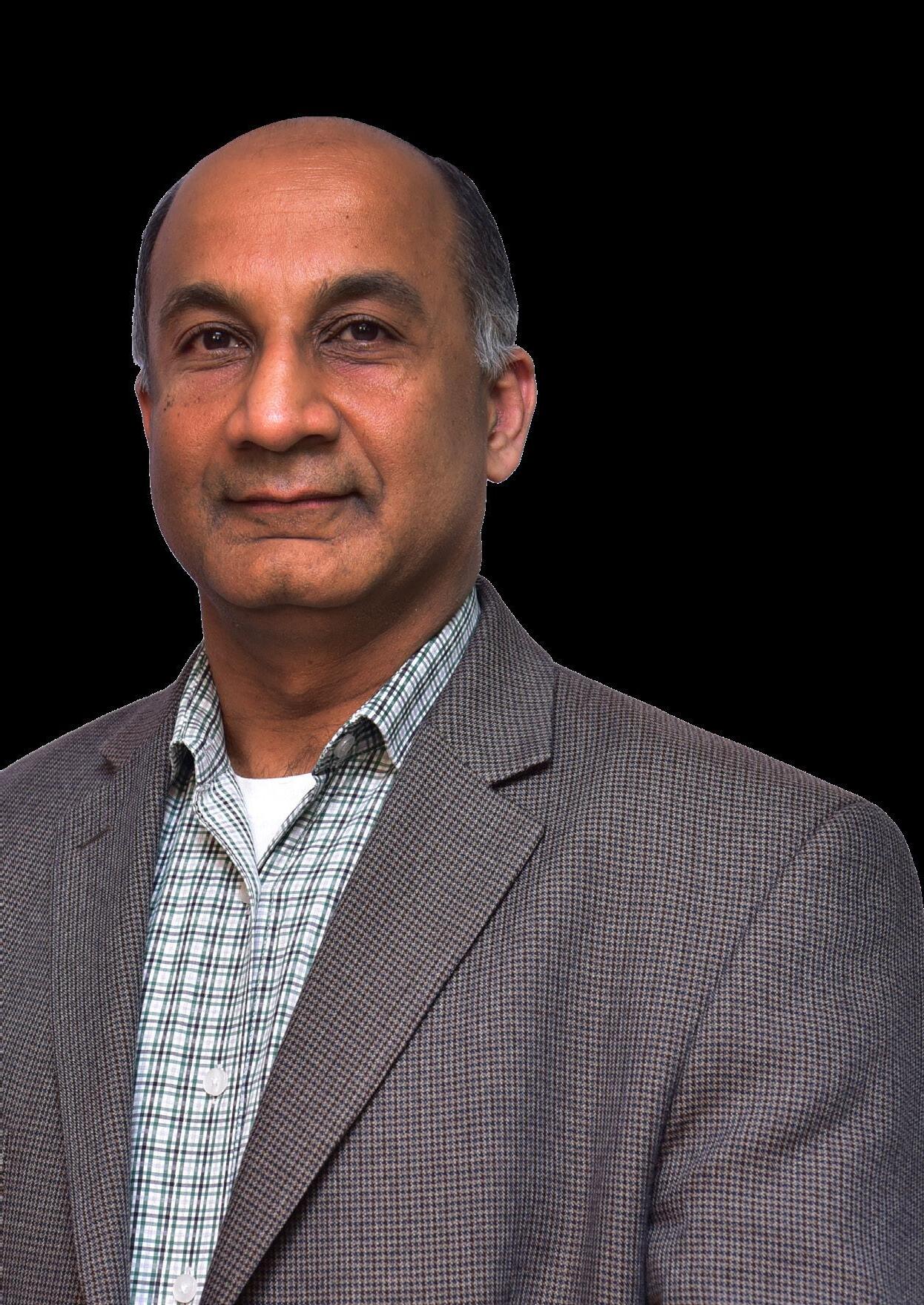
AWS utilises transformative digital technologies to accelerate the automotive industry’s development whilst striving for sustainable practices. Customers bring advanced and differentiated products and services to market faster and more cost effectively through AWS.


AWS (Amazon Web Services) is the world’s most broadly adopted cloud platform, offering over 200 fully-featured services from data centres. Ajit Kolhe is the World Wide Partner Lead for Automotive.
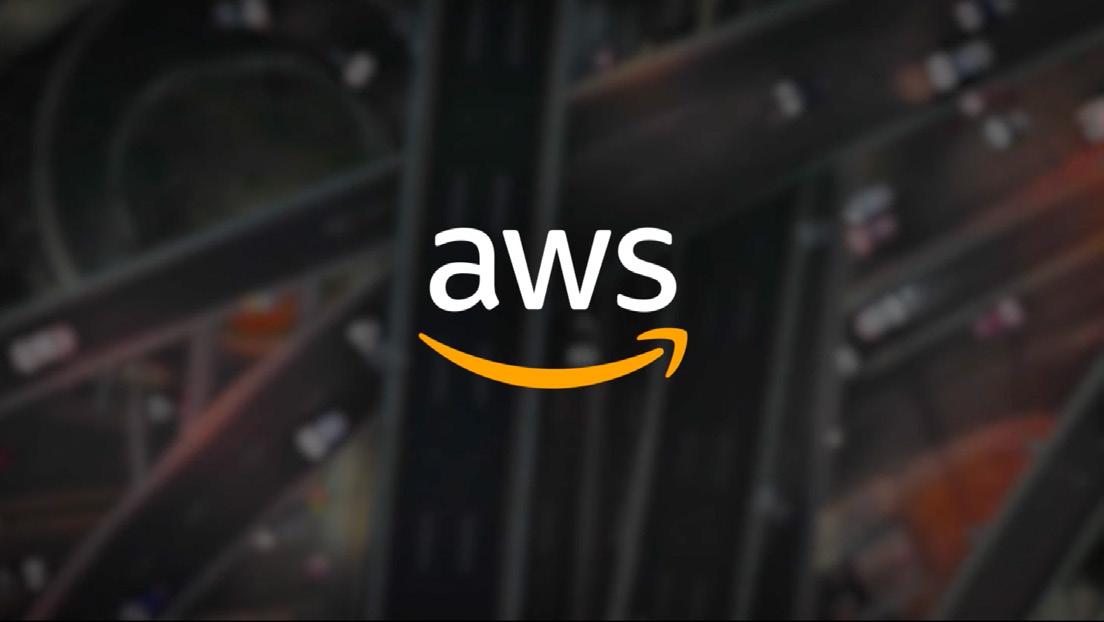
“I’m responsible for working with Partners to build and scale market differentiating solutions to solve customers’ unique business challenges,” Kolhe explains. “Our automotive customers consist of four sub-industries within AWS: original equipment manufacturers; tier one suppliers; AutoTech/startups; and auto dealers. These include customers such as Toyota, Continental, Uber, MOIA, and Cox Automotive.”
AWS’ partnership with TCS dates back to 2009. “It’s been a great journey – TCS is a strategic global system integrator and premier consulting partner in AWS’ partner network.”
Together, AWS and TCS have been focused on migrating critical workloads and transforming IT, with the two having had over 700 customer engagements.

“AWS has evolved the cloud adoption framework, placing emphasis on business outcomes which aligns with TCS’ strategy,” says Kolhe.
Over the last two years, the team has built several solutions applicable in the automotive industry, including TCS Autoscape™ which covers autonomous vehicles, ADAS scenarios, connected vehicle solutions, software defined vehicles and TCS Clever Energy™ for sustainability. AWS contributes to innovation with TCS and has a roadmap of seven TCS solutions that will help to solve customers’ business imperatives.

According to Kolhe, the success of such a partnership can be characterised as an alignment around customer obsession, thinking big and mutual trust.
“We have both earned trust in our relationships and have alignment across both organisations which spans across the customer engagements,” says Kolhe.
Ajit Kolhe is the World Wide Partner Lead for Automotive at AWS. He works with Partners to build and scale market differentiating solutions to solve customers’ unique business challenges. Ajit Kolhe from AWS on sustainability“A classic illustration of how EVs have forced the development of digital-led ecosystems is in the way they are powered. Conventional fuelling did not have an organic need for digital systems. Charging networks and management, on the other hand, have been fundamentally based on digital operating models. Data from EVs and EV battery management systems, and its efficient utilisation, is more critical to the long-term adoption and viability of EVs, compared to their ICE predecessors,” says Parthasarathy.
As the digital ecosystem evolves, technology and automation enable more possibilities for charging solutions in the urban environment that defy the conventional format of designated fuelling areas. While it is critical to supply such services, drivers and businesses also have the flexibility to choose other options, such as charging at a restaurant, at home, at work, or in the car park at a shopping centre.
According to Parthasarathy, the digital ecosystem also enables a smoother transition from internal combustion ehicles (ICVs), which follow a traditional power format.
“For example, one of the biggest concerns is around range anxiety and the need to provide, in real-time, the accurate range left on the vehicle. And with the entry of non-traditional players into the charging ecosystem, we now have access to chargers at restaurants, grocery stores, hotels etc, where one can seamlessly reserve and charge their vehicles, unlike the gas-stationsonly option to fill ICVs,” Parthasarathy says.
“This opens a whole new digital ecosystem to enable customers to find charging stations, reserve them and complete the entire commercial transaction around it.”
Industries that were not previously associated with mobility are crosspollinating and electrification is providing them with commercial opportunities to leverage charging as a competitive advantage, which also supports the shift away from fossil fuels.
When looking at how digital technology serves consumers today, it’s important to understand their current interactions. Before exploring how technology can be leveraged to meet the needs of an evolving industry, leaders first need to be aware of the ‘social customer’, which Parthasarathy explains is a term coined to represent how users respond to a product or service.
These days, technologies are intertwined with social media as an integral part of consumers, whereby they are likely to turn to
“KEEPING THE FOCUS ON THE BIG PICTURE AND ENSURING WE TAKE THE RIGHT STEPS IS AT THE FOREFRONT OF MY MIND—A CHALLENGE THAT I THOROUGHLY ENJOY”
LAKSH PARTHASARATHY GLOBAL BUSINESS HEADSMART MOBILITY GROUP, TATA CONSULTANCY SERVICES
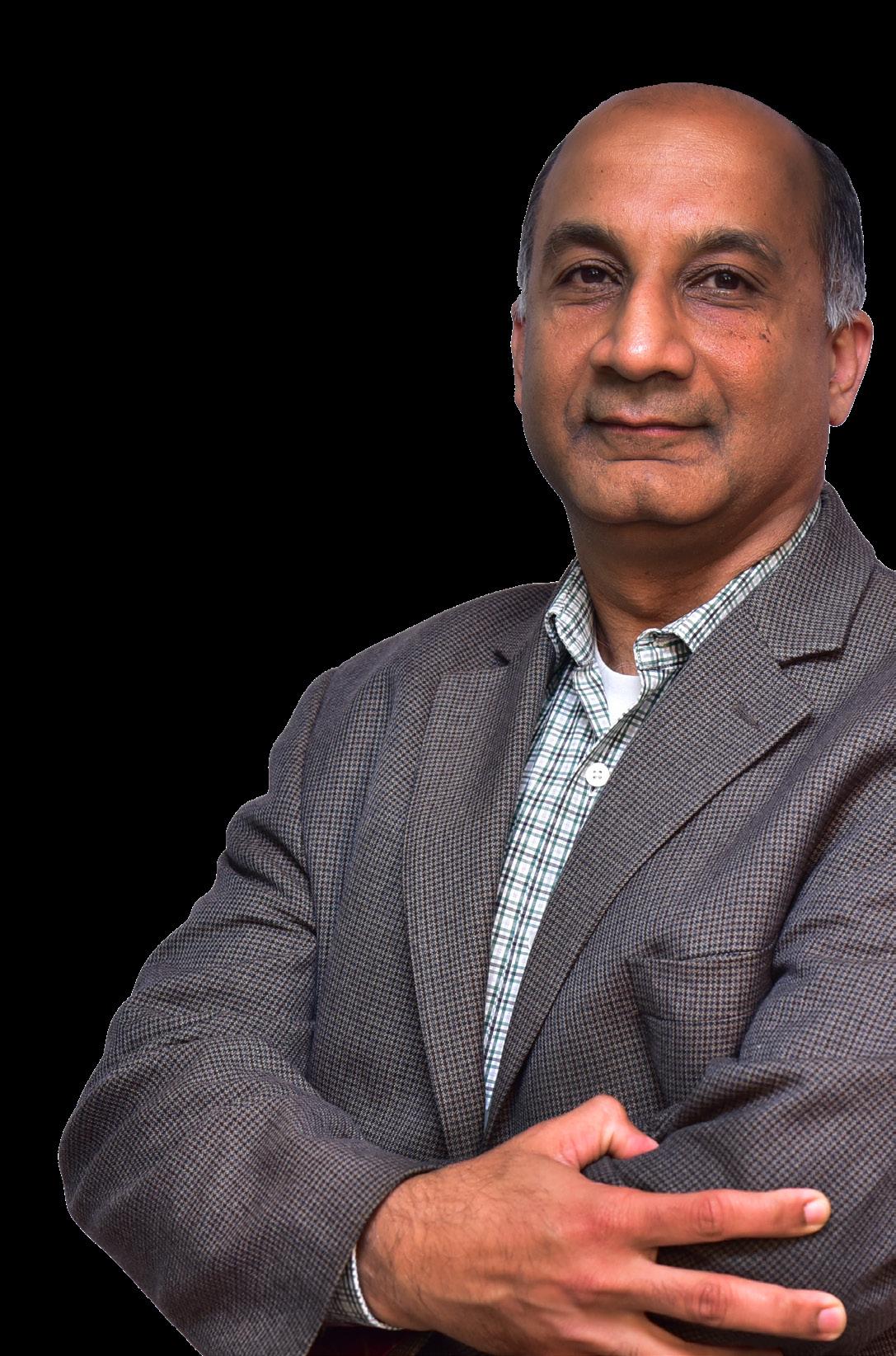
TITLE: GLOBAL BUSINESS HEAD - SMART MOBILITY GROUP


INDUSTRY: CONSULTING
LOCATION: UNITED STATES
Laksh is the Global Business Head for Smart Mobility and EV Ecosystem at TCS focusing on the cross-industry trends impacting the mobility ecosystem. With over 25 years of global experience in the automotive mobility industry, Laksh focuses on driving TCS solutions for the Automotive CASE (Connected, Autonomous, Shared and Electric), Mobility, EV Ecosystem, battery value chain, and multi-modal mobility domains, to address the major challenges faced by the industry. His primary areas of interest are to help accelerate adoption of safe autonomy solutions, EVs in all sizes, sustainable electrification and drive hyper-personalised customer experience journeys towards the renewable energy future.
CASE as a construct in e-mobility or Smart Mobility refers to all of the capabilities that are currently used to bring cars and other transport solutions into the digital ecosystem. Breaking down each one helps to gain a comprehensive view of the overall applications of technology within EVs:
Connected: Also referring to ‘connectivity’, this involves any technology that enables bi-directional communication between devices or systems, including the vehicle itself.
Autonomous: Refers to the technology that allows a vehicle to be operated at various levels of independence from a human driver.
Shared:
As ridesharing services become more prominent, this refers to the technology and ecosystem used to enable EVs and ICVs to be shared and driven as a service, as opposed to a product for a single user.
Electric:
This refers to everything EV-related, including battery technology, the sustainable business model, and cost-efficiency gains.
services like Twitter to air their grievances, as opposed to their service providers directly. Automotive firms are able to leverage this knowledge to tailor their products and services to match the trends among consumers and take a similar approach to businesses by marketing their products and services online.

This puts CASE beyond the automotive industry and demonstrates how the digital ecosystem pulls industries together to integrate their services for a more farreaching and intuitive customer experience.
“CASE automotive, as a construct, is very congruent with the ‘social customer’ archetype. For starters, we see a common narrative whereby the vehicle is an extended living space, offering customers in-vehicle commerce, retail recommendations,
in-vehicle delivery and so on,” says Parthasarathy.
“While some parts of this might look surprising, given that automotive original equipment manufacturers (OEMs) have never been in the business of selling coffee or sandwiches, it fits well with a customer who prefers to have connected services. Similarly, the sustainability narratives that are accelerating the adoption of EVs and safer autonomy are fuelled by a more informed and aware customer, seeking to reduce their carbon footprint.”
The focus has turned towards customer experience and how they interact with their car or any mobility-as-a-service asset. Digital transformation done right means automotive firms implement CASE to tailor or personalise their product and services to

every consumer. A great example of tailoring is through driver profile and key recognition. Particularly in mid- to high-range cars, the car is able to set the driving position configuration and conditions based on the key that is used.
“As organisations realise the importance of seeing every customer as unique, automotive OEMs have begun their foray into areas outside of their core business model,” says Parthasarathy.

“For example, they provide parking, charging, and toll payment services. Almost all the major personal mobility OEMs have also partnered with retail service providers or aggregators to provide connected vehicle commerce offerings, so that they are present across a whole new spectrum of services.”
“They are making sizeable investments into improving the mobility experience through feature upgrades of the vehicle made over-the-air (OTA), and on demand.”
While it is great to celebrate how organisations are meeting the needs of their customers, electrification continues to present more capabilities for businesses and, more importantly, the planet. Therefore, they must always remain one step ahead of the trends, in order to remain relevant in a fastchanging industry.

“I believe the cardinal rule for customer engagement is to prioritise their imperatives,” says Parthasarathy.
“This might imply that OEMs have to pre-empt shifts in mobility consumption patterns, to continue to be the service provider of choice for customers’ mobility needs. OEMs cannot afford to be absent in this ecosystem that not only offers tremendous scope for revenue, but also enables a richer and more hightouch engagement opportunity with existing and prospective customers.”
This reverts back to the point of tailoring to the customer’s needs, which automotive OEMs can achieve by integrating their services in a multi-dimensional network fashion as opposed to a linear model. A great example is usage-based insurance models, which require manufacturers to work with insurance companies—factoring in technology requirements—to provide services like pay-per-mile or base drivers’ premiums on their performance.
Parthasarathy also delves into some of the other solutions that could arise from CASE automotive, including providing connected health services to a customer by working in an ecosystem connecting healthcare providers, retail drug stores, and emergency service providers, synced to customer health data.
“Traditional OEMs are also responding to the needs of the modern automotive customer. In some cases, playing catch up with the customer-experience-focused industry leaders. In other areas, they’re trying to transform their organisations and generate new revenue streams.”
Servitisation is also becoming a response to digitisation and consumer experience capabilities, but it has received negative attention in the past.
“This has created a lot of negative publicity in social media as customers are willing to pay to use a service that is seen as leading edge or innovative (such as Tesla’s selfdriving software) but not for items that were previously bundled with most vehicle trims,” Parthasarathy explains.

He also sees concerted activity and monetisation strategies being built to leverage the value of connected data.

“ORGANISATIONS REALISE THE IMPORTANCE OF MOVING TO AN N=1 CUSTOMER PARADIGM”
LAKSH PARTHASARATHY GLOBAL BUSINESS HEAD - SMART MOBILITY GROUP, TATA CONSULTANCY SERVICES
Connected Ecosystem:

In the connected mobility space, TCS’ product and services strategy is built on the imperatives of seamless personalised mobility experiences for mobility customers and monetisable business models for mobility players. This includes:

• TCS AutoscapeTM Customer Experience Solution: A connected vehicle platform with end-to-end capabilities for an enhanced mobility experience
Autonomy:

In the autonomy space, TCS’ solutions and services address the fundamental data management and software validation needs of its customers. Given the sheer volume of cameras and lidar data that needs to be curated and managed when it comes to autonomy capability, for example, TCS has launched a suite of solutions namely TCS AutoscapeTM Data Services, Data Annotation Studio and Smart Validation solutions to help customers address this complexity and ensure safe autonomy.

1. Data as a lever to optimise costs: This has to do with connected data from vehicles being used to improve existing processes and systems to reduce costs. For example, realtime vehicular data can be used for managing the inventory of spare parts in service centres to ensure that vehicles spend minimum time off road, while also reducing inventory holding costs.


2. Data as an enabler to create revenue propositions: Mobility players are betting big on creating value from services curated on connected data. It is estimated the value of connected services will reach US$20bn in this decade. While this is not yet an entrenched business model, monetisable subscription models built on these connected services are quickly becoming a reality, whether it be through OTA upgrades, usage-based insurance, fleet management systems, or in-vehicle commerce. The ongoing success of this model will rest on the mobility players’ capabilities to build perceptible value through personalised and contextual services, so that customers are willing to pay for it.
3. Data as a tradeable commodity: Data marketplaces are not a new concept. OEMs have been partnering with tech players for data sharing, much like conventional data marketplaces in other industries like finance and retail, in revenue sharing models. However, the challenge with this model is the ever-intensifying regulatory environment around the handling of customer data and the need to preserve the trust of customers when using their information. While there are consent management systems in place to ensure that the rights of their customers are protected, it is uncertain whether OEMs would rely on this model to generate substantial revenues.
He sees a fourth perspective that will emerge to become a data monetisation proposition with substantially greater impact. It has to do with data being used as an enabler for partner enabled business models.
Any model built on data is only as good as the variables it captures. One reason why some players have not been able to monetise the data they capture from vehicles is because it covers only parts of the customer journey. This is where the ecosystems come into play.
If a company offers connected vehicle commerce to a customer as a service offering, it needs to be part of their entire retail journey, something auto OEMs are conventionally not part of. We now see business models that use data from different customer journeys in a partner driven ecosystem to generate monetisation opportunities.

Moving forward in the electrification process, companies can benefit from TCS’ solutions for myriad reasons, including data

“OEMS MAY HAVE TO PRE-EMPT SHIFTS IN MOBILITY CONSUMPTION PATTERNS TO CONTINUE TO BE THE SERVICE PROVIDER OF CHOICE FOR THE CUSTOMERS”
LAKSH PARTHASARATHY GLOBAL BUSINESS HEAD - SMART MOBILITY GROUP, TATA CONSULTANCY SERVICES
monetisation, creating revenue propositions from data sources, using data insights—such as recommendation services—to reduce costs, and optimising the overall e-mobility experience from a sustainability perspective.
TCS offers e-mobility and EV battery sustainability solutions, which enable organisations to gain visibility over their entire EV value chains to assess their performance and sustainability goals down the line. From a battery perspective, this comes in the form of a digital battery passport, which gives traceability across the battery value chain, chain of custody and ensures net-zero heritage as well as solutions to manage battery second life or end of life processes.
Digital solutions will enable businesses to move forward and deliver more intuitive responses to business changes, which is assisted by Amazon Web Services (AWS), as the firm’s strategic cloud provision partner.
Having been a partner for well over a decade, TCS is the strategic global systems integrator (GSI) and premier consulting partner of AWS, with more than 700 customer engagements between the two firms. The company also achieved accreditations across 18 AWS Competencies. TCS has more than 12,500 AWS certified professionals and 30,000 employees on AWS. The company has several partnership credentials and awards from AWS that recognise TCS as a top global system integrator for AWS technologies—putting TCS among the top 10 biggest global system integrators for AWS.
Our joint focus on tailormade industryspecific business solutions like TCS AutoscapeTM built on AWS, and powered by the latest technologies such as AI/ML, IoT and blockchain, are helping industries across the globe. In addition, we are jointly
EV adoption requires a robust charging infrastructure. TCS solutions integrate charging with bi-directional charging capabilities into the power management ecosystem to offset demand charges, respond to demand events, optimise charging from a holistic energy orchestration, and perform energy arbitrage. This holistic approach allows fleet owners to mitigate risks associated with reliance on the local electric utility for energy.
investing in our product portfolio in areas like quantum computing, the metaverse, blockchain, 5G, cloud sustainability, AI/ ML, IoT/Edge, data and analytics, and data sovereignty.
“We are working very closely with AWS. It’s not just about using AWS as a cloud provider for our solutions. The solutions and capabilities that I spoke about earlier have been built in close partnership with AWS, encompassing the best of cloud capabilities for our customers,” says Parthasarathy.
The specialised teams within the TCS’ AWS Business Unit helps customers accelerate and automate the different stages of their cloud journey using TCS’ extensive library of frameworks, accelerators and toolsets such as TCS Cloudonomy™, which enables clients to discover the most workable and custommade solutions applicable for their business while predicting future needs. TCS uses its proven transformation tools, such as TCS Modernisation Propeller™ with its extensive library of predefined industry-specific microservices and API, to enable customers


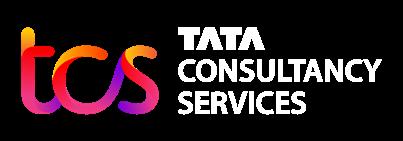
“FROM A TECHNOLOGY PARTNER STANDPOINT, WE ARE PARTICULARLY WORKING VERY CLOSELY WITH AWS. IT’S NOT JUST ABOUT USING AWS AS A CLOUD PROVIDER FOR OUR SOLUTIONS BUT A STRATEGIC PARTNER JOINTLY SOLVING FUNDAMENTAL INDUSTRY PROBLEMS”

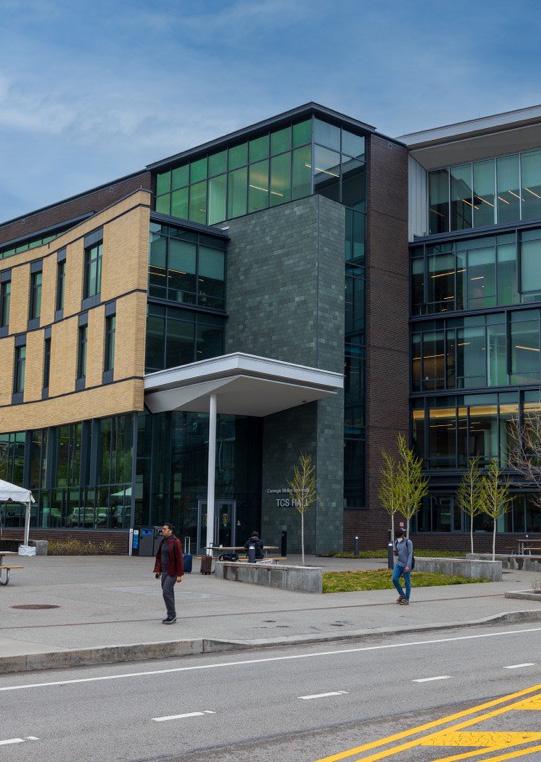
LAKSH PARTHASARATHY GLOBAL BUSINESS HEAD - SMART MOBILITY GROUP, TATA CONSULTANCY SERVICES
to benefit from ecosystem wide impact. TCS has built Cloud Value Measurement Model (CVMM), based on TCS and AWS best practice frameworks, to measure customers’ cloud transformation journeys.

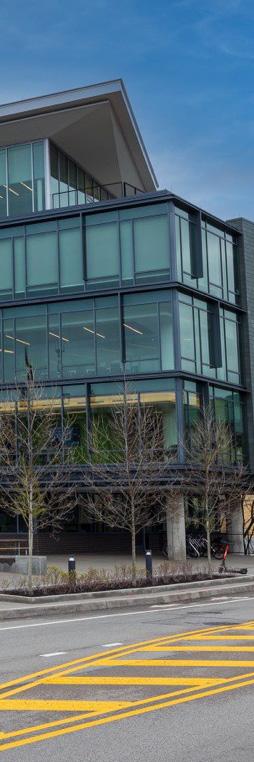
Over the next year and beyond, TCS will continue to analyse the e-mobility trends and provide the necessary digital transformation expertise to allow companies to leverage the automotive evolution to EVs.
TCS will also continue its collaboration in partnership with the Formula E team, Jaguar TCS Racing. Using digital technology, software, and leveraging the power of the cloud, TCS helps the team collect podiums and win races. Furthermore, TCS and Jaguar use Formula E as a real-world test bed for the automotive electrification journey. Learnings from the racetrack can be leveraged to transform the entire electric vehicle ecosystem.
From a sustainability perspective— besides the inevitable shift to EVs and other electrified transport—CASE can be applied to sustainability outcomes as it supports the reduction of lifetime Greenhouse Gas (GHG) footprint by about 37% for passenger vehicles.
Enabling vehicles to connect more means authorities, such as traffic operators, can optimise mobility. This is another selling point for consumers but still requires more innovation to provide personalised customer experience. Vehicle-toeverything technology also provides social benefits from a sustainability point of view, but predictive maintenance and OTA updates must also be adopted to ensure that solutions work in harmony together.

With 97% of employees wanting their role to be at least partially remote, a flexible approach is set to prove critical to future-proofing businesses

VMware’s Workspace ONE is a comprehensive digital workforce platform, offering teams integrated application management, access control, and unified, multiplatform endpoint management, all from one location.
Depending on their requirements, users have the flexibility of choosing whether to deploy the solution as either a cloud service or through on-premises deployment.
Through the platform, businesses can also improve the security of their remote working practices, thanks to Workspace ONE’s simplification of zero-trust access control models.
Slack is an instant messaging application that’s designed to help teams across the world collaborate and communicate more effectively. Through Slack, teams can instant message, set up dedicated messaging channels, and arrange calls.

The platform allows users to connect to a wide variety of other remote working apps – including Google Drive, Jira Cloud, OneDrive, Zoom and Workday –to link all tools together in a single location.
Its global user base has passed the 20 million mark, 85% of whom say that Slack has improved communication, and includes the likes of Airbnb, Deliveroo, gsk and Uber.
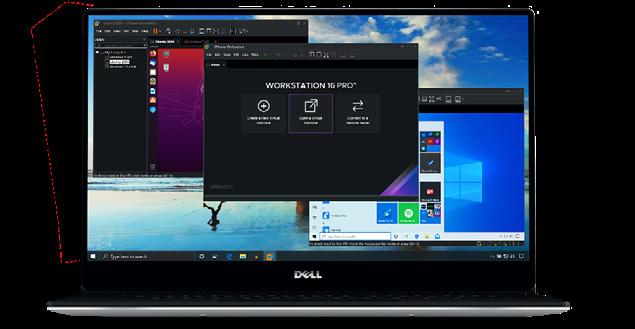
Through Monday’s visual, cloudbased platform, users across different teams and locations can effectively keep track of key projects.
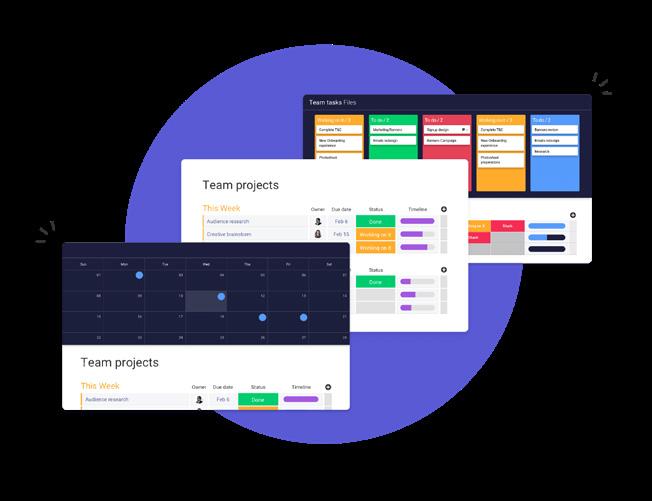
Primarily a project management tool, it allows users to create their own dashboards featuring a bespoke set of tabs and tracking tools. These include project status, deadlines, assigning roles and responsibilities, comments and custom classifications.
Then, through the system’s handy automated reminders, all users are kept informed and
Zoom was the remote working solution of 2020’s multiple lockdowns, credited with helping countless companies through the pandemic. As of July 2021, Zoom had over 500,000 customers –which represents a 36% increase compared to the same quarter a year prior, with the company’s customer base growing by a staggering 470.33% in 2020 alone.
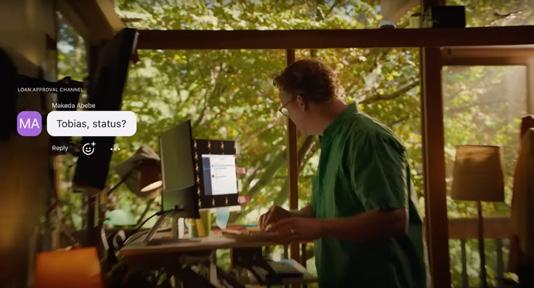
Alongside its iconic videocalling capabilities, Zoom offers a wide range of other collaboration tools, including team chat, VoIP phone, webinars, whiteboard, and its cloud-based contact centre.

LastPass is a password manager that enables companies to quickly improve their cybersecurity standards. The solution is particularly valuable for businesses that depend on an increasing network of online tools, all of which need to be accessed by their global team.
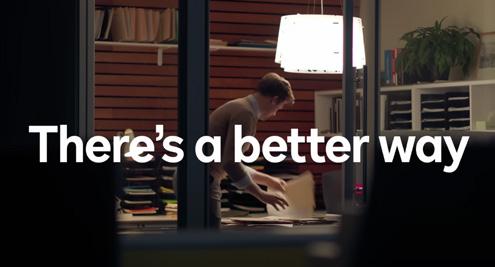
Users can access all their passwords through LastPass’ online vault and use the platform to generate secure passwords whenever they create a new account. The tool is available to integrate as a web browser plugin, or as a smartphone app.

Companies of every size and industry are now, finally, taking the long-awaited transition to electronic documentation. Rather than the conventional pen-and-paper approach, electronic signatures are enabling huge time savings.
DocuSign is the leading electronic signature and agreement cloud platform, trusted by companies across the world. The tool is used by a rapidly growing network of over a million customers and a billion users to securely sign off their critical agreements.


Oracle NetSuite is the world’s leading cloud business software suite, offering small-to-medium enterprises a huge range of online products and services designed to be integrated across all areas of their operations.
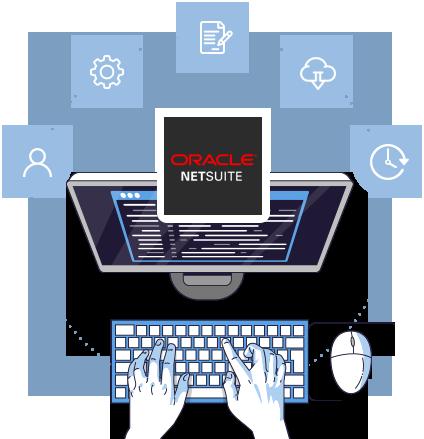
These cloud-based solutions span everything from accounting and financial management to supply chain and procurement, giving users a single, unified business management suite that helps unlock clearer insights and action alongside impactful, datadriven decision making.

As the world’s leading Customer Relationship Management platform, Salesforce has been instrumental in helping the world’s businesses shift to remote.
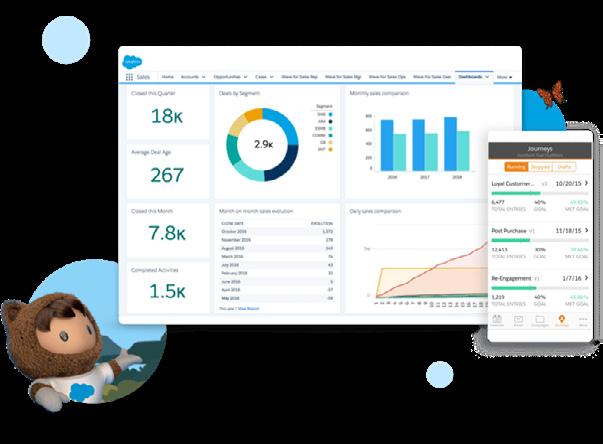
This broad platform allows companies to connect their marketing, sales, commerce, service and IT teams, while facilitating seamless collaboration between contributors working across the globe. The tool helps businesses to automate and unify their data points in real time, thereby creating a far more exhaustive insight into customer behaviour and experience.
In fact, Salesforce boasts that its capabilities can enable companies to increase their revenue by up to 29%.
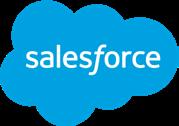

Coming from the hugely successful Microsoft 365 product family, Microsoft Teams is a communication platform that provides businesses with a comprehensive hub for team collaboration.
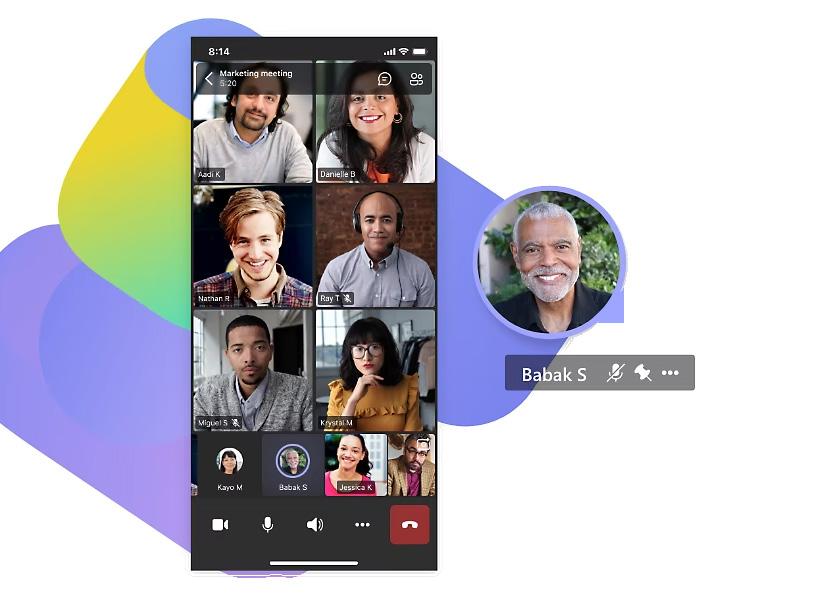
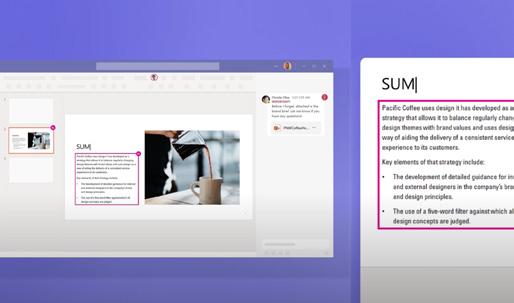

Ever since Teams was first announced, Microsoft has been directly competing with Slack for the greater share of the market. In fact, the rivalry even predates the Teams launch, with many reports stating that Microsoft initially planned to acquire Slack
Currently, though, Microsoft Teams dominates the market, with its 270 million users (as of 2022) far surpassing the 20 million of Slack. Teams offers an extensive stack of tools, including workspace instant messaging and video conferencing, plus integration with a variety of other applications. Users can also utilise cloud storage and sharing tools, including Dropbox and Google Drive.







Join the must-see virtual event disrupting procurement and supply chain on the 28th of June 2023.
This year, we are bringing you a solely virtual event, Procurement & SupplyChain LIVE Virtual will highlight the innovators changing the industry. Brought to you by BizClik, Procurement & SupplyChain LIVE Virtual will be held on 28th June 2023, streaming remotely to virtual audiences around the world.
The unmissable event will feature expert keynote speakers, interactive fireside and panel discussions, and more. Do not miss this 1-day deep dive into the disruption and the future of procurement, supply chain and logistics.
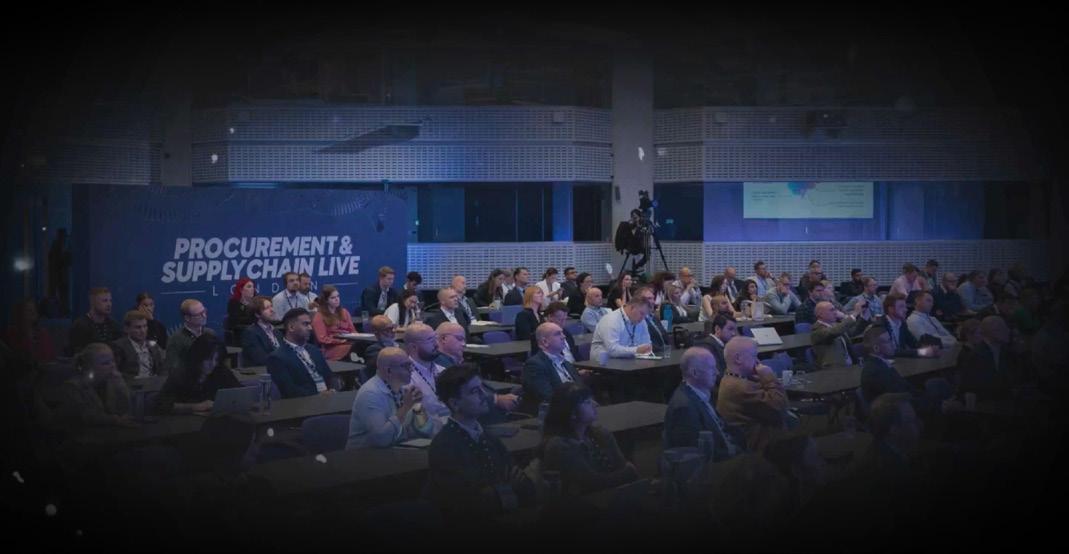
Do you want to position your brand in front of thousands of innovators, decision-makers and influencers?


Sponsor Procurement & SupplyChain LIVE to unlock the future of your business, access thousands of potential partners and influence businesses at the highest level.

Both global giants and innovative start-ups alike can discover the ideal platform with easy access to an engaged and active audience.
Contact a member of our team today to discuss sponsorship opportunities.
See you on 28th June 2023.
It’s time for DISRUPTION. GET YOUR PASS SPONSORSHIP
Innovators are paving the way for a more resilient, sustainable, and efficient future. The rules have changed. It’s time for disruption.


Securing the top spot is the Google Suite ecosystem. Google launched its G Suite remote working platform way back in 2006. Since then, it has developed a user base of over three billion individual users and some of the biggest organisations in the world (including the US Army).

The platform also boasts 5,300 publicly-accessible apps and over 4.8 billion third-party apps, available through the Google Workspace Marketplace.

G Suite dominates the global video conferencing market, with a staggering 84.95% share of the field (compared to the 5.51% share of Zoom, which takes second place).
What’s more, its plethora of tools and commitment to industry leadership mean that Google is likely to retain its crown for the foreseeable future.
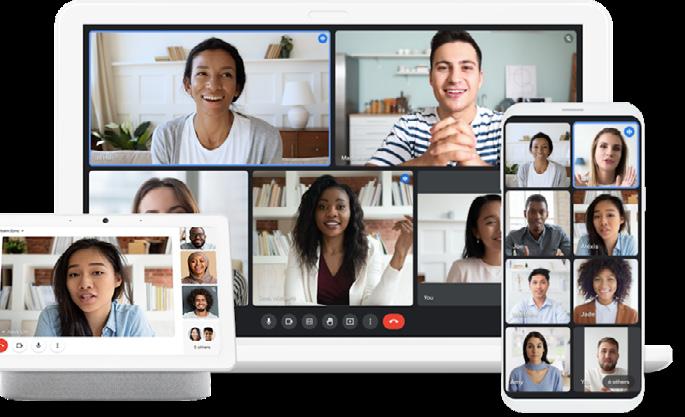
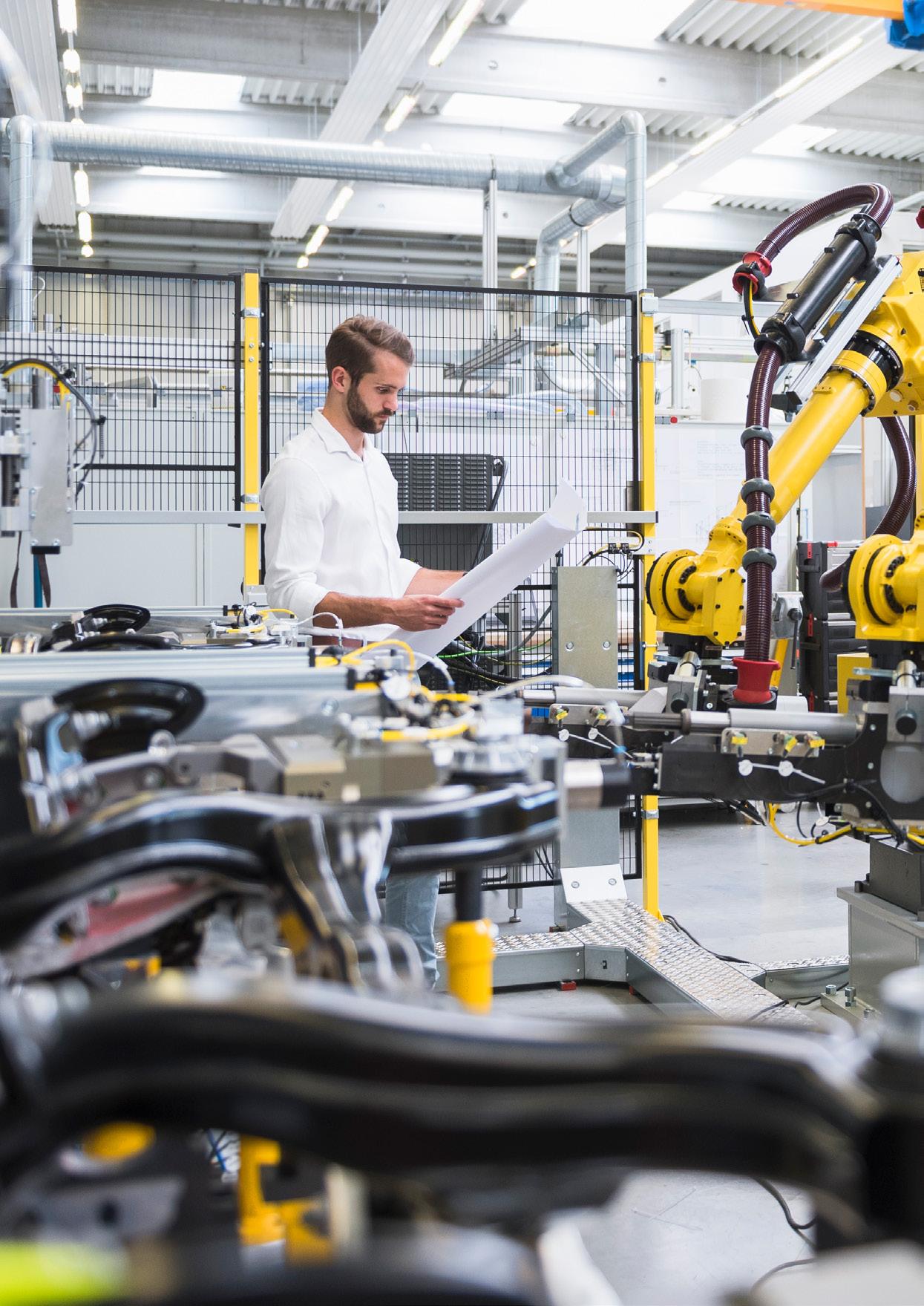 WRITTEN BY: HELEN ADAMS
PRODUCED BY: LEWIS VAUGHAN
WRITTEN BY: HELEN ADAMS
PRODUCED BY: LEWIS VAUGHAN
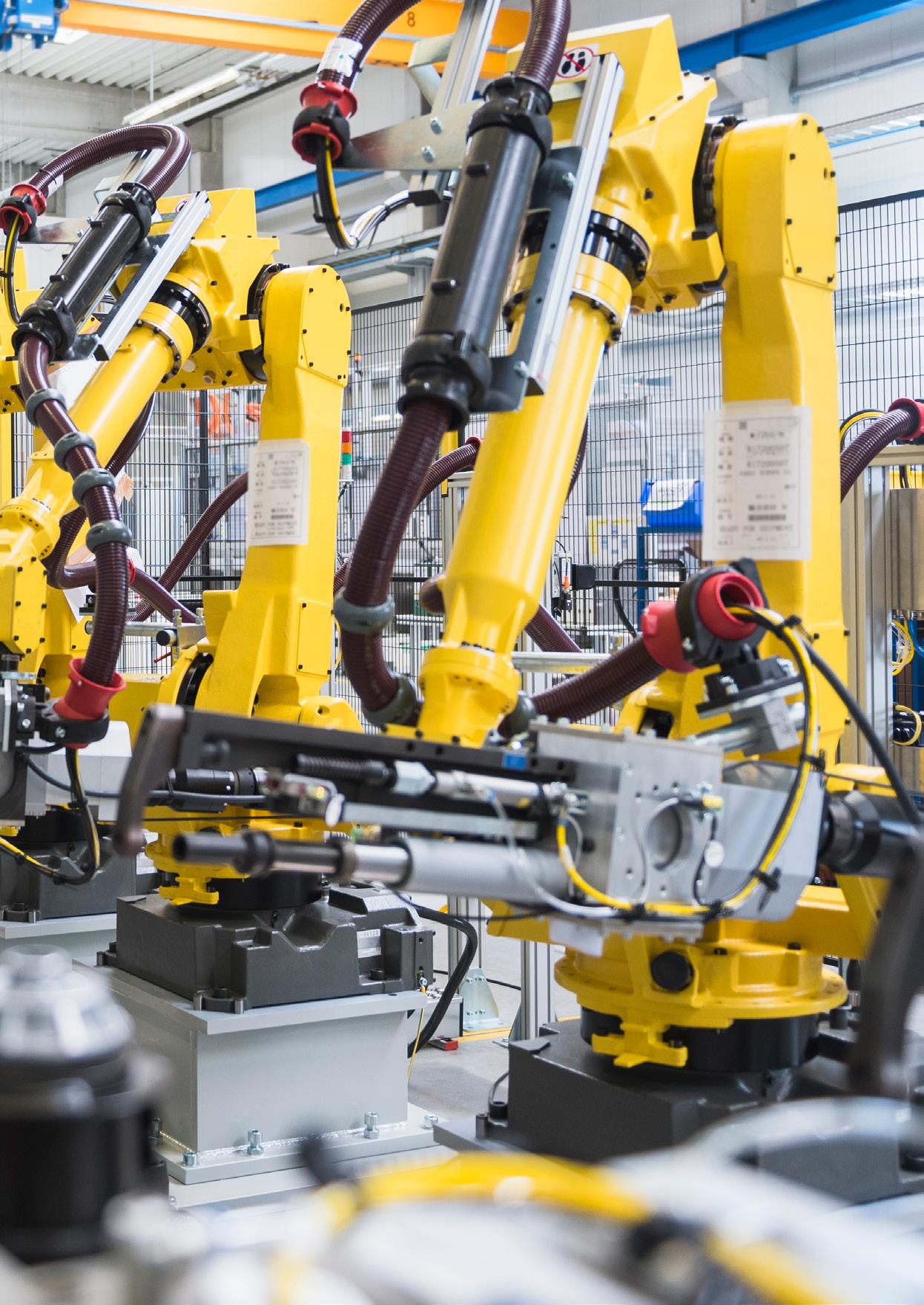
SAP is a global software provider and a leader for enterprise business process software, including solutions to manage supply chains. SAP provides technologies, supports the cloud and cloud platform environments, as well as artificial intelligence/machine learning (AI/ML) libraries, robotic process automation (RPA) and in-memory technology for high-end computers. SAP’s solutions for manufacturing execution and insights are part of a portfolio of products for supply chain management and leverages these technologies.
“We're an enterprise business software and a technologies company,” says Sam Castro Senior Director, Solution Management, LoB Digital Manufacturing.
Castro is a Senior Director at SAP and a part of the line of business manufacturing solution management team. The line of business covers the 27 manufacturing industries for which SAP provides software solutions.
“All of those industrial companies have needs around operations visibility, control and reporting,” Castro explains. “The different industries have different targets that they're after. Some are heavier on the asset side, some of them are heavier on product quality and yields, others are all about logistics and moving products around on-time through the supply chain.”
SAP is met with a diverse set of requirements and needs from its customers. Solution management takes these industry needs and applies them to market direction and invests them in the portfolio.
“We provide guidance on where to focus and the emphasis for development, and that strategy big picture where we want to take the products,” Castro explains.
In college, Castro completed a Bachelor's in computer engineering and a Master's in computer science at the Rochester Institute of Technology (RIT).
“I came from the hardware bridge to the software bridge very naturally after graduating,” says Castro. “I was dropped into the manufacturing floor because that is exactly where the hardware automation side bridges over into the software.”
He was faced with a great deal of information and digital signals from the automation layer and was tasked to turn it into information — how does SAP make that translation?
“I started at the very lowest level and moved my way through Lighthammer Software, which was acquired by SAP back in July 2005,” says Castro. “I worked my way through SAP into the role that I'm in today.”
“Being a sustainable enterprise means that you're an efficient enterprise”
SAM CASTRO SENIOR DIRECTOR, SOLUTION MANAGEMENT, LOB DIGITAL MANUFACTURING, SAP

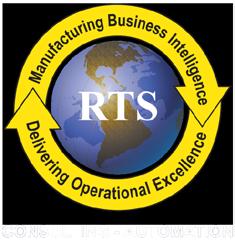
Reap the benefits of SAP’s shopfloor manufacturing execution system (MES) for your overall manufacturing process.
Enabling a new level of production continuous improvement, from raw materials to finished goods, while achieving Industry 4.0 benefits:
y Increased product quality
y Increased profitability
y Waste reduction
y Better staff utilization
y Easier regulatory compliance
y Increased customer satisfaction
Reach out to us for a consultation on how Industry 4.0 and Digital Transformation can help you achieve the “Factory of the Future”.
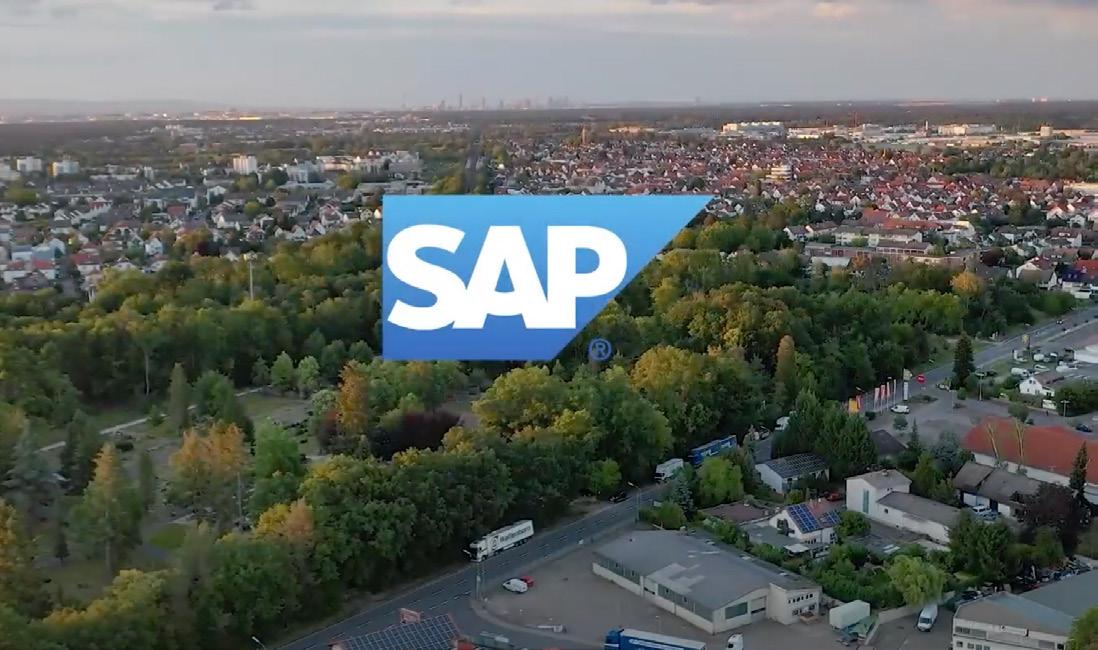
actually add up to, and how that impacts the business financially, is one of the key topics around what customers will hear about resiliency from SAP, says Castro.
“Sustainability is an overlay to that, sustainability is a byproduct of efficiency,” says Castro. “Being a sustainable enterprise means that you're an efficient enterprise. If things are running effectively, things are running safely, and in a very energy-friendly manner as well.”
Castro views the impact of the cloud on manufacturing as a positive one.
“There are benefits for the IT team from a maintenance perspective and a continuous update and management of that software package,” he explains.
Cloud users are not dealing out of sync or outdated documentation, they’re not dealing with security issues that creep into the environment over time. Updates and patches are handled in real-time by the
cloud hosting and software provider, that SaaS provider in the cloud environment. Castro views offloading that burden from the manufacturing layer and the IT teams that support them centrally and locally as a big deal for organisations and businesses.
“It keeps that barrier to entry for managing efficient production and tracking off of those teams, and it puts it firmly on the shoulders of the software provider. What does that mean for the business? It means that the end users aren't working with stale software. You're not working with software that has a UI from 15 years ago. You're not working with an ad-hoc analytical environment that used to be cool but now uses plug-ins and stuff that your browser doesn't support and ultimately causes it to have problems,” Castro explains.
As businesses are not dealing with these issues from the end user perspective,
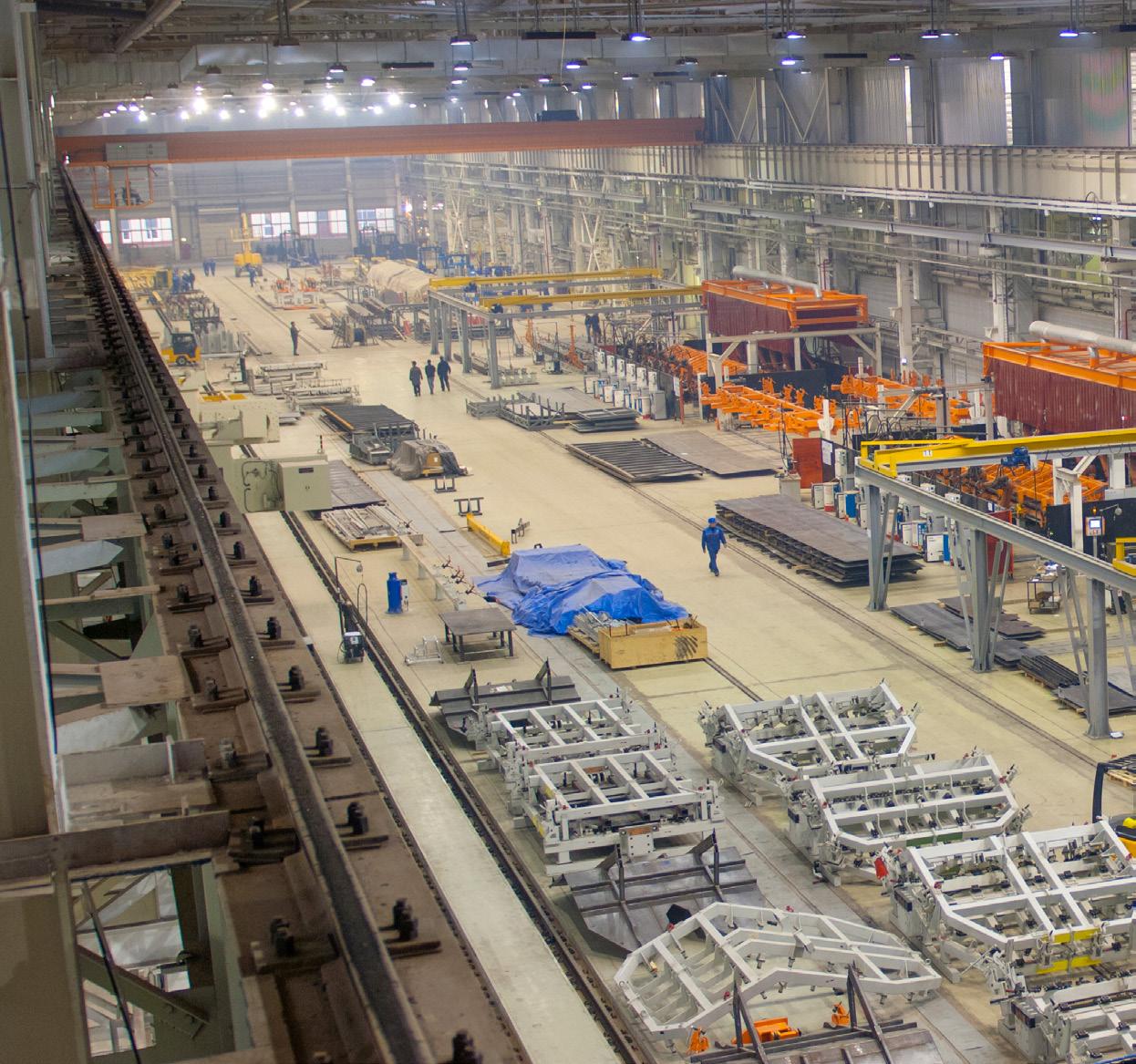
When you talk about risk resilience at SAP, it’s about how to handle the real world, not setting up a plan and adhering to it day in and day out.
“You would like it to be like clockwork, for sure,” says Castro. “Where everything always aligns and meshes the way that it's supposed to all the time, every second. But we know that's not always the case.”
Weather events, pandemics, labour shortages or large sporting events can cause
“Here are the enablers of AI and ML type algorithms that you can use and put together how you see fit”
SAM CASTRO SENIOR DIRECTOR, SOLUTION MANAGEMENT, LOB DIGITAL MANUFACTURING, SAP
supply chain issues. For Castro, resiliency is the byproduct of having to have to handle these off-topic or out-of-sync scenarios and the ability to detect that you're out of sync with the original plan and react to it in a coordinated manner.
“The faster you can do that, the faster you can correct that problem,” says Castro. “Then you’re able to identify how often those deviations occur — that frequency of occurrence, that is your opportunity.”
Being able to quantify that opportunity and understand what those little deviations
SAM CASTRO
TITLE: GLOBAL VICE PRESIDENT, CENTRE OF EXCELLENCE
INDUSTRY: MANUFACTURING
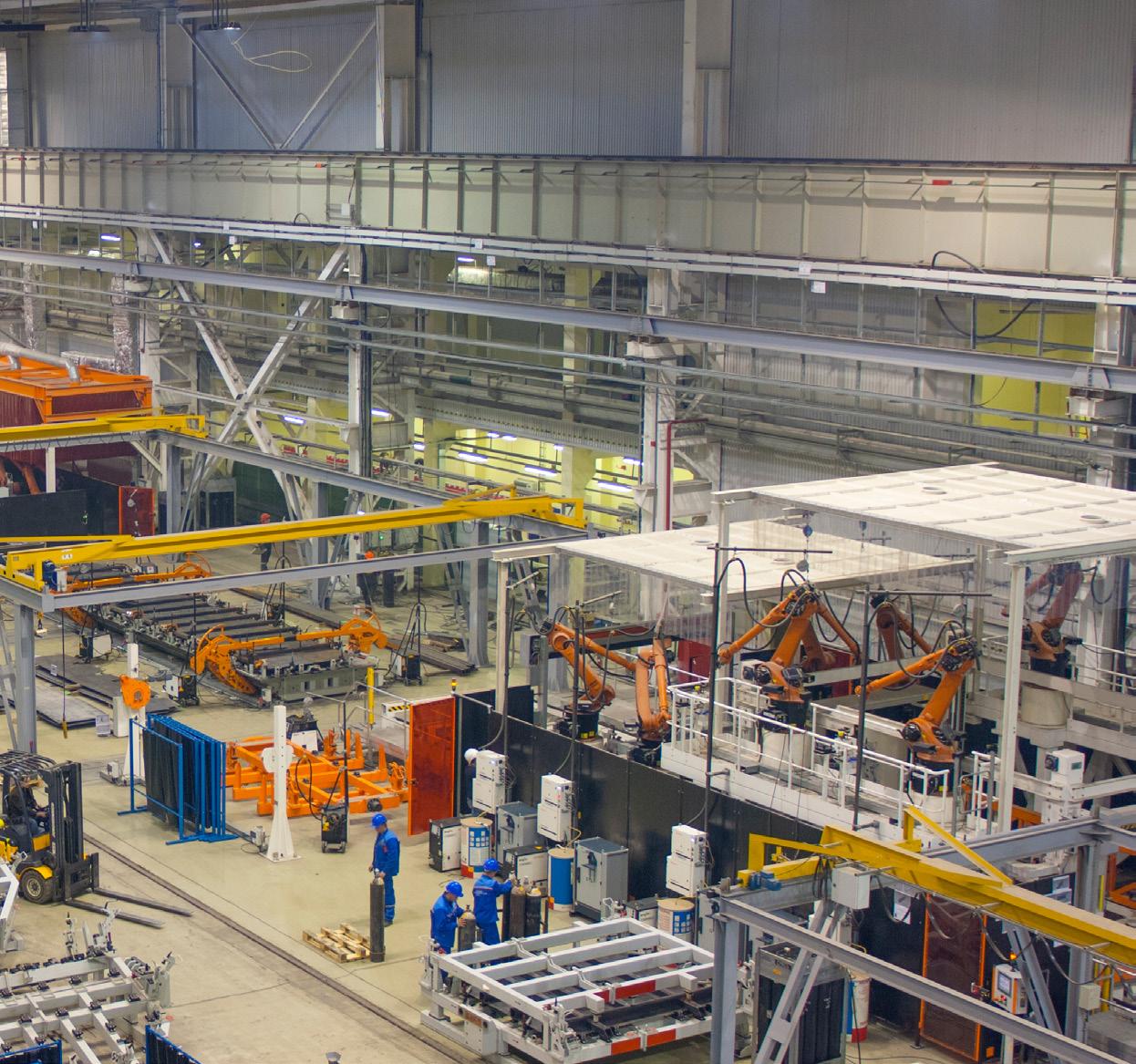
LOCATION: PENNSYLVANIA, US
Sam Castro joined SAP in July of 2005 with the acquisition of a small company called Lighthammer. He was responsible for implementation consulting, field enablement, custom development, and training for the core products (Illuminator, Xacute, UDS, CMS). These products have since evolved into the core SAP Connected Manufacturing products (Mfg. Integration & Intelligence or MII and Plant connectivity or PCo) that you see today.
Sam is now part of SAP LoB Manufacturing Solution Management group, which is directly responsible for strategy, direction, and customer adoption of all of the manufacturing products at SAP. He is specifically responsible for Industrial Analytics, that is SAP MII, Digital Manufacturing for insights, and Digital Manufacturing for execution, and he is the solution owner for Process MES products. In this role, he is actively working on mid- and long-term features and deliverables and how they are positioned with the broader SAP portfolio; he also provides guidance for product development investment.
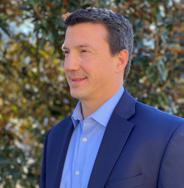
they're able to take advantage of a very modern, easy to consume and use software experience and focus on their core business functions.
“Despite not directly interacting with it, the work around you is what's driving that environment for you,” says Castro.
“You're not putting that burden of three or four extra clicks on somebody, this is just software that's being driven from digital signals; from integration, automation, and the tasks that the operator is performing.”
This newer approach to software design is how SAP leverages the industry investment companies have made and it is what's ultimately reducing the impact that end users have on that environment themselves.
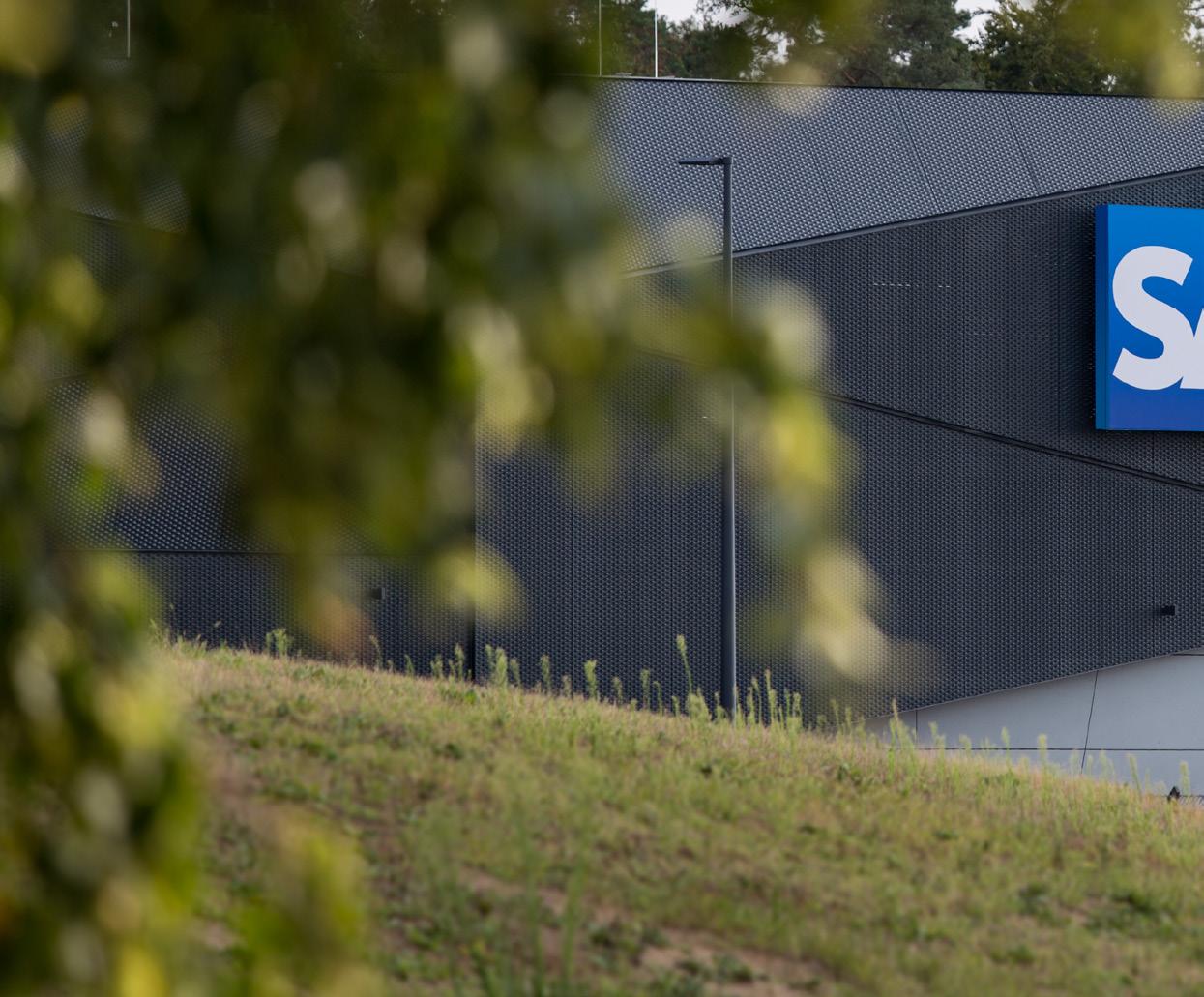
There are different pillars within organisations, which have their own priorities. CEOs, CIOs, CTOs and CFOs are all working together and have overlapping needs that drive different business cases. But they need to have the right information at the top layer to make the right decision for the lowest layers within the organisation. This doesn't happen unless there is a framework in place for the distribution and analysis of the data that is generated, from the very edges of the manufacturing and supply chain processes to the shop floor.
“If you don't have a way for that information to work its way up to the top, organisations really struggle to understand where the priority needs to be,” says Castro.
For manufacturers to focus on business value versus technology, Castro believes that they need to intelligently manage profitability
and investments. As a result of that additional profitability, they also need to protect that inflow of money and profitable behaviour for the company.
“Is that a CapEx investment? Is it an OPEX investment? Is it better granularity on product quality and an emphasis on quality for certain products or certain areas within a process that are very tricky and cumbersome?” asks Castro. “Maybe it's a new product that you're introducing and as a result, that process isn't fully stable yet. What is the emphasis in how much we put into that project to stabilise it? Those are the goals that are very coveted from the C-suite down, but they really are reliant from all edges of the supply chain and having that information roll all the way up.”
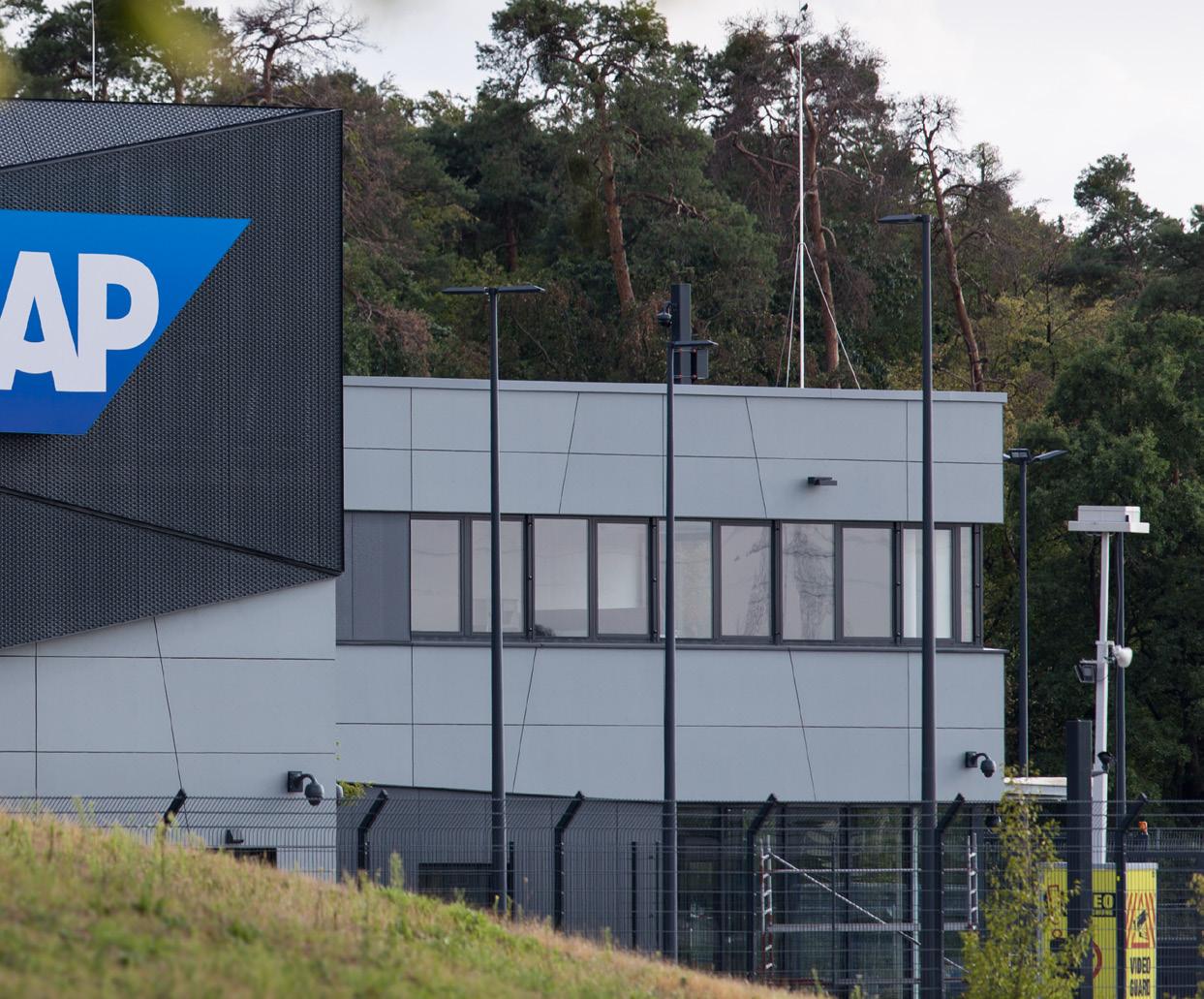
“Sustainability is an overlay to that, sustainability is a byproduct of efficiency”
SAM CASTRO SENIOR DIRECTOR, SOLUTION MANAGEMENT, LOB DIGITAL MANUFACTURING, SAP

With your SAP MII and ME system being paramount to achieving high-performance manufacturing, let RTS support your shopfloor solution to maintain peak plant operating performance at all times.

Our experienced and knowledgeable staff provide quick support response on a 24/7 basis. RTS not only provides support but will also deliver:
y System upgrades to newer versions
y Modifications to your existing MES solution

y Adding completely new capabilities to your existing system
y IoT connectivity

Reach out to us for details on how we can “support and service” your existing SAP MII and ME shop floor solution.

Enterprise-led manufacturing follows in tune with this exactly.
“The enterprise has to provide guidance to the manufacturing and supply chain teams as a whole,” says Castro. Where they want to see improvements and how much they're willing to invest in those improvements, what's it worth? How do you build that community up?”
To understand the role that manufacturing plays in an organisation’s reinvestment strategy, you must first understand where it matches up with other locales in the manufacturing environment.

“Manufacturing isn't just a single-faceted environment. It's often made up of plants that have been around for a long time, some
that were built up by your own organisation, some that came into the organisation through acquisition,” says Castro. “So you see different heritages and mentalities. They have this communal approach for how the plant manager wants to lead that group in the business forward.”
At SAP, being able to take advantage of AI standardisation in a universal way is important.
“You can take and apply these very technical algorithms in order to get information off them. Here's the technology, here are the enablers of data, here are the enablers of AI- and ML-type algorithms that you can use and put together how you see fit,” says Castro. “Then that carries over into the
application side, which says, we know we have these technologies, we know that this data is being generated from our transacting processes, so we have our own structured analytics pieces and now we can use these structures to drive our own models to influence our execution process.”
SAP has global partners, as well as local partners, who rely on its technology. When Castro talks about partnerships, he does not put one partner over another.
“We try to keep the community as open as possible,” he says. “We try not to promote one partner over another, because they're all very important to us.”
The openness of SAP and the openness of its software is for its customers to take advantage of, but also for their partners to put their own industry expertise behind.
“It is what gives SAP the power that we have to leverage in our own technologies to leverage partner-led innovation using those technologies to intelligently power our applications.”
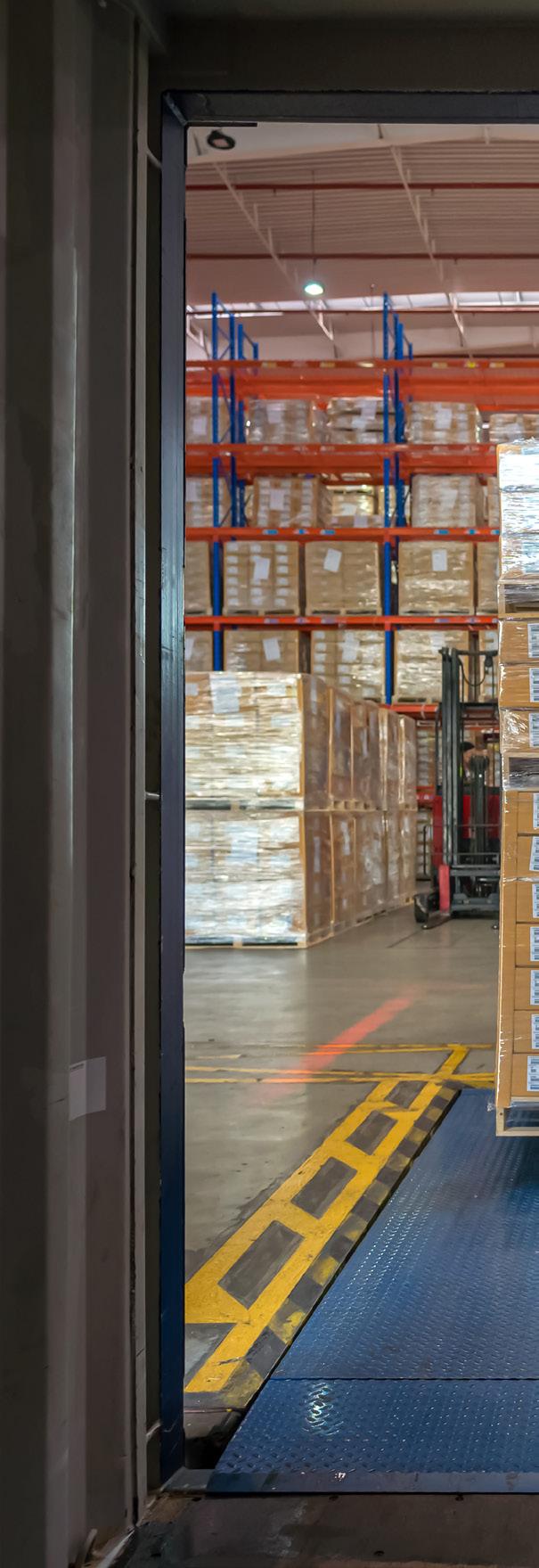
“ You want it to be like clockwork, where everything always aligns. But we know that that's not always the case”
SAM CASTRO SENIOR DIRECTOR, SOLUTION MANAGEMENT, LOB DIGITAL MANUFACTURING, SAP
